TheBetterVacation.com
Everything about tourist attractions

Harvard Tours – tickets, prices, discounts, what to expect
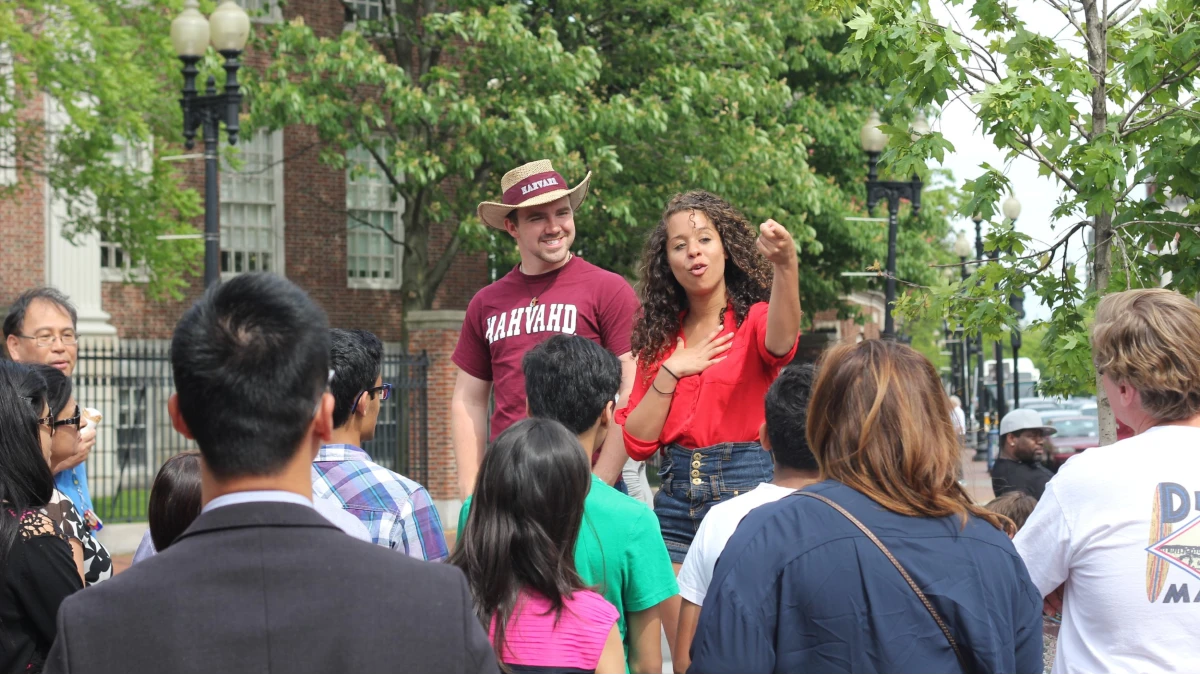
If you couldn’t make it to Harvard University, then worry not! You can still explore the campus – just book a through Harvard Campus Tour.
A Harvard tour gives you insights into campus life and tells you why it is the best institute in the world.
The tour revolves around exploring Harvard History, Harvard Culture, and Famous Harvardians.
This article covers everything you must know before booking tickets for the Harvard Campus Tour.
Top Harvard Tours
# 70-minute group tour
Table of contents
What to expect, where to book tickets, how do online tickets work, harvard tour ticket prices, harvard tour tickets, where do harvard tours start from, how long does the harvard tour last, is a tour of harvard worth it, sites you will see on the harvard tour, what to bring on the tour, things to know before starting a tour, faqs about the harvard walking tour.
The Harvard tours introduce you to the dynamic Harvard History, Harvard Culture, and Famous Harvardians.
Harvard campus tour covers many landmarks such as Harvard Square, Harvard Yard, the John Harvard Statue (the university founder), Harvard Lampoon, and many more.
All the tour guides are Harvard students who are charismatic, engaging, and enthusiastic.
These guides make Harvard tours more like a show or a theatre filled with non-stop fun and entertainment.
With the students’ guides by your side, you get to learn interesting facts about the university, its hidden secrets, and stories of popular Harvardians like Mark Zuckerberg, Barack Obama, Conan O’Brien, and many more.
Harvard tours are designed to entertain both adults and children. AAA Magazine called them “great for families!” The tour guides cater to guests of all ages and families.
Tickets for the Harvard tour are available to be purchased at the attraction or online in advance.
Online ticket prices tend to be cheaper than tickets at the attraction.
When you buy online, you can avoid standing in long queues and wasting time.
When you book early, you also get your preferred time slot.
Because some attractions sell a limited number of tickets, they may sell out during peak days. Booking online also helps avoid last-minute disappointment and delays.
Go to the Harvard tour booking page , select your preferred date and time and the number of tickets, and buy the tickets right away.
After the purchase, you will receive the tickets via email.
You don’t need to carry printouts.
Show the smartphone tickets at the meeting point on the day of your visit and begin your adventure.
Adult tickets for the Harvard Tour are available for US$23 for visitors aged between 18 and 64 years.
For children between four and 17 years of age, tickets are available for US$21.
Senior Citizens aged 65 and above can get the tickets for US$22.
Infants up to three years of age do not require a ticket.
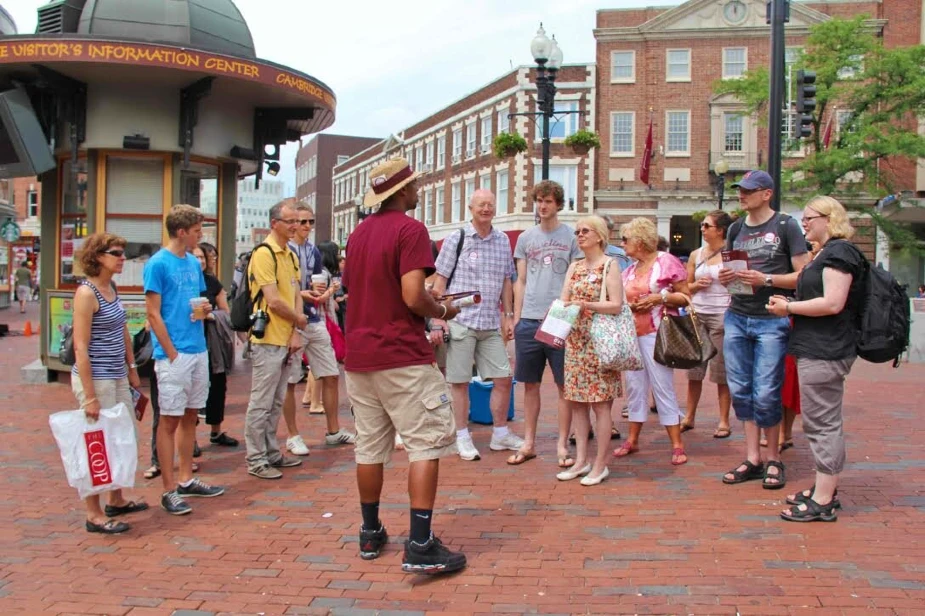
Experience Harvard University like never before with a guided walking tour.
Explore the campus while learning about the oldest university in the USA and its notable landmarks.
The tour will be led by a student guide who will share interesting anecdotes about life at Harvard.
In addition, the ticket also includes an illustrated map of Harvard Square.
The tour route covers a distance of less than one mile.
Ticket Prices
Adult ticket (18 to 64 years): US$23 Senior ticket (65+ years): US$22 Child ticket (4 to 17 years): US$21 Infant tickets (up to 3 years): Free
Along with their Harvard Campus Tour, some tourists prefer to book a group tour of the Massachusetts Institute of Technology .
The Harvard campus tour starts from Harvard Square.
Located at the junction of Massachusetts Avenue, Brattle Street, and John F. Kennedy Street, Harvard Square is thronged by visitors, students, and artists daily.
You’ll find your tour guides outside the Harvard Red Line Subway Station next to the Out of Town News Kiosk. Get Directions
The closest street address is 1380 Massachusetts Ave, Cambridge, MA 02138.
The 70-minute Harvard Tour is available throughout the week.
Visitors can choose between tour slots starting at 10 am and continuing every half hour till 4.30 pm.
The Harvard walking tour lasts for about 70 minutes.
There are umpteen stops on the 1-mile (1.6 km) long tour.
The tour guides will tell you the stories and significance of various landmarks you pass by.
Established in 1636, Harvard is America’s oldest university and perhaps the most famous institution of higher education on the planet. Harvard is very much worth visiting.
This prestigious university contains tall buildings, libraries packed with books, and iconic sites that are breathtaking.
Whether you’re a student or not, the campus has much to please your mind and soul.
Since the students will walk you through the campus, you get an insider perspective about the university.
All of this makes the Harvard Tour worth your money and time.
You’ll walk through the university gates, around the yard, and past some historic buildings with Harvard Tour guides.
The major sites covered under Harvard Tours are:
Harvard Square
It is a commercial center in Cambridge with streets lined with cafes, restaurants, retail stores, cinemas, and bookstores.
Johnston Gate
This majestic gate takes you to the world of knowledge and wisdom. It is one of the many doorways to Harvard Yard.
Harvard Yard
It is the heart of Harvard University, enclosed by wrought iron fences, walls, and a thick canopy of trees. The John Harvard Statue is situated in this beautiful yard.
Science Center
It is a place for science and math buffs who experiment and do research.
Memorial Hall
The cornerstone of the building was laid in 1870 in memory of those who laid down their lives during the Civil War.
New College Theatre
It hosts several theatrical and musical performances of Harvard students every year. NCT is also open to the general public to enjoy the performances of Harvard-affiliated groups and performers.
The Harvard Lampoon
Sometimes referred to as “Lampoon Castle,” this sturdy castle consists of an office, library, dining hall, and a lounge. It is famous for publishing comic and humor magazines.
Lowell Bell Tower
This blue-capped bell tower is in proximity to Harvard Yard and Harvard Square. It houses the iconic Russian bells.
It is better to come prepared for the weather to avoid surprises.
When coming for the tour, you can bring along the following items-
- Comfortable shoes
Before starting the campus tour, keep in mind the following points-
- The tour will go on despite rain or sunshine.
- Reach the tour’s starting point (Harvard Square) at least 10-15 minutes before the scheduled time.
The tour does not take you inside any of the buildings.
Here are some questions visitors usually ask before taking the Harvard Walking Tour.
The tour includes a guided walk through Harvard Yard and visits to various historic buildings on campus.
Comfortable shoes and weather-appropriate clothing are recommended.
Yes, it is best to buy tickets in advance to ensure availability and have a hassle-free experience.
The tours last approximately 70 minutes.
Yes, the tours are wheelchair accessible.
Yes, you can bring a backpack or bag on the tour, but it will be subject to security screening.
Yes, there is a gift shop at the Harvard University Information Center where you can purchase souvenirs and other items related to Harvard University.
No, pets are not allowed on the tour.
Yes, cameras are allowed, and visitors are free to take photographs.
Yes, restrooms are available at the Harvard University Information Center.
Sources # College.harvard.edu # Harvard.edu # Apply.college.harvard.edu # Seas.harvard.edu The travel specialists at TheBetterVacation.com use only high-quality sources while researching & writing their articles. We make every attempt to keep our content current, reliable and trustworthy .
Popular attractions in Boston
# Boston Tea Party Ships & Museum # Boston Trolley Tours # New England Aquarium # Boston Ghost Tours # Zoo New England # Codzilla Boston # Fenway Park tours # Boston Harbor Cruises # Whale Watching in Boston # Harvard Tours # Boston Duck Tours
How useful was this post?
Click on a star to rate it!
Check out all the things to do in Boston
This article was researched & written by
Nishtha Nogia
Nishtha Nogia loves to explore new places with family and friends. She travels to weave stories packed with fun, surprises, and laughter. For her, traveling is all about hogging local cuisines, interacting with people, and creating lifelong memories. She has a travel bucket list ready and is waiting to start ticking them one by one. Favourite Cities: Seoul, Paris, New York, and Istanbul.
Edited by Rekha Rajan & fact checked by Jamshed V Rajan
Leave a Comment Cancel reply
Save my name, email, and website in this browser for the next time I comment.
FireStorm Internet runs this website to provide the most accurate and up-to-day information about tourist attractions.
Our Address
FireStorm Internet, 203, 30C, Bollineni Hillside, Perumbakkam Main Road, Nookampalayam, Chennai, India. Pin Code: 600126
About Us The Team Contact Us Affiliate Disclaimer Content Policy HTML Sitemap Privacy Policy Terms of Service
Helicopter Tours Food Tours Ghost Tours Stadium Tours Hop On Hop Off Tours Zoo Tickets Madame Tussauds Linq High Roller Summit One Vanderbilt
© 2024 FireStorm Internet
Harvard Campus Tour: 15 Best Places to Visit at Harvard
From lofty libraries to picturesque walks, from Harvard Square to Charles River, here are the 15 best places to include on your Harvard campus tour!
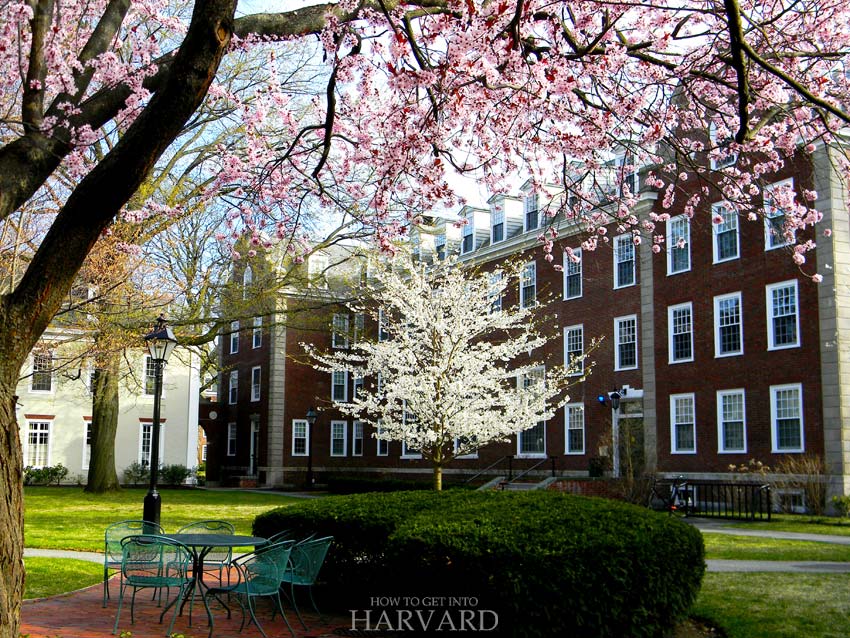
Whether you’re a new Harvard student starting your school year, or visiting Harvard University on a campus tour, there is so much to discover. My lovely university is a heaven for students, tourists and photographers alike. During my time at Harvard, I got plenty of visitors, both friends and family. And for everyone, it was an overwhelming experience taking in all the beauty of our breathtaking campus.
Harvard University is one of the most visited places in Boston, and even all of East Coast. A Harvard University tour is a memorable experience, since every visitor has seen parts of the campus either in movies, pictures or places that have been inspired by Harvard architecture.
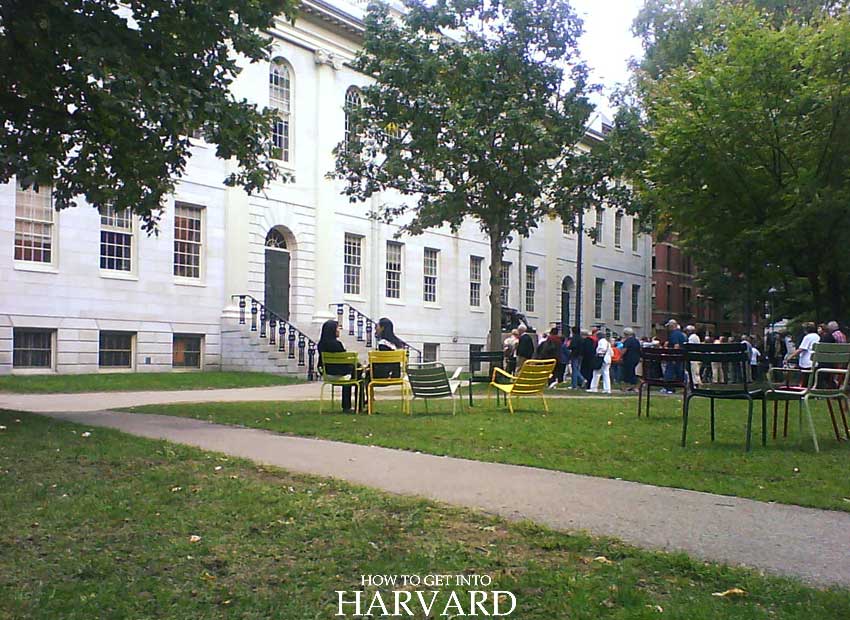
Harvard Campus Tour – Where to Go
Harvard University is full of new and old buildings, beautiful architecture and iconic spots to take your pictures. Of course, some of the best places at Harvard are reserved for the students, so if you aren’t one, it’s best to visit with a student or during the Open House.
But whether you have a Harvard ID or not, Harvard University will have a lot to offer you if you’re visiting. From hallowed libraries to historic dining halls, busy dorms to picturesque riverside walks, here is my list of the 15 best places to visit at Harvard.
Harvard Square and the Coop
Harvard Square may not be the most iconic place at Harvard if you’re just googling images of the university. But for every student and visitor, this is where the tour starts. Harvard has a whole T station (metro, subway or underground) dedicated to it, called Harvard Square, which can be the starting point of your Harvard university tour. It’s also the meeting point if you ever lose your tour partners!
Located at the junction of John F. Kennedy Street and Massachusetts Avenue is the building of Cambridge Savings Bank, which has become something of a landmark over the years. Along with this building, other structures and shops such as bookstores, toy stores, and a Bank of America also surround Harvard Square.
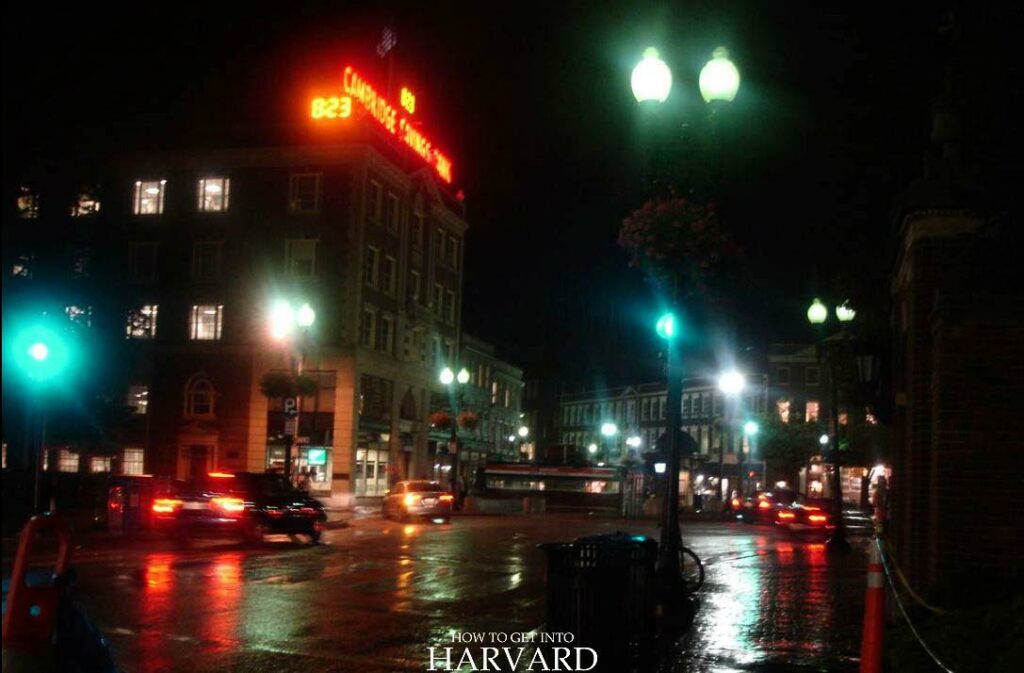
Harvard Square is unmissable, central and is the congregation point, where students run into old friends, meet new acquaintances and grab a bite to eat. The most popular and central spot is Starbucks, below the Cambridge Savings Bank, which is right at the corner of Mass Ave, and opened while I was a student at Harvard. Right outside is the Cambridge Visitor’s Information Center booth.
Some other popular spots next to it are the Au Bon Pain, next to Starbucks, and The Coop, across the road, where you can buy all possible books and official Harvard merchandise.
Harvard Yard & John Harvard statue
The green space between undergraduate dormitories is called Harvard Yard, which is enclosed by iron fences, walls and gates. Harvard Yard is the most iconic place at Harvard University, and is a must on any Harvard campus tour.
It is one of the oldest areas that became a part of Harvard University in the late 1600s, housing Harvard College dorms. Now it is also home to the famous John Harvard Statue, where you can see throngs of tourists taking pictures every time, everyday, touching his shoe to take pictures.

However, Harvard students would never touch it, because we all know that urinating on John Harvard’s shoe is one of three traditional deeds some Harvard College students strive to complete. It still remains the most touched spots of Harvard University. Sigh.
Harvard Yard is spread over 25 acres (10 ha) and it’s boundaries have 25 gates, opening at Mass Ave, Science Center. The yard is also home to libraries and memorial church, where the Harvard graduation ceremony takes place annually.
The Yard is the best place to soak the sun and read, be around College students. If you’re traveling in the fall season, it’s a beautiful place to take pictures. Here, you can see the New England fall colors in their full glory.
Widener Library
This is right in the part of Harvard Yard that is behind the John Harvard statue (called Tercentenary Theater). Widener library is the oldest one at Harvard University. And it’s the largest private and university-owned library in the United States. It is home to 3.5 million books, countless stacks and all types of reading spaces.
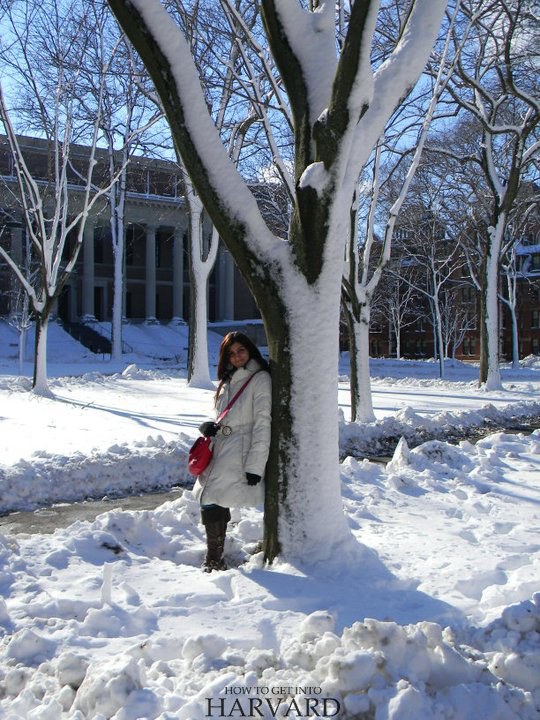
The library is named after Harvard College alumus and book collector Harry Elkins Widener, who died in the sinking of the RMS Titanic in 1912.
Although Harvard has many beautiful libraries, Widener is my favorite one. With high ceilings, chandeliers and royal chairs, it’s easy to forget Widener can also have so many hidden low-lit spots in its depths too. I used to spend all my free time there as much as possible, discovering new reading spots and books. My favorites were the comfy high-backed chairs that face the tall windows opening into Harvard Yard.
Memorial Church
Situated right across Widener Library, this is another iconic building in Harvard University and one of the best parts of Harvard. Most Harvard students see and pass by it daily, whether on their way to their dorms, dining halls or classes. And of course, almost all Harvard students graduate here, although not every student has been inside it!
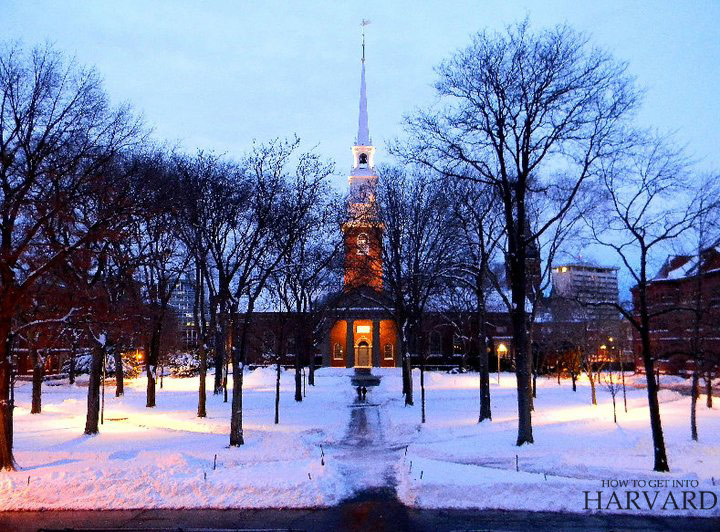
The interiors themselves are often used for ceremonies, commemoration, etc. For example, the only time I ever went inside was for a candlelight vigil for Japan’s 2011 earthquake and tsunami.
Although every year, the Church is home to bittersweet memories for everyone. The area in front of Memorial Church, the central green of Harvard Yard, is known as Tercentenary Theater. This is where the Harvard commencement ceremony takes place every year. Many celebrities and famous Harvard alumni have delivered graduation speeches on its porch, such as Steven Spielberg, Mark Zuckerberg, J.K. Rowling and John F. Kennedy.
Memorial Hall & Sanders Theater
Memorial Hall is yet another iconic building in Harvard University. The building is located near the Yard, at the junction of Cambridge, Kirkland, and Quincy Streets. It has high Victorian Gothic architectural style. Constructed in 1878, the building has many stained glass windows, ribbed vaults, spires and pointed arches.
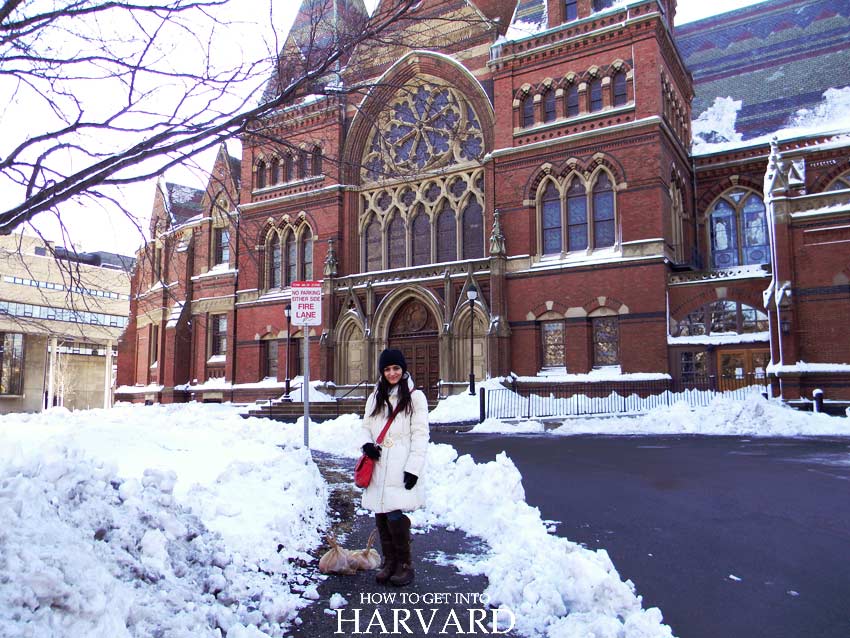
Also called Mem Hall or just ‘Mem’, the building used to be the background of the John Harvard Statue in the early 1920s and before. Mem Hall houses three parts: Sanders Theater, Annenberg Hall and Memorial Transept.
Memorial Transept is a vault that anyone can enter, and is serves as the congregation space for Sanders Theater. It has a high vaulted ceiling and large stained-glass windows above the entrance on either side. Great place to take pictures, if only it were better lit. Either way, it’s an important one to include in your Harvard campus tour.
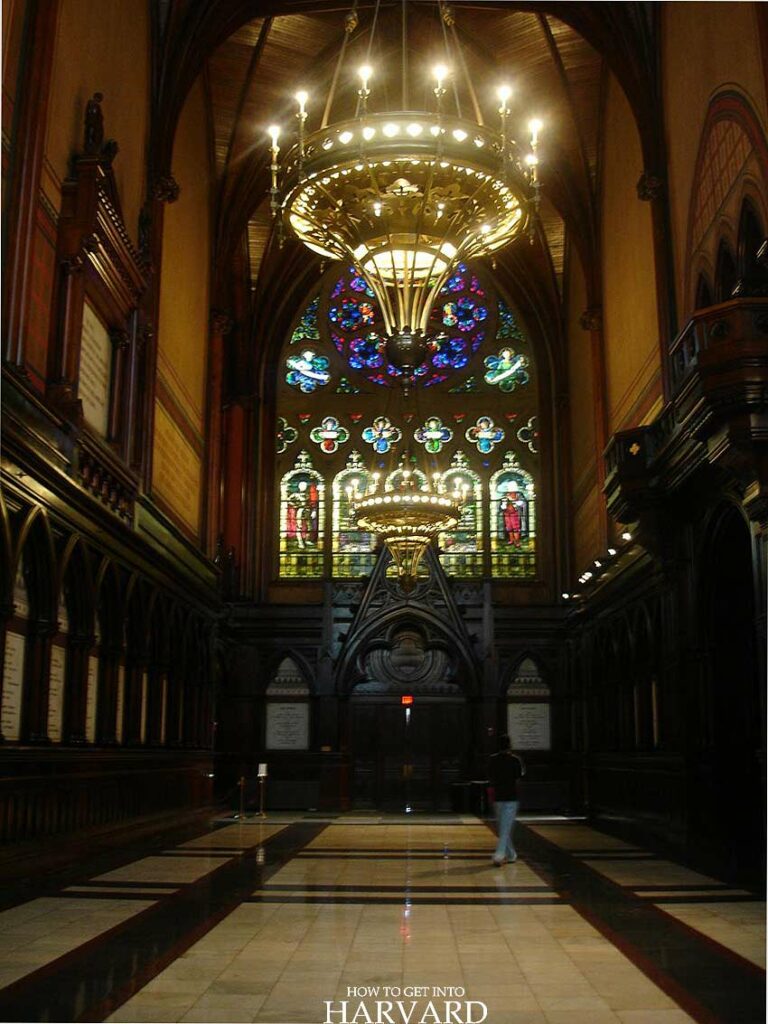
The Sanders Theater is Harvard University’s largest indoor space. Used for lectures, concerts and most notably, the annual graduation ceremony for Harvard College students. Sanders is where they receive their diplomas.
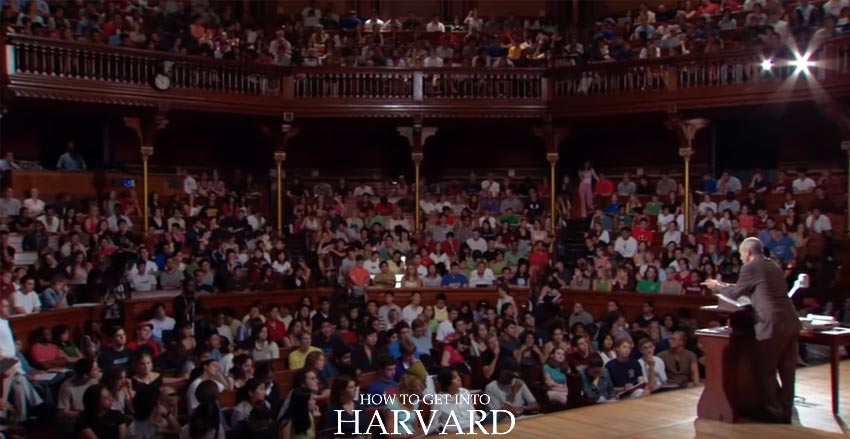
Even Harvard students aren’t allowed inside, unless it’s for a mandatory lecture or they have a pass for a particular lecture or ceremony. Most lectures that take place in Sanders are by celebrities or famous alumni, such as Winston Churchill, Martin Luther King, Jr. and Theodore Roosevelt have spoken there. One of the times I have attended a lecture there was when Bill Gates came to speak.
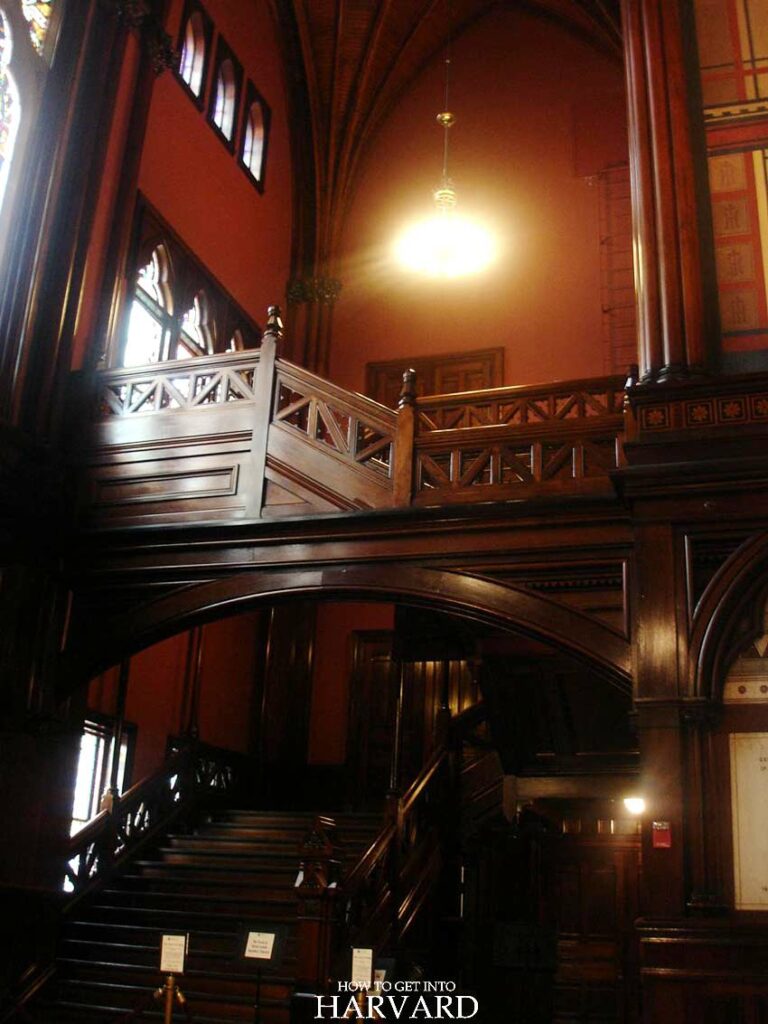
Although if you are accompanied by a Harvard student and you request, they may allow you to take a peek inside when the theater is not in use.
Annenberg Hall
Located inside the Memorial Hall, Annenberg Hall serves as the dining hall for freshmen of Harvard College. When it was constructed in 1874, people from all over the country came to visit, since it was one of the largest indoor meeting spaces ever constructed in the US.
It is also breathtakingly beautiful, and serves a large selection of food (yum!). With its large expansive, unobstructed space, Annenberg Hall is designed in Gothic style. It has stained glass windows, wooden trusses and vaulted ceiling. The hall is decorated with large hanging candelabras. Its walls have paintings of benefactors and presidents and its ceiling is so high I’m not even sure it exists!
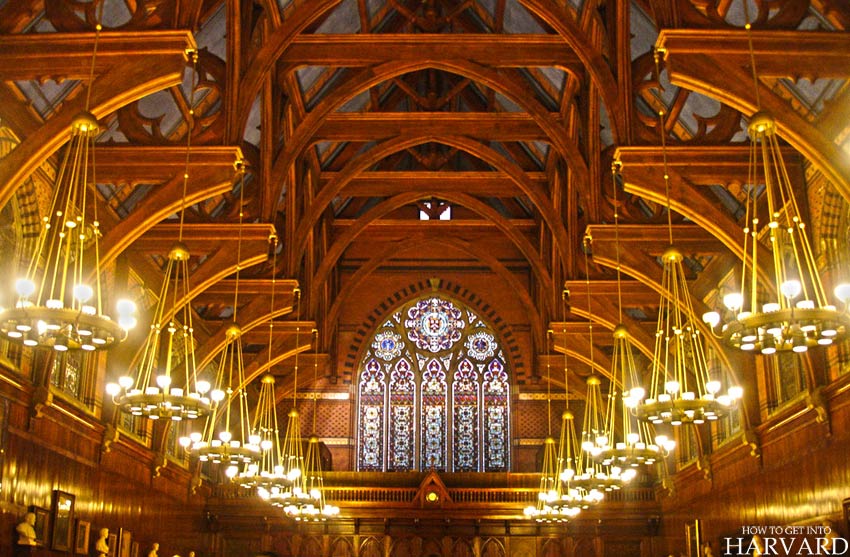
Originally meant to be a place for alumni meetings, Annenberg was soon converted to a dining commons. Now it is used for the freshmen students only. And as a grad student, I only got the opportunity to eat there during the days my own dining hall was closed. (Of course, then my dorm mates and I loved it, because we were treated to their desserts, ice-cream and beautiful entrées.)
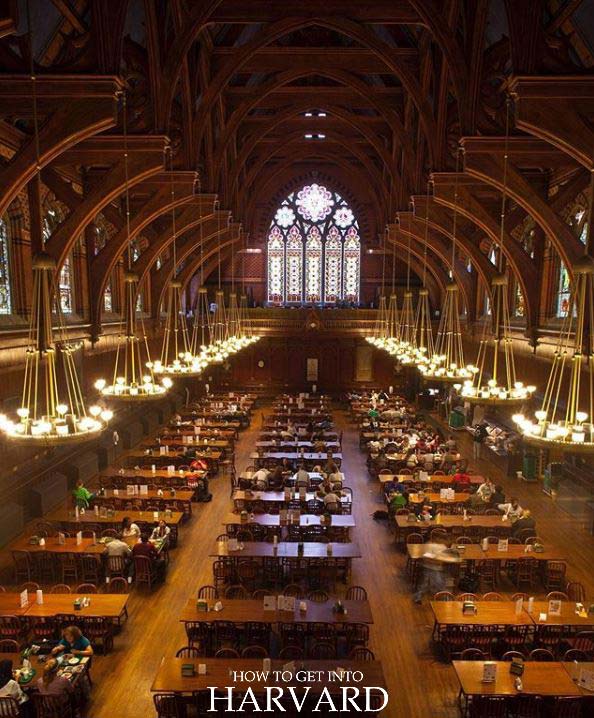
It is also used for dances, banquets, examinations and more. Also, Annenberg is what inspired the Great Hall in Harry Potter movies. Only Annenberg Hall is more beautiful.
Read more: Annenberg Hall & Harvard Memorial Hall: All You Need to Know
Science Center
Located north of Harvard Yard, Science Center is home to the computer labs, classrooms and science library for undergraduates. The first floor also houses a nice cafe where I frequently lunched.
To someone expecting the classic Harvard style of architecture, Science Center is not much to look at. In fact, not even many Harvard students find it pretty. That’s because it was constructed in the ’70s, amid the modernist movement, when designers sought to do something different than the existing antiquated Georgian architectural style.
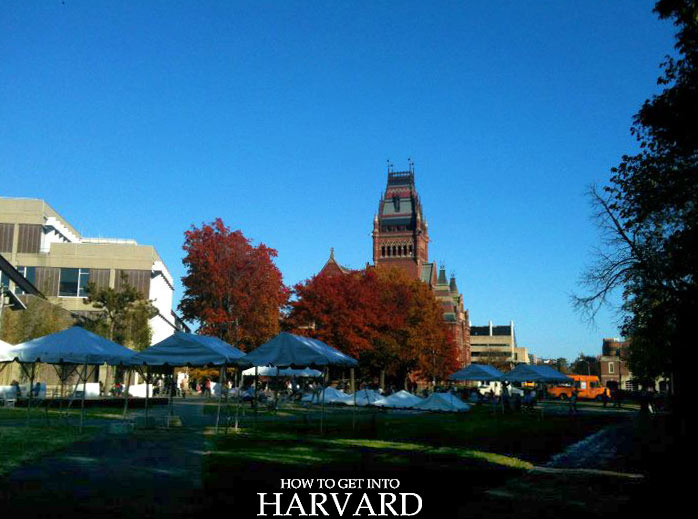
The plaza in front of the Science Center is home to the beautiful Tanner fountain, where kids are often found playing and water-splashing! Students often put up Yard sales, College club events and protest rallies there. Oftentimes, you can also find food-trucks, farmers’ markets and even Quidditch practices there.
Harvard Graduate School of Design
Graduate School of Design or GSD is my alma mater, which is mainly located on 48 Quincy Street in a building named Gund Hall. The Gund is also constructed in glass, steel and concrete (just like the Science Center) and is different from the iconic Harvard architectural style.
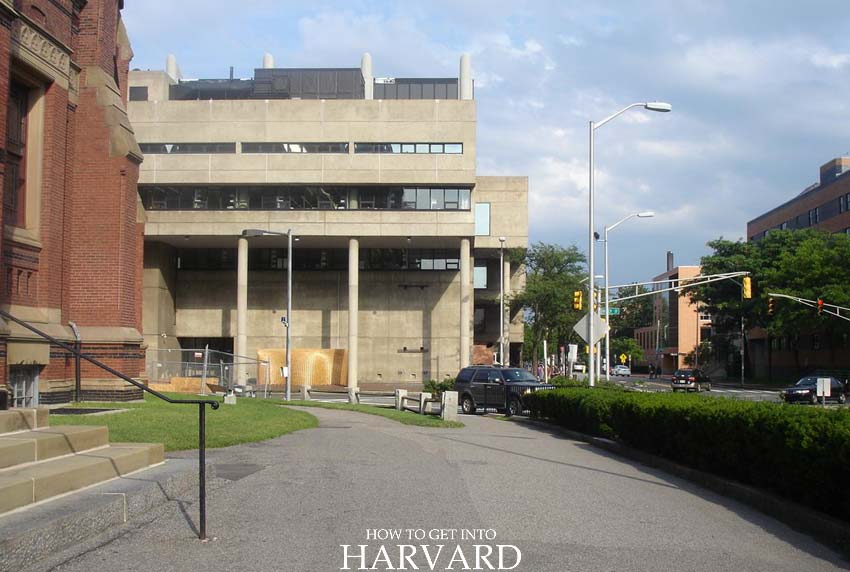
Gund Hall has a stepped design, where different studios form the levels, called trays. The building has a lot of clear glass, allowing natural lights into the trays, where students have their drawing boards or desks.

GSD also has a yard where student works are often exhibited, including those using 3D printing, robotic machines, CNC machines, etc.
The area near the entrance at the first floor of GSD is used to exhibit student work throughout the year. These exhibitions are specifically designed to give a new “interior look” to the space with each exhibit, often theme-based or interactive. This space also houses temporary events, student performances and the spillage from the events happening in cafeteria called Chauhaus and the Piper Auditorium.
Harvard Law School & HLS Library
Harvard Law School (HLS) is located near the northwest of the Harvard Yard. The HLS library is a beautiful old building with a big yard in front of it. Named Langdell Hall, it is immediately recognizable with its large windows, columns and Harvardian architecture style.
HLS library has a large, high-ceilinged chandelier-lit reading space with countless stacks filled with law-books. But they serve free hot-chocolate at night, so it’s a good place for non-law-students to study, too. You can get in with a Harvard ID, and discover their chessboard coffee tables, too! HLS library is my second favorite library after Widener, and was also my first workplace after my Harvard graduation, where I worked for a whole year to create digital learning spaces.
Wassterstein Hall Harvard Law School
Take a secret underground passage from the HLS library and it takes you to the newly built Wasserstein Hall. (You can also get to it from above the ground, tho, but where’s the fun in that?) It is one of the newest and most beautiful buildings in all of Harvard University, and was opened when I was a student.
The Wassterstein houses a large fireplace-lit study space with the coziest high-backed chairs, two cafeterias and a bar, pool table and the most gorgeous toilets you can find on-campus. Even balconies and a grand semi-circular staircase. What more reason could there be to include it in your Harvard campus tour? I used to lunch here everyday when I was an employee at the HLS library, and the first-floor cafe is great for an evening snack (they have great fries).
Natural History Museum
Located north of the Science Center and near the graduate dorms, the Natural History Museum is a great place where many students don’t even go throughout their time at Harvard! Although admission is open only to Harvard community.
It is such a hidden gem within the university, especially to go if you’re visiting harvard with kids. In fact, the only time I went here was when I was showing my parents around the campus the day before my graduation ceremony (they loved it!).
The museum is home to many permanent and temporary exhibits that any student will love. These include a paleontology exhibit, which has the fossils of Kronosaurus, a 42-foot-long prehistoric marine reptile. Also, there’s exhibits of birds, wildlife microbes and a famous glass-flower exhibition.
Radcliffe Quad
Located north of the Harvard campus, the Radcliffe Quad, or just “Quad”, is not much of a touristy spot, but is a great place to visit if you’re a Harvard graduate student and looking to explore the campus. The Radcliffe Quadrangle houses the Quad green and undergraduate dormitories, including the oft-photographed Cabot house and Pforzheimer house.
The walk from Cambridge Commons to Radcliffe Quadrangle is a beautiful one, and depending on the season, you’ll see brilliant tulips or fall colors.
Malkin Athletic Center & Harvard Stadium
Harvard stadium.
The Malkin Athletic Center (MAC) and the Harvard Stadium are located at completely different parts of the campus, but I have to include them together here.
The Harvard Stadium is south of the campus, across from HBS. The world-renowned stadium was built in 1903, and is a National Historic Landmark. It’s an essential part of any Harvard campus tour.
The Stadium is primarily a College football stadium, but they also use it for music festivals and other sports. It’s next to the humongous Blodgett Pool (one one that you see Robert Langdon swimming in in the Da Vinci Code movie).
Malkin Athletic Center (MAC)
The MAC is my favorite gymnasium at Harvard and is the perf spot for all Harvard students to work out. The gym is located south of the Harvard square, and is a large five story facility.
In the center is a large pool, and the upper floors have the cardio rooms with a view of the pool. Actually, I find the group exercise mezannine space overlooking the pool even prettier! This is where I discovered my passion for Zumba (miss it!). The building also houses many weight rooms, strength training equipment, basketball court and what not.
Charles River
The Charles river is an iconic body that divides the main Harvard campus. The north part of the campus on the north of Charles is the Cambridge campus, that borders at Memorial Drive. And the southern one is Allston campus, that starts at Soldiers Field Road. These two are connected by the Anderson Memorial Bridge, which is the perfect spot to take pictures and view both sides. It’s a must-see spot when visiting Harvard and MIT.
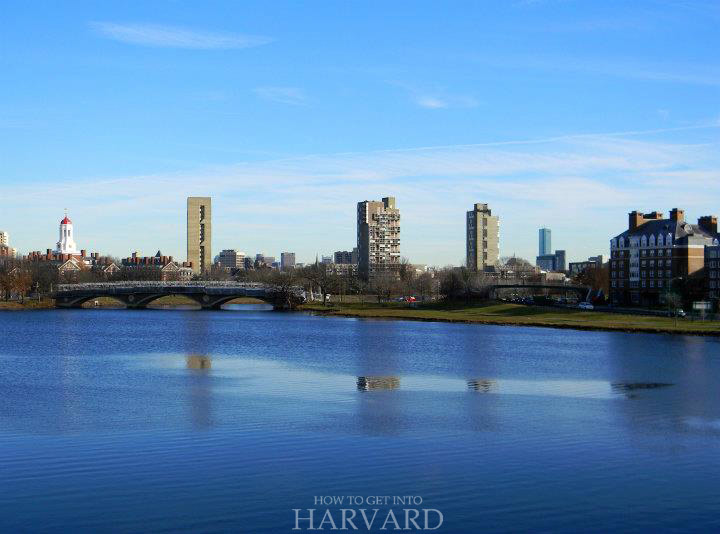
The space next to Memorial Drive is where you’ll see the bike path, students lounging around after classes, and skateboarders. The John F. Kennedy Memorial Park is right next to it, featuring a fountain. And while you’re here, also walk around to discover tiny lanes, tree-lined avenues. If you’re on a self-guided harvard tour, walk west, and enjoy a quiet cappuccino at Darwin’s, or go up north to have a cup of tea at Pete’s Cafe.
Harvard Business School
Harvard Business School is the top-pick for MBA tourists or student-visitors who like business management. Located in Allston, the HBS campus is a bit separated from the main campus by the Charles River. However, it’s a beautiful campus that all students and visitors should check out on their Harvard campus tour.
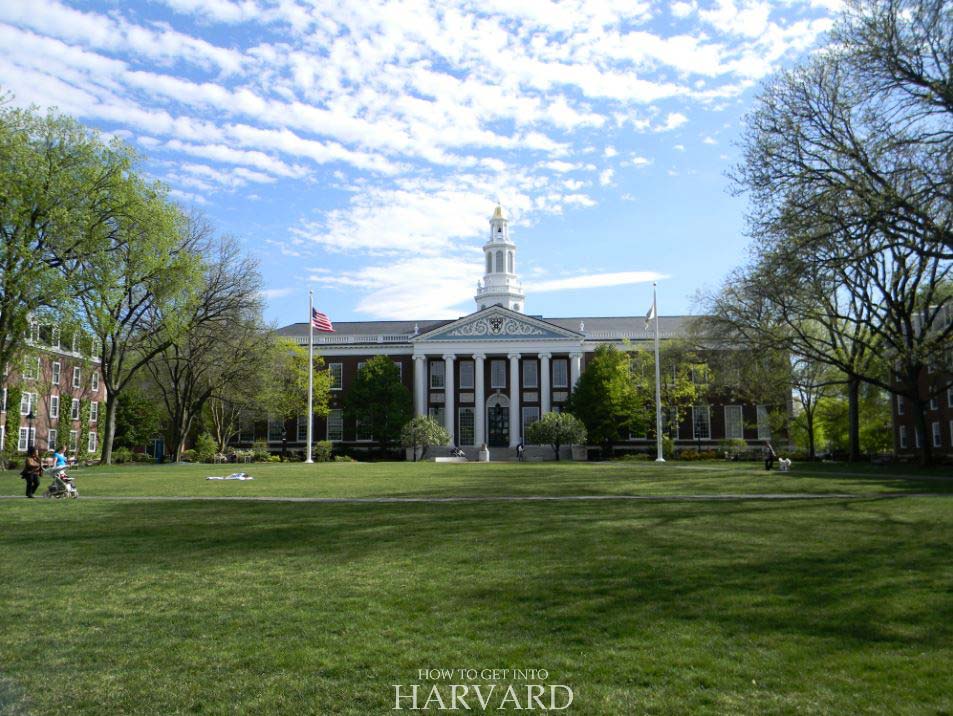
Right from across the river, you’ll see the iconic Baker Library, a world-famous building. It has the best place to take a picture at Harvard – in the HBS yard, with Baker Library forming the backdrop. And if you want one with the Harvard sign, check out the HBS sign at the back entrance.
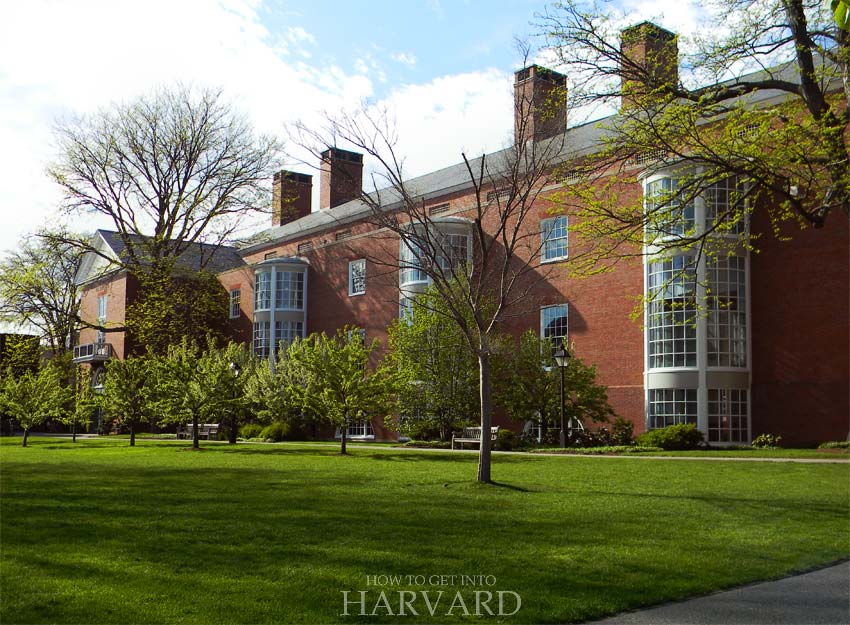
The next spot to check out is Spangler Center, which is the student center. A relatively new building, Spangler has the same Georgian architecture style that the old Harvard buildings have. Inside is a massive student lounge that’s actually the last place I can concentrate in, because it seems a bit daunting.
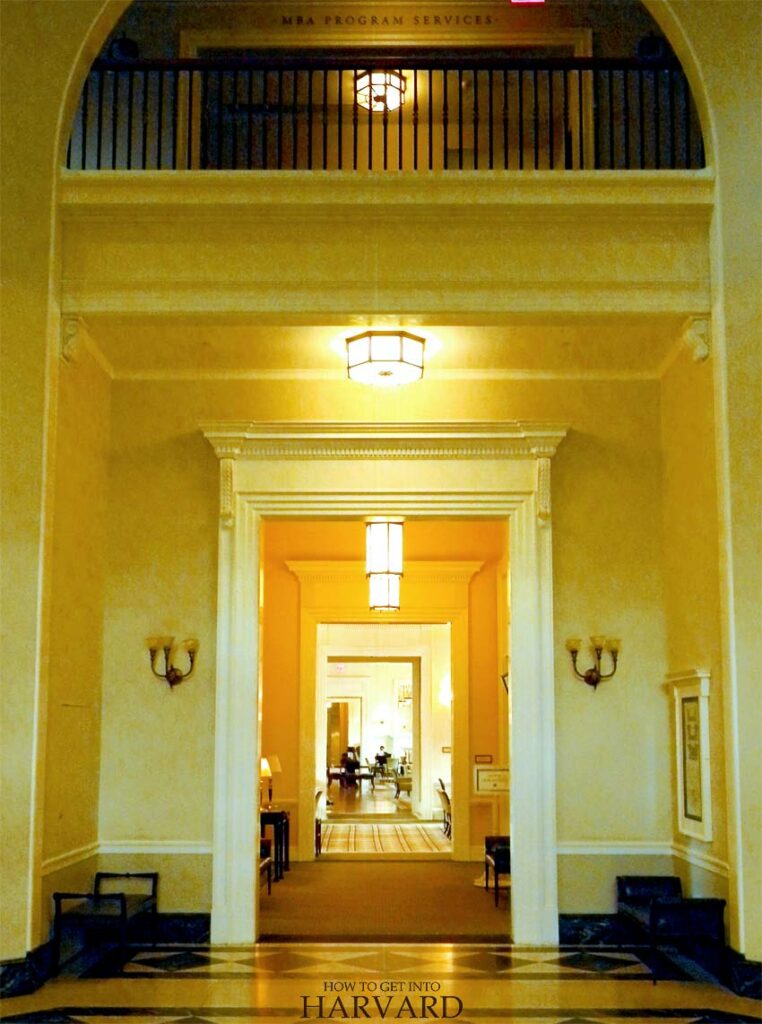
The HBS cafeteria is inside too, which is rather nice and serves different cuisines everyday. The dining hall is gorgeous with large tables and chandeliers (although nobody joins you if you’re eating alone). Step underground to their bar and also check out their underground passages while you’re at it. (It leads to the library).
– Experience the Harvard Student Life with Me: How is Life at Harvard – Is Harvard Worth It? Analyzing Costs to Benefits for a Degree – What Kinds of Students Get into Harvard?
Leave a Comment Cancel reply

Enjoy a Five Star Public Tour of Harvard Yard with a Harvard-approved tour provider
Enhance your harvard visit with a student led tour, three simple steps to enjoy the tour..
1. Choose your date and time on our website and book risk free (cancel or change at any time).
2. Your tour guide will greet you at the starting location in Harvard Square.
3. Enjoy your student-led campus tour ending at The Harvard Shop, a student-run gift shop.
What you get and what it costs.
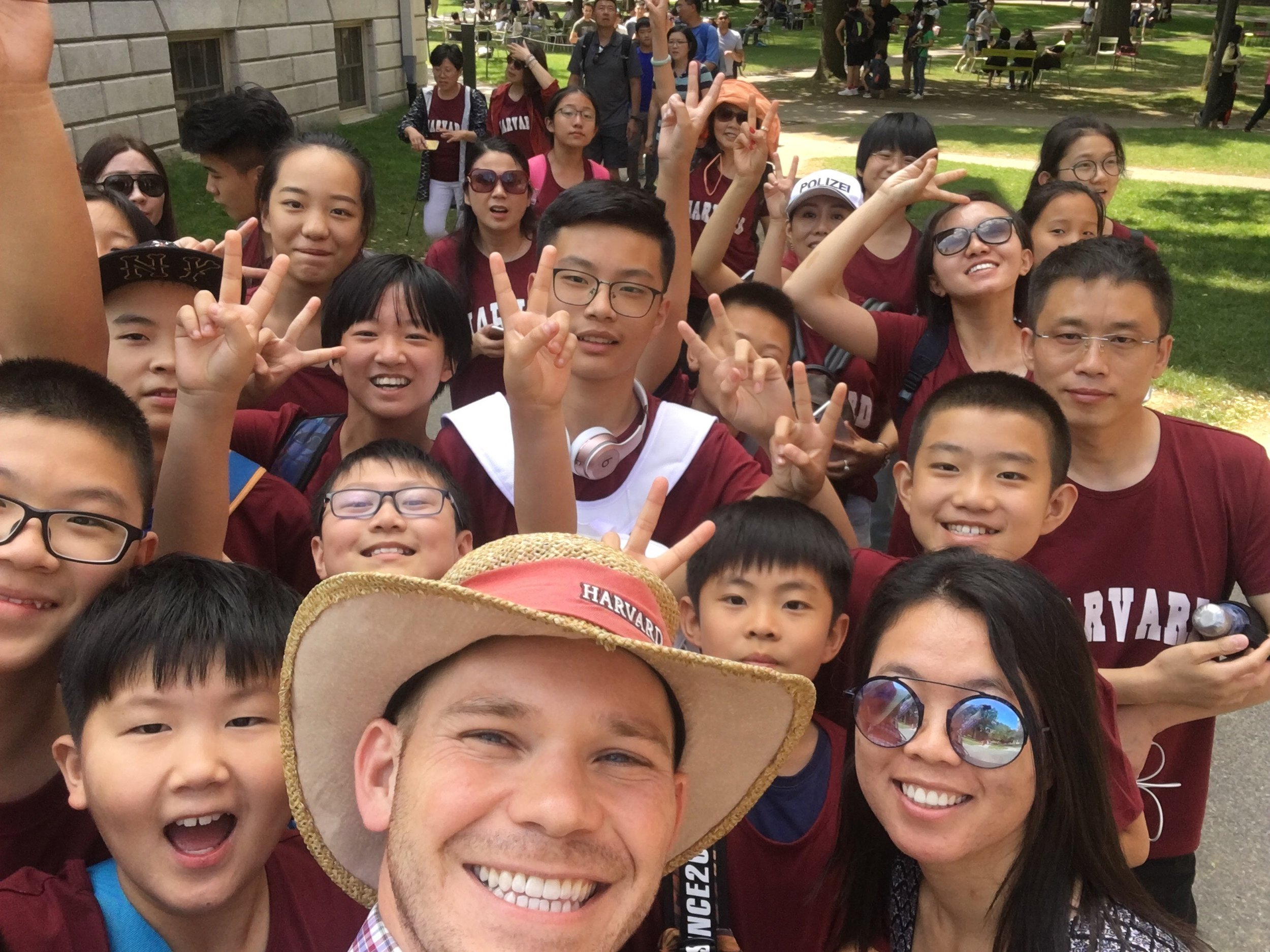
Tour Themes
Your tour covers 3 main themes: Harvard History, Harvard Culture, and Famous Harvardians.
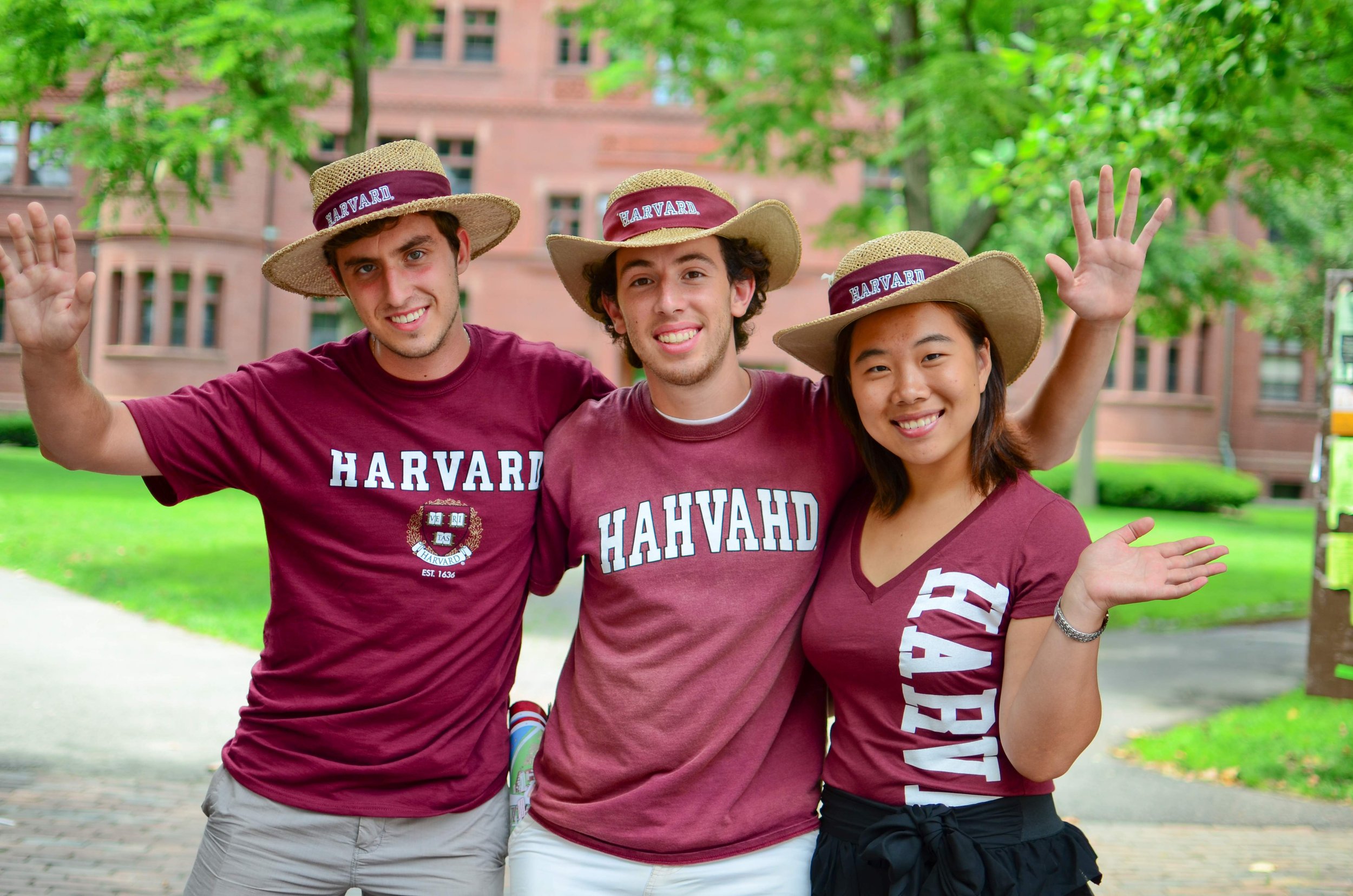
Tour Time and Distance
Our tour lasts about 75 minutes. The tour route is about one mile. We walk at a leisurely pace and the route is accessible.
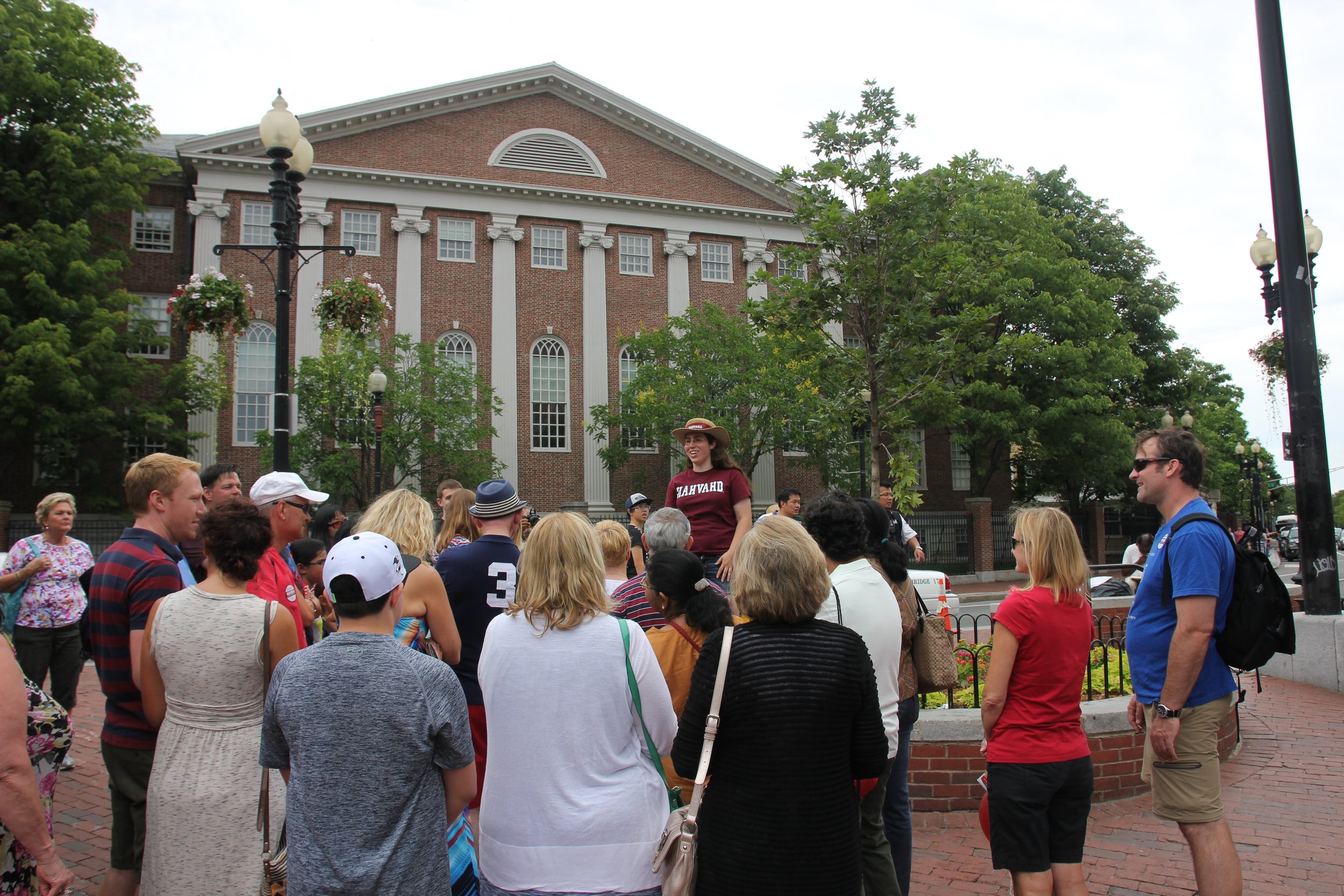
Adult (21+): $19.50 Senior (60+): $18.50 Child/Student (4-20): $17.50 Plus $2.50/pp Harvard Yard Maintenance Fee Ages 3 and under: no charge
Just a few of the sites you’ll get to see on your tour of Harvard:
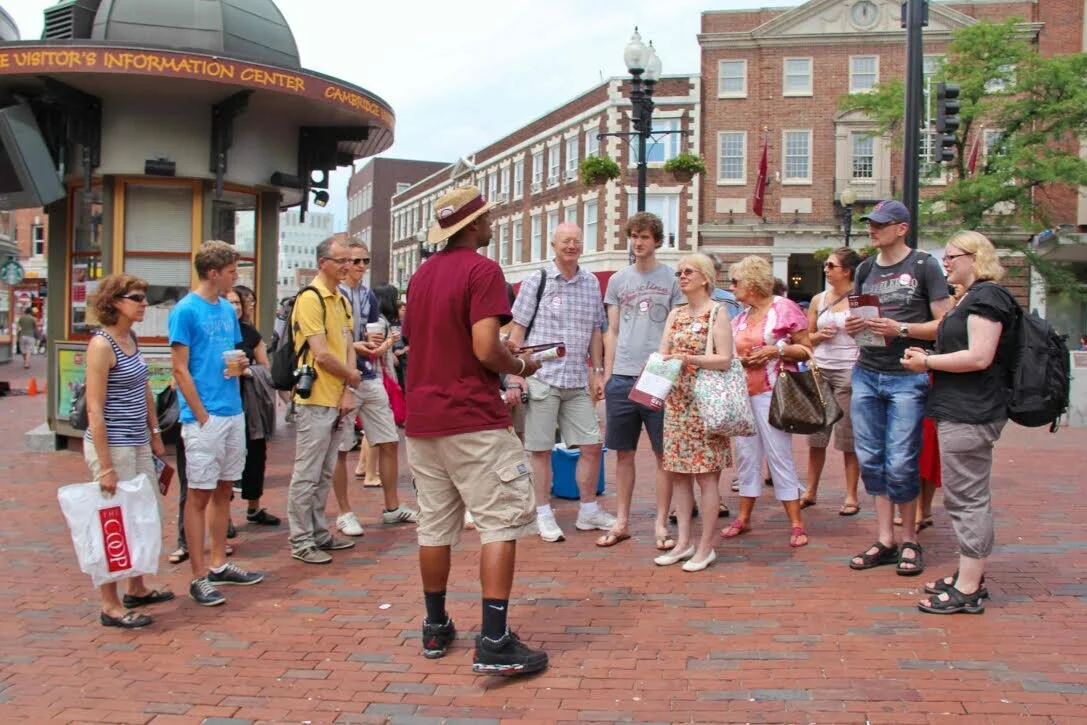
Harvard Square
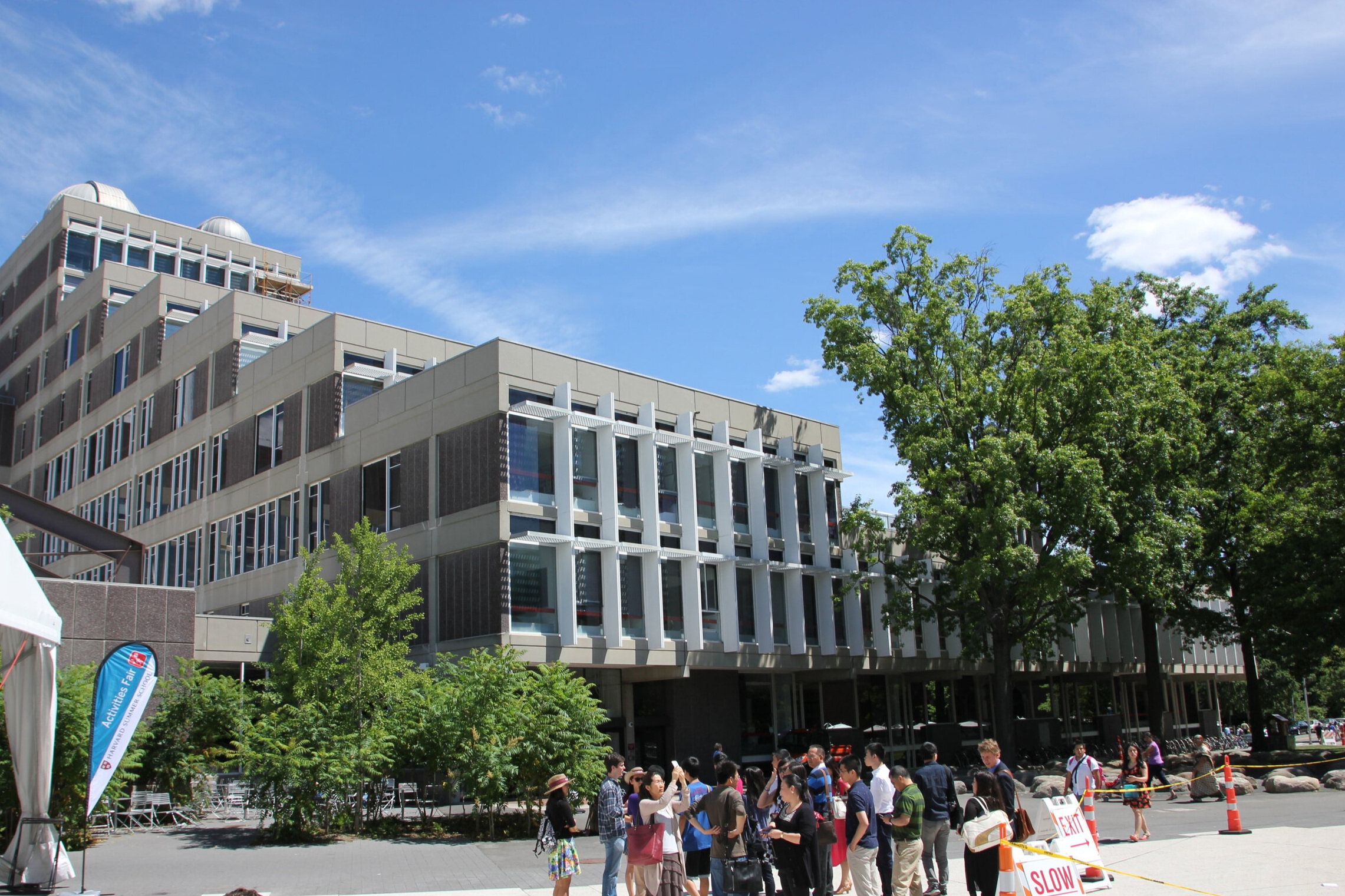
Science Center
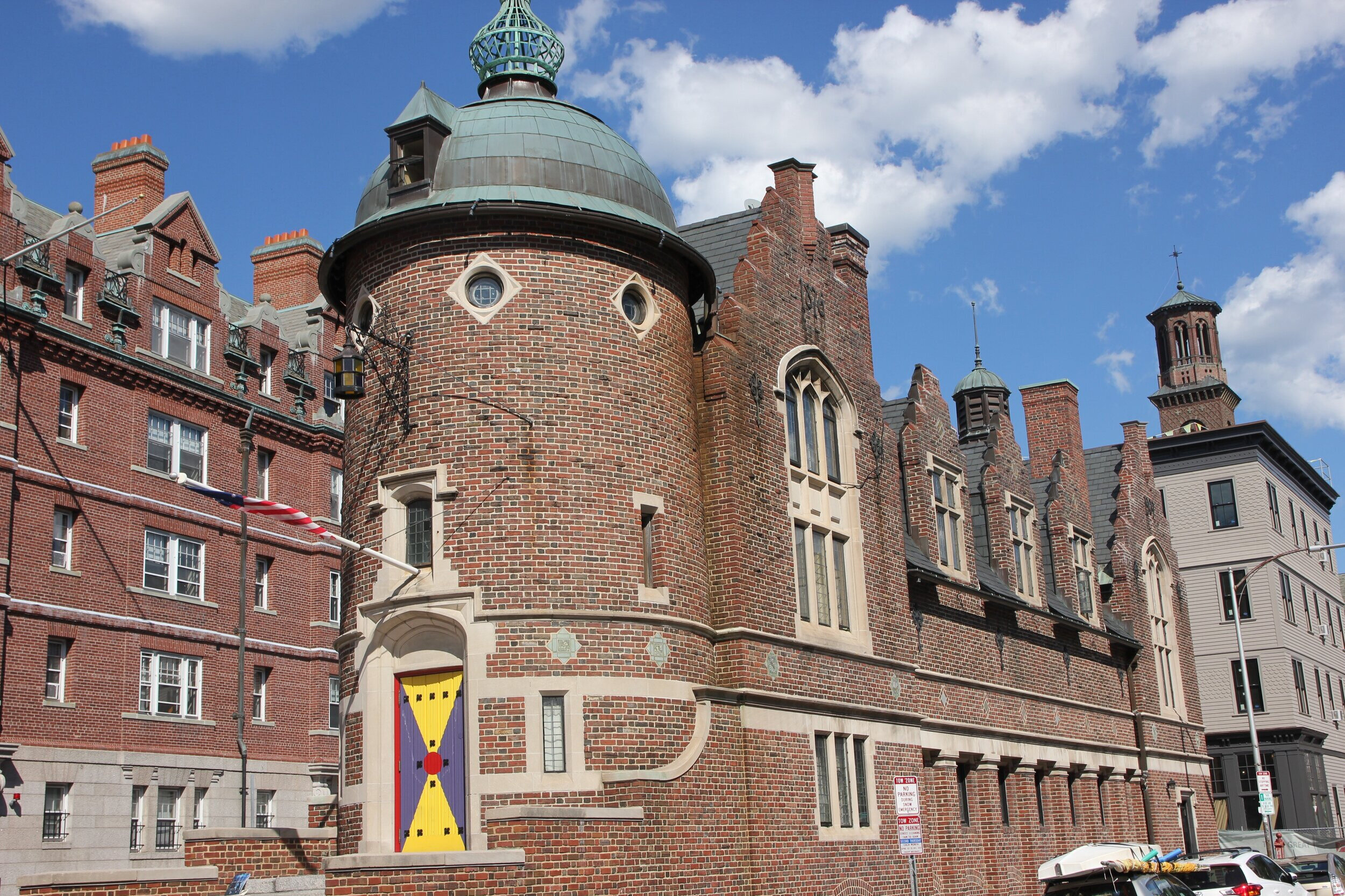
The Harvard Lampoon
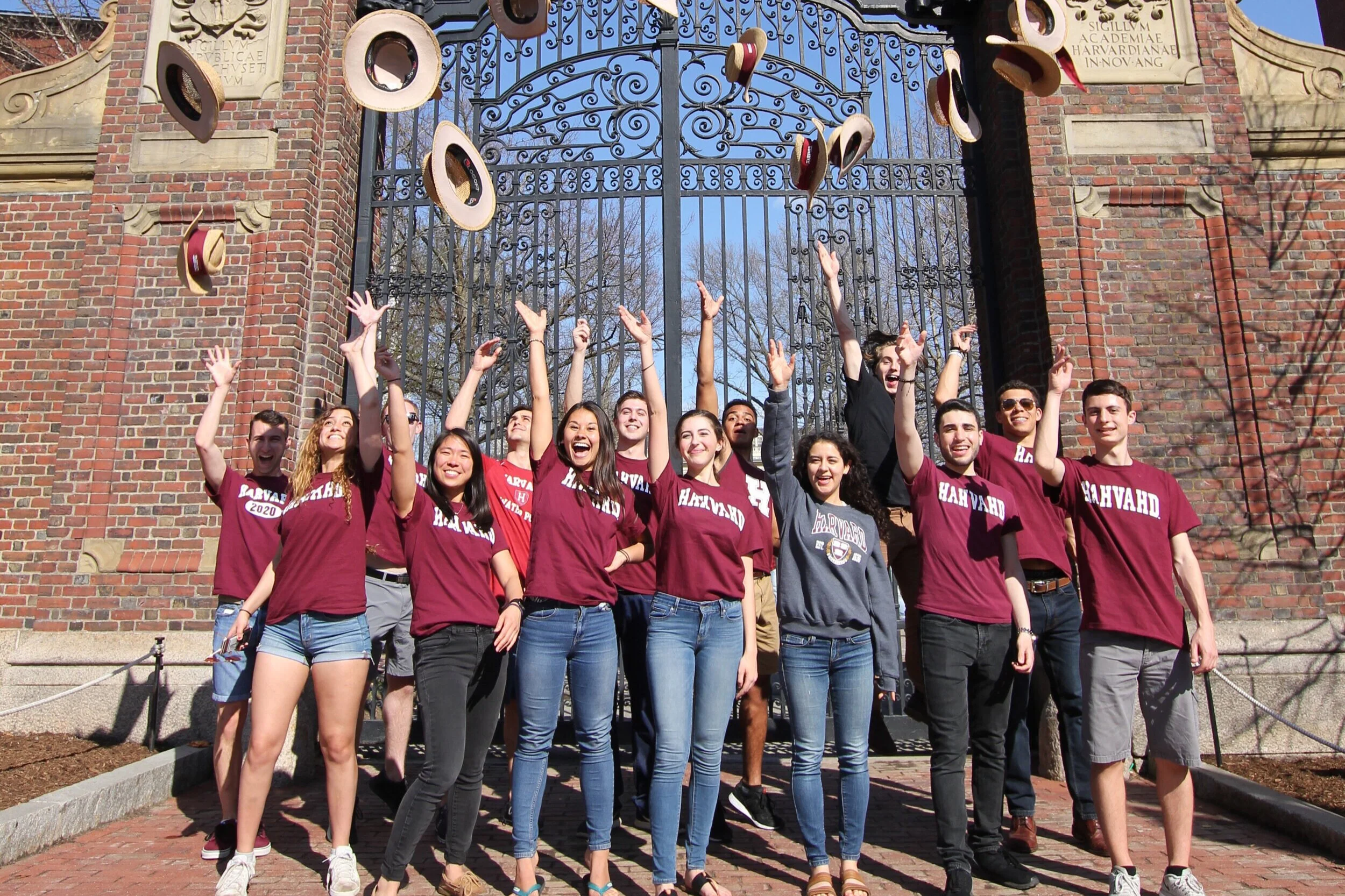
Johnston Gate
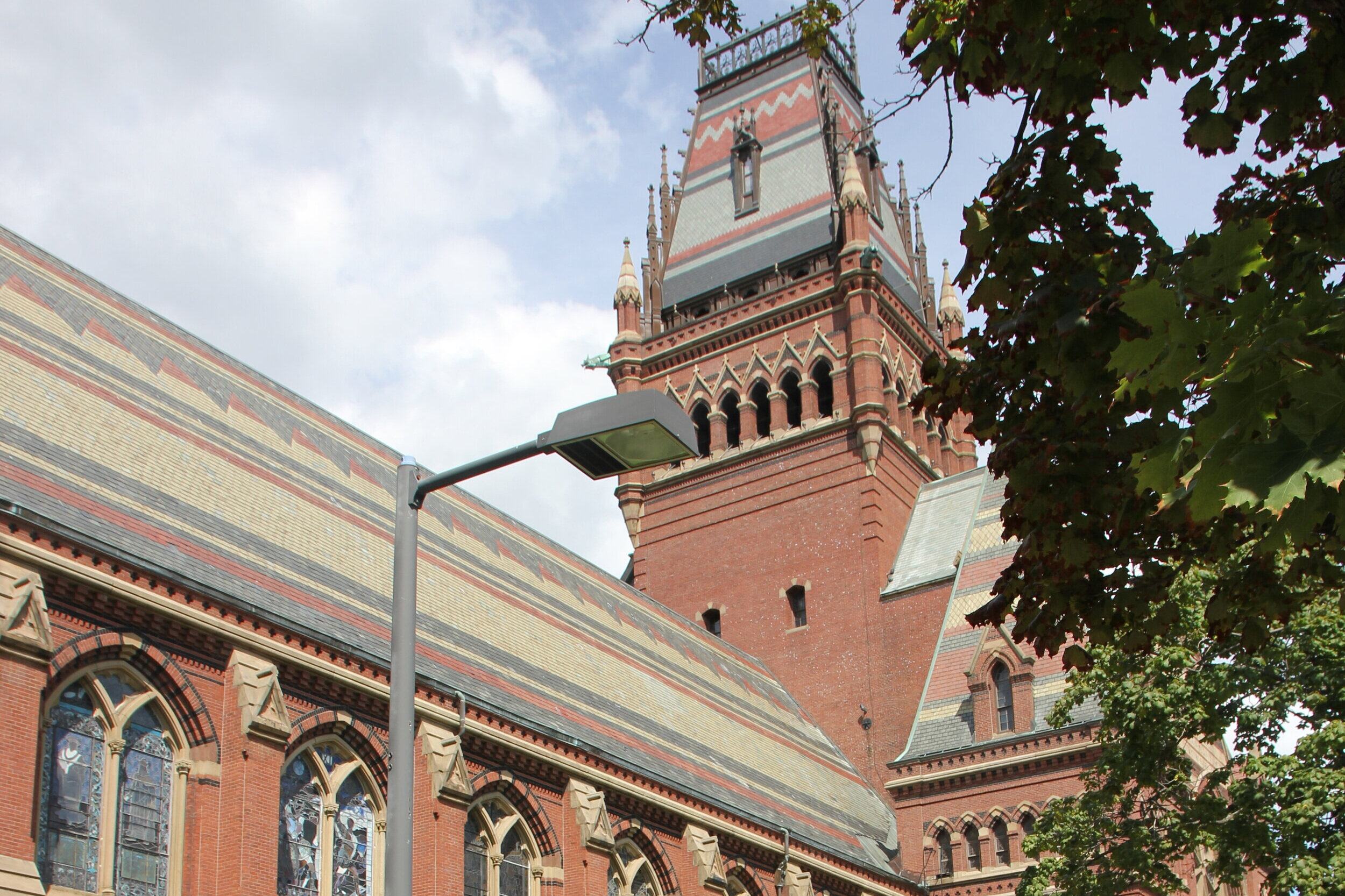
Memorial Hall
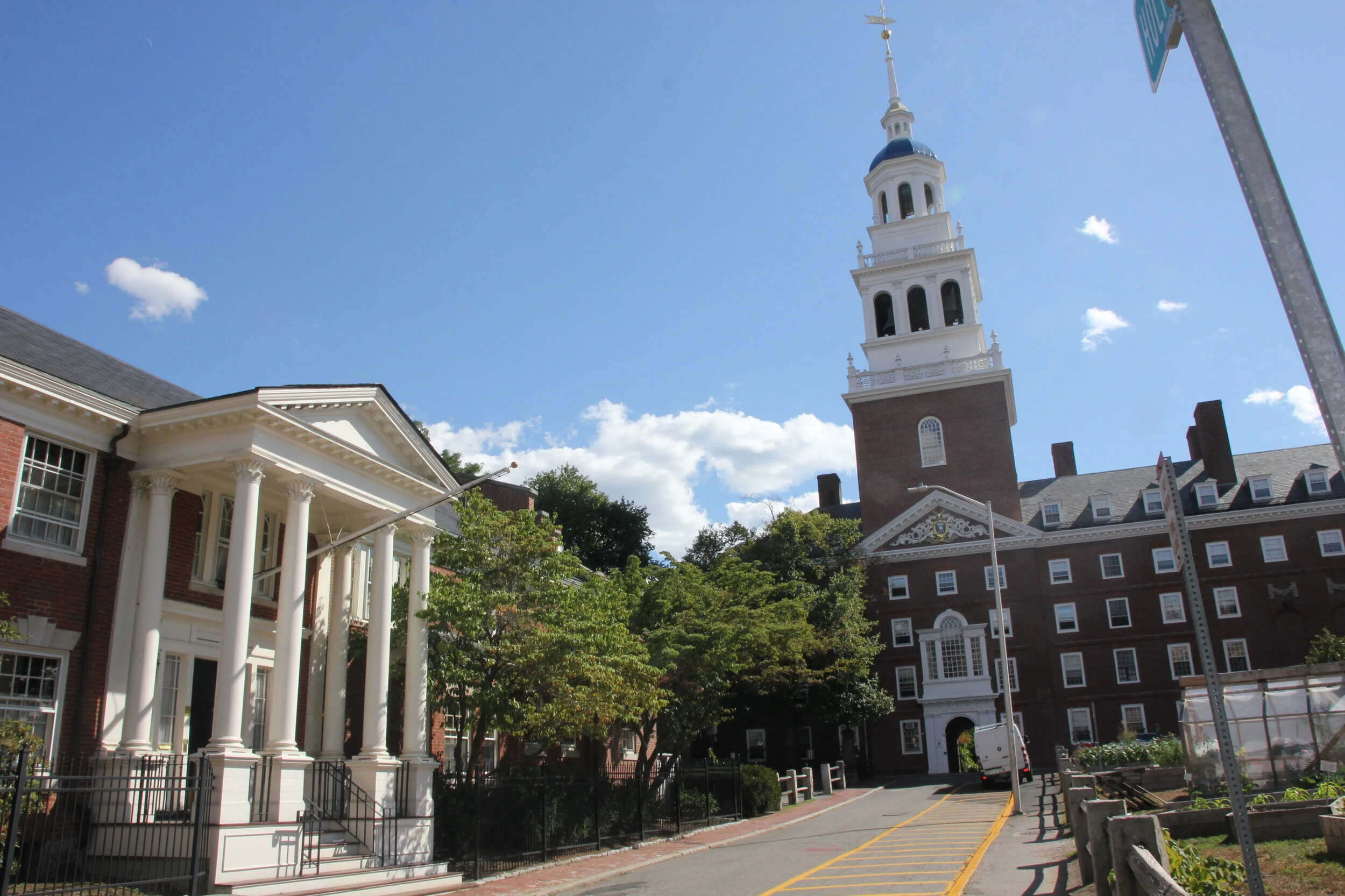
Lowell Bell Tower
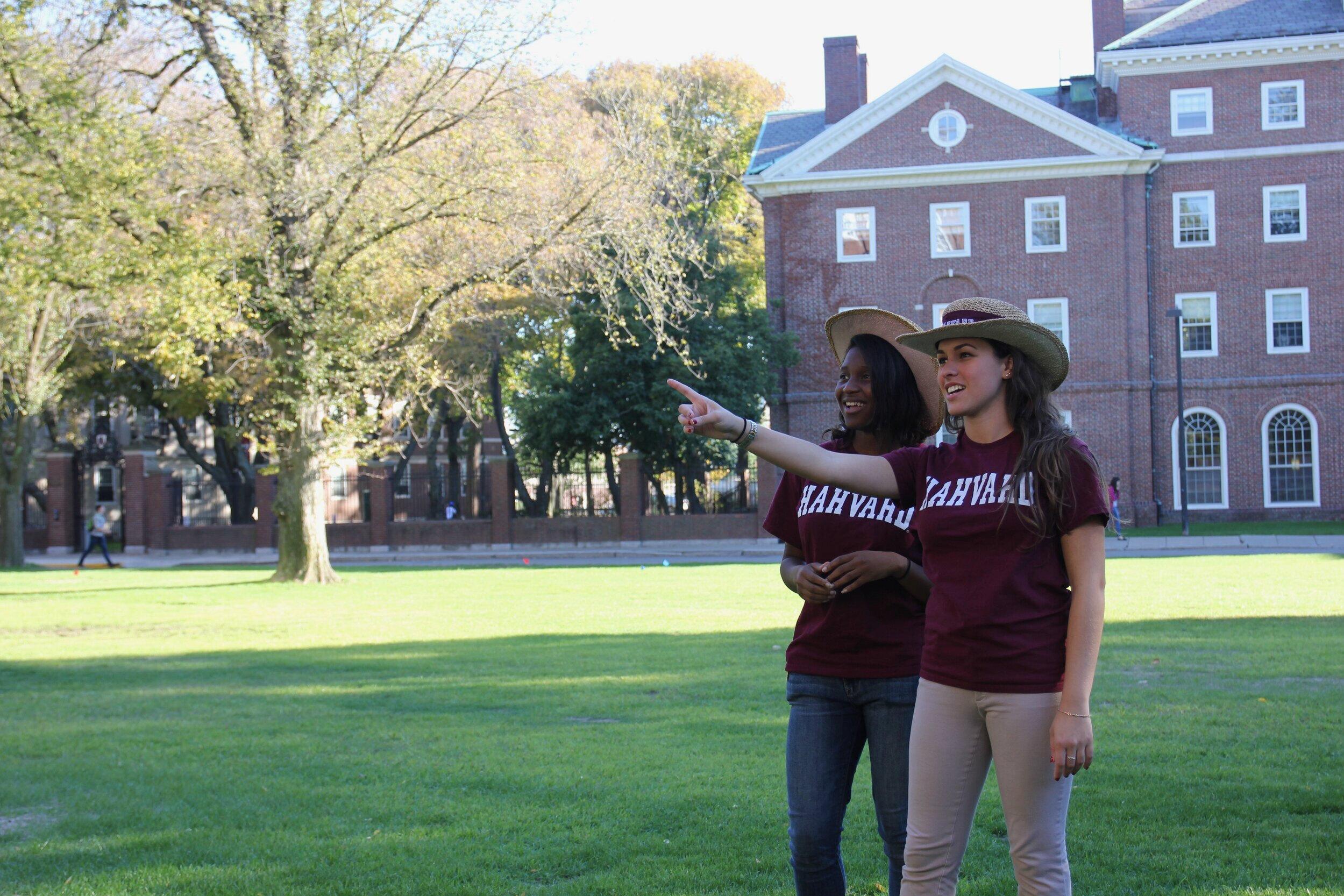
Harvard Yard
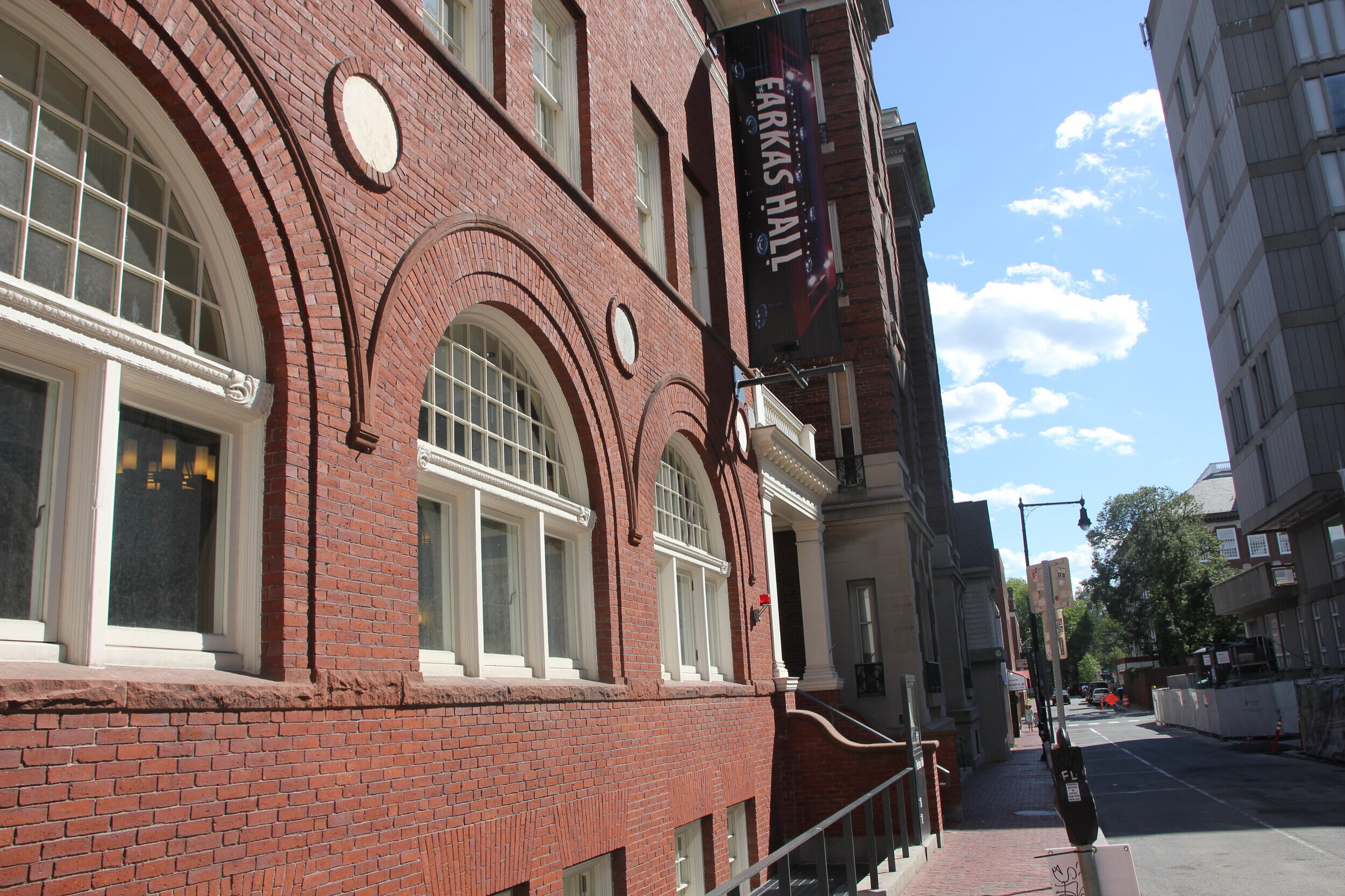
New College Theater
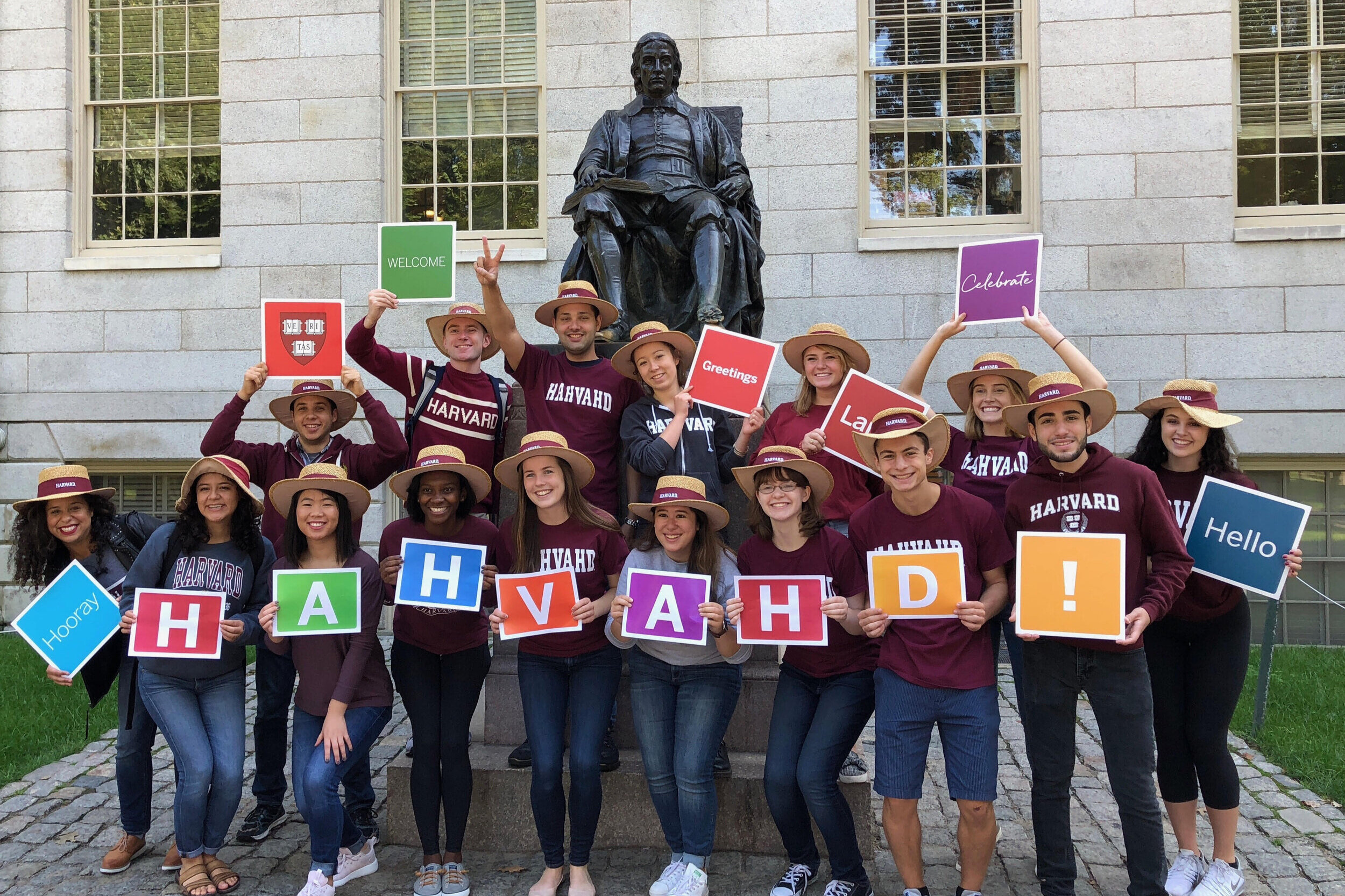
John Harvard Statue
How to get to us.
Our starting location is Harvard Square. You’ll find us outside the Harvard Red Line Subway Station next to The Harvard Shop. The closest street address is 1380 Massachusetts Ave, Cambridge MA 02138

Why should you trust our tour guides?
Our student guides were once visitors themselves. They understand what you want to see and learn
Our Harvard student guides undergo a rigorous semester long training
Our guides are current students who have their finger on the pulse of what’s going on today at Harvard.
Public Tour FAQs
Can you describe your tour of harvard.
The Hahvahd Tour is the most popular walking tour of Harvard University. Guided by current Harvard undergrads, the tour is a 75-minute historic tour of Harvard Yard and the surrounding neighborhood of Harvard Square. The Tour receives consistent praise from guests and major media outlets. Trip Advisor rates the tour one of the top attractions in Cambridge.
How far will I walk on the tour?
The tour route is about one mile long. We walk at a leisurely pace through campus and surrounding neighborhood.
Does the tour go inside buildings?
The Hahvahd Tour does not tour the interior of the buildings. We show our guests key highlights of the Harvard campus all throughout Harvard Square, leaving time to absorb the rich history and lore given at each stop.
Who leads your tours?
Our tour guides are current Harvard students and Cambridge locals! When you join a Hahvahd Tour, you’re getting the inside scoop from someone who knows the ins and outs of Harvard University and Harvard Square. Our guides are a resource to guests who want to learn more about the Cambridge experience.
Is the tour suitable for children?
Yes! Our tours are scripted to entertain both adults and children. AAA Magazine called us “great for families!” We strive to serve guests of all ages, and families really enjoy our friendly, interactive tour guides!
Where does your tour start?
The Hahvahd tour starts directly outside the main Harvard Red Line Subway Station. The closest street address is 1380 Massachusetts Ave, Cambridge MA 02138. Our managers and signs are easy to spot next to the Cambridge Information Kiosk and the Harvard Shop.
Is the tour accessible?
Yes, the terrain of our tour routes are accessible at nearly every stop. If someone in your party has a disability, please contact us before the tour and we will do our best to serve you. We cannot provide wheelchairs on site. Listening devices are also available for those with mild to moderate hearing loss.
What if it rains?
We operate rain or shine year-round. During severe thunderstorms with lightning our public walking tours do close for the safety and comfort of our guests. Don’t worry - storms never last long in New England!
What is your relationship with Harvard?
Founded in 2006 by Harvard Alumni, we are owned by Harvard Student Agencies, a student business organization. We are an official partner of The Harvard Museum of Natural History and The Harvard Art Museums. We provide tours for nearly every Harvard graduate school. Our founder and Chief of Staff is a Board Member with the Harvard Square Business Association and former President of Boston Attractions Group.
Where can I park
In Harvard Square there is limited street parking in the area, we recommend parking at the Harvard Square Parking Garage (20 Eliot Street, Cambridge MA 02138). Bring your parking ticket to the tour and we can offer a $2 validation discount.
Do I need to reserve my ticket in advance?
Booking in advance is recommended. When you reserve online you guarantee your spot on the tour and you receive advance tour instructions, and gain peace of mind in your planning. It is possible time slots will sell out ahead of time for many tours.
Is your tour suitable for prospective students?
Yes, in fact, National Public Radio has called the Hahvahd Tour “the real deal” for prospective students. However, it is important to note that we are not the Harvard Admissions tour. We encourage all prospective students to visit the admissions office at some point on their visit to Harvard. While our tours are geared toward guests of all ages from across the globe, prospective students can gain a lot of insight about the University and its culture.
What is included on the tour?
Our walking tour of Harvard is a 75 minute adventure around Harvard Square. The tour is partly-scripted to be a theatrical, entertaining performance! Tour themes include Harvard History, Insider Information & Famous Harvardians. The tour covers major Harvard landmarks including Johnston Gate, Cambridge Common, Memorial Hall, Science Center, The Harvard Crimson, Harvard Lampoon, and the historic River Dorms. The tour is given in English but you can find multiple language translation options here.
How do I use my Go City Pass to book a tour?
If you are a Go City Card holder, using your card to book a tour is a straightforward process. Simply follow the steps below:
Make a reservation: To secure your spot on the tour, please give us a text at 855.455.8747. Our friendly customer service team will assist you in making the reservation.
Confirmation and ticket: After you have successfully made your reservation over the phone, you will receive an email confirmation of your booking.
Arrival at the tour start: When you arrive at the tour start location, please present your go-card to the manager or representative on-site and they will scan it to grant you access to the tour.
It's important to note that the Go City Card acts as your ticket to the tour, so it's essential to have it with you when you check-in.
What language is the tour given in?
The tour is primarily given in English. However, for non-English speakers, we offer digital and printed translation documents in French, Spanish, German, Italian, and Mandarin. We strive to make our tours accessible and enjoyable for visitors from diverse linguistic backgrounds.

Take A Harvard Campus Tour on Your Visit to Boston
Disclosure: Advertising and affiliate services, including Amazon Associates, help the cost of running my blog. Clicking ads or making purchases through affiliate links may, at no additional cost to you, earn me a small commission. I appreciate your support .

It’s time to get wicked smart on your trip to Boston . A visit to the wonderful city of Boston wouldn’t be complete without taking a Harvard campus tour. After all, there’s so much history there.
I really wanted to visit Harvard University when I was in Boston. But I didn’t actually realize you could take a tour and walk around the university. In fact, the tours are run by students. What a great idea!
I was hoping for some serious osmosis just by being in the vicinity of this world renowned college. Still waiting for that to kick in – let’s hope you have more luck. But if you want to give it a go, keep reading to find more about this fun, unique tour.
Where is Harvard?
Harvard University is in Cambridge Massachusetts , on the other side of the river to Boston . Also in Cambridge is MIT (the Massachusetts Institute of Technology). That’s a lot of smart people in one small place.
Cambridge is a short distance from downtown Boston and is a stop on most city tours. I took a hop on-hop off bus tour when I was there with my parents and we could get off to walk around Cambridge and Harvard before getting back on.
How do I get there?
If you are not taking part in one of these bus tours , then you can still easily get to Harvard. The university has a stop on the red line of the MBTA subway. Clearly marked as Harvard you can’t get off at the wrong stop. If you do, then you might not be Harvard material.

The train journey is less than 15 minutes from downtown Boston if you’re along the Red Line . I stayed at the Fairmont Copley Plaza hotel, where there was a Green Line subway right outside. I connected at Park Street station and was there in only 20 minutes.
How much is the tour?
The Harvard campus tour is $20-25 for adults, costs can sometimes vary by day or season. We didn’t book our tickets in advance, but if you are traveling in the summer months when it might be busier this could be a good idea.
Gratuities are not included, but this is a fully guided tour and the students who lead the tours work really hard at delivering the best tour possible . So this is a really reasonable price for what you learn. To book your tour in advance, check out this Viator link .
What time does the Harvard campus tour run?
The tours go multiple times a day, seven days a week. From December to February inclusive the tours are more limited so make sure to check in advance. But all other times of year there are at least 4 or 5 tour start times. In the summer months June to August there are about a dozen times with the tour leaving every half hour between 10am and 4pm .

Will there be a lot of walking?
The Harvard campus tour is just over an hour long. It starts right outside the subway station and you’ll walk in through the university gates, around the yard and past some of the more historic buildings.
All in all you end up walking about a mile, but there are plenty of stops to listen to stories and the guides walk at a relaxed pace . We had a large group and no-one had trouble keeping up. We spent time around the college both before and after our tour though, so if you plan on doing the same make sure you have comfortable footwear.
Tell me more about Harvard
I thought you’d never ask! Well, I don’t want to give away all of the tour information, but I can tell you a couple of things about Harvard University that I found interesting.
As a total bibliophile I was amazed at how many books this university holds. I bet you can’t guess. Well there are 77 libraries. That’s right SEVENTY SEVEN! Between them all they hold over 18 million books .
The biggest of these libraries is Widener Library holding over 3 million books by itself. It goes six stories down and you’d walk two marathons (52 miles) to go past the same book twice if you went around it all. Harry Elkins Widener was a book collector who died in the Titanic disaster of 1912, and the library was commissioned by his mother in his honor.

Harvard University has had a number of famous residents. 8 US Presidents studied here, as well as countless other notable figures . Not all of the famous attendees finished studying at Harvard – Matt Damon and Mark Zuckerberg included. Although this is the university where Facebook began.
In Harvard Yard is a statue that has one foot much shinier than the rest of the statue. This is the statue of John Harvard, one of the founders of Harvard college. Touching his left foot is apparently lucky, hence the one shiny foot.
The biggest issue with the statue though is not the misdirected faith in good fortune coming from touching it, but that this is not actually John Harvard. See, when the statue was commissioned over 200 years after his death, they realized no-one knew what he looked like. So this statue takes inspiration from a descendant of one of the college’s earlier Presidents instead.
So what do you see on the Harvard campus tour?
Well our tour started with a walk through the side of Johnston Gate, the large wrought iron gate that leads to Harvard Yard. Most of the time the gate is closed. Why? Well because if you haven’t guessed it yet, there are a few superstitions when it comes to Harvard.
A big one is that you should only pass through the gate twice. Once on your first day as a Freshman, the next after you graduate. Any more and it’s considered bad luck.

We walked past the office of the President of Harvard, and into the main Harvard Yard. Here we were told about the people who have studied here and they told us a bit about the student housing (and the luck of the draw that comes with it).
We saw the statue of John Harvard. Well, almost (see above). Then walked through the yard, and across campus to the are that holds Praine Hall and the Sanders Theater, two of the larger structures where students gather for concerts and events.
Continuing around the perimeter we passed old buildings, museums and learned historic facts about the great university. I feel like I knew Harvard just by seeing it in so many movies. Channeling my inner Elle Woods, I soaked up as much Harvard knowledge as I could during this impressive Harvard campus tour.
What about the tour guide?
As I mentioned before the tour guides are all students. So what does this mean? Well it means they know a heck of a lot about this university. They eat, breathe and sleep Harvard. They worked their asses off to get there, and the excitement and pride shows in every story they tell . Our guide was incredibly personable and informative, and kept us all smiling throughout.
She was originally from Colorado and told us all about her dream to go to Harvard, the application process and the benefits of studying at Harvard. What I found most impressive is that Harvard is one of the top universities that is supported by financial aid for students.
Any student whose family earns less than $60,000 a year does not have to pay for tuition. While attending Harvard is by no means a free ride (accommodation and school supplies still add up), it is good to know that you don’t have to come from an investment banker family to be able to afford one of America’s top colleges.

Where can I buy some Harvard swag?
After the tour of the inner Harvard campus, the tour heads out into the streets of Cambridge , the small university town where the college is located. We had a number of shops, restaurants and pubs pointed out to us. But at the end of the Harvard campus tour we were taken to the Harvard shop where we said goodbye to our tour guide, and hello to Harvard branded everything .
Sweaters, t-shirts, mugs, stickers…you name it! If you want anything with a giant H on it, you’re in luck. Some of the items are more reasonably priced than others but a sweater is most likely going to set you back about $50.
Read more about some of the best food in Boston including Mike’s Pastry located in Cambridge, right outside of Harvard University .
Should I do this Harvard campus tour?
If you’re visiting Boston and you have an afternoon free then definitely. The first time I was in Boston I didn’t get to Harvard as I thought it was quite far. Boy was I wrong, it was super easy to get to. I’m glad I managed to get there though, and this tour was one of the best things I did in the city. It was unique and informative, and the students who run these tours are champs.
I would highly recommend you take this tour if you’re visiting Boston. Prepare to get smarter, and when you get home you can honestly use the phrase “well, when I was at Harvard…”. They don’t know you were only there for an afternoon!
If you’ve enjoyed this post leave a comment or share using the social media buttons below. Have you taken a Harvard campus tour? Or something similar?

Share this:
- Share on Tumblr

10 thoughts on “Take A Harvard Campus Tour on Your Visit to Boston”
I’ve been on the Harvard campus a few times but never realized there was a tour available. Seems like a great way to understand the history of the place.
Great detailed info! I didn’t know about the Harvard Tour when I visited Boston in October.
So cool that you can do a tour run by students! Definitely something I’d love to do when I’m in the area!
Wow, what a neat thing to be able to do! And such great information. Thanks so much for sharing 🙂
This is so fascinating!! I would absolutely love to visit Harvard and do the campus tour one day!
Woah I never thought Harvard had that many libraries! That’s wild! I love how thorough this guide is- this really seems like a must- do for a trip to Boston
Flashback!! I’ve been to Boston almost 10 years ago, visiting a friend back then. We also stopped by Harvard.
This is awesome! My son is going to graduate school at Boston University in the fall and I’m excited about visiting this famous campus!
A place with so much history! It’s somewhere I’ll definitely make sure to visit when I get to Boston. That’s so many books!
Thanks for the great article! I recently visited Boston and had the opportunity to take a Harvard campus tour. It was an amazing experience! The tour guide was very knowledgeable and gave us a great overview of the history and culture of the university. I was also able to explore the beautiful grounds and take in the stunning architecture. It was a great way to get a feel for the campus and learn more about Harvard. Highly recommend taking a tour if you’re ever in Boston!
Leave a Reply Cancel reply
Your email address will not be published. Required fields are marked *
Notify me of follow-up comments by email.
Visit Harvard
Whether you have a few hours or a few days, many discoveries await.
Harvard Yard is currently closed to the public. During this time no tour groups are permitted in the Yard.
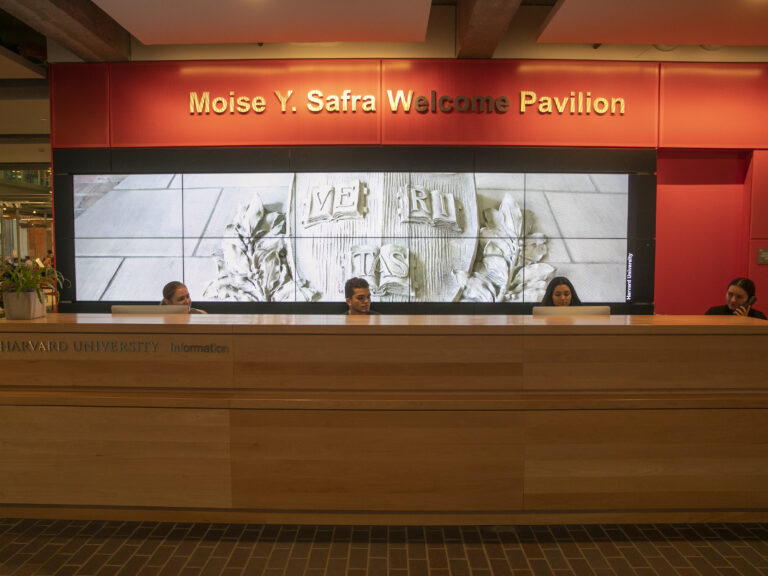
The Harvard University Center is open Monday through Friday from 9 a.m. to 5 p.m.
Harvard University Visitor Center
Harvard University established the Visitor Center in 1962 as the front door to the University, where students greet visitors from all over the world, answer questions about campus, and provide official tours of Harvard.
Email [email protected]
Mysterious facts, hidden gems, iconic figures, famous traditions, world-changing ideas, and everyday quirks—explore these and more on the official Harvard tours. Our tours are led by students and are offered both in-person, on campus and virtually. In addition, self-guided tours are offered on the Visit Harvard mobile app, available to download on iOS and Android devices.
Explore all of our tours
Historical Tour of Harvard
The free, student-led public walking tour through Harvard Yard provides a history of the University, general information, and a unique view on the student experience.
Visit Harvard mobile app
This free mobile app features a self-guided walking tour through Harvard Yard that highlights the history behind iconic buildings, traditions, alumni and more.
Explore on your own
Turn virtually any corner at Harvard and you’ll find something that leaves you feeling inspired. Explore the places, ideas, artifacts, and moments that make us who we are.
Find more at our museums
Harvard Libraries virtual exhibits
Virtual tour of the harvard museum of natural history, harvard and the legacy of slavery walking tour, places we love.
Harvard community members share their favorite places on campus.
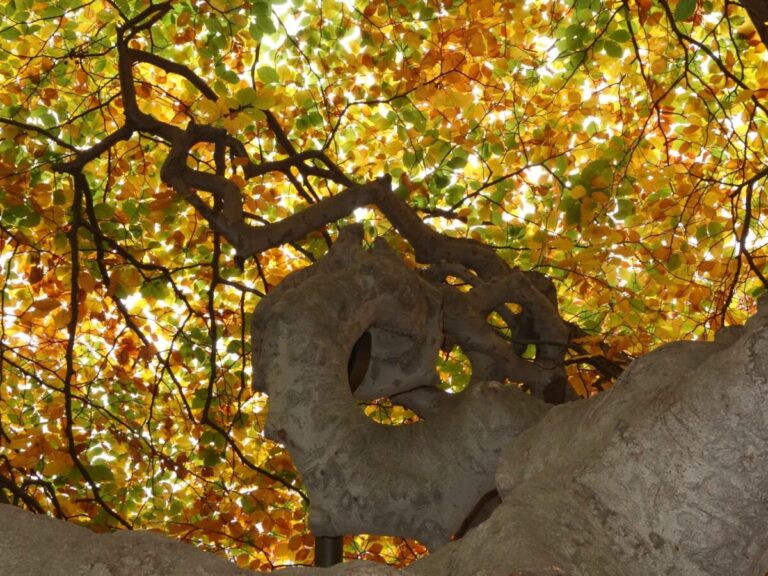
William “Ned” Friedman, Director of the Arboretum
Arnold Arboretum
“There is a magnificent horticultural “sport” (genetic mutant) of the standard European beech tree ( Fagus sylvatica ) that came to the Arboretum in 1888 from the Royal Botanic Gardens, Kew (and was probably collected in the wild in France). Instead of growing straight up to the sky, the shoots twist and turn into gyres, and the net effect is a tree that is essentially a small hemisphere.”
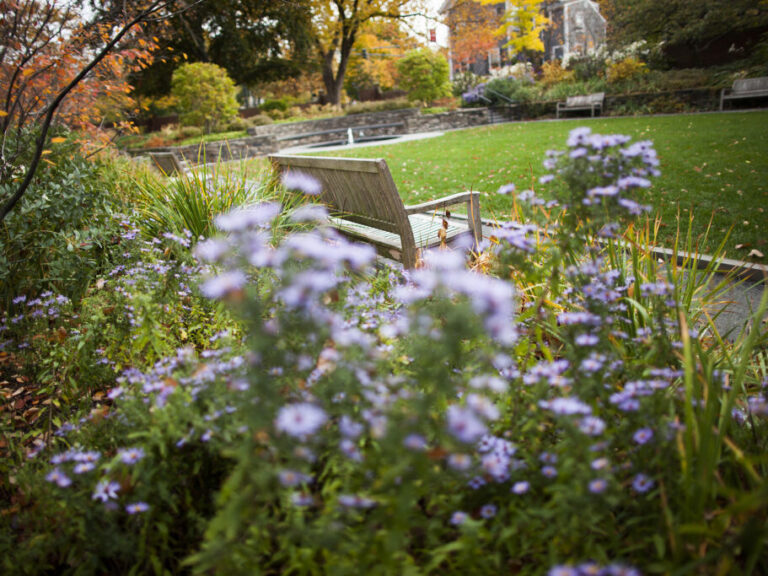
Rhea Bennett, Class of ’20
Radcliffe’s sunken garden
“One of my favorite places on campus when the weather is warm is the sunken garden in Radcliffe Yard. It is a beautiful, little green spot on campus where the gurgle of the fountain creates a quiet, calm atmosphere. Doing work there on a sunny day makes me feel like I’m in an oasis in the middle of the city.”
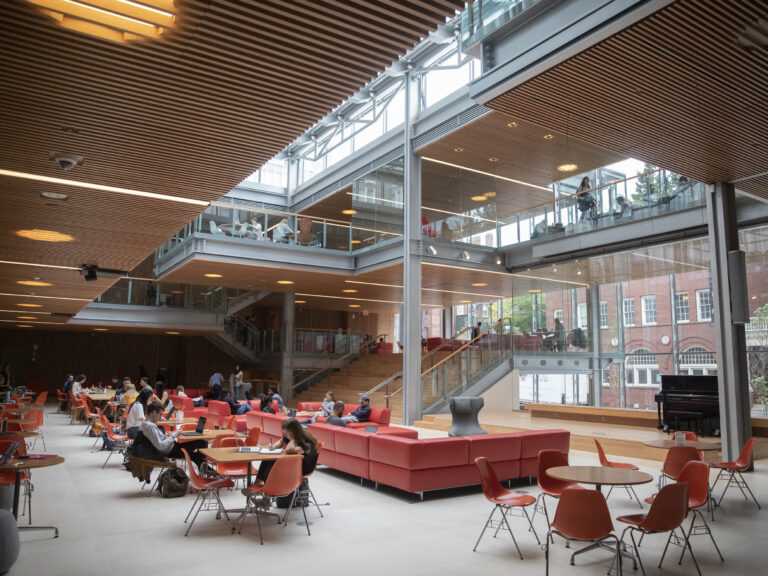
CURTIS KEITH, Chief scientific officer, Blavatnik Biomedical Accelerator
Smith Campus Center
“I especially like having coffee in the second-floor seating area at the front of the Smith Campus Center, looking out onto the plaza in front of the center, the whole diversity of Harvard Square passing in front. For me, it also brings back memories of arriving at Harvard for the first time in 1993 as a student and seeing the chess players there.”
Find an event
Harvard offers many virtual and on-campus events open to visitors and neighbors.
Browse our upcoming events
Glass Flowers: New Exhibit
European Energy Security in Light of the War in Ukraine
The Inaugural Professor Rob Lue Memorial Lecture w/Drew Faust
Maps and Directions
There are a number of ways to get to Harvard. Find your best option.
Explore our campus
The Hahvahd Tour

Review Highlights

“ My tour guide Lillie was awesome and gave an amazing overview on the history of Harvard and the school itself! ” in 155 reviews

“ My husband Jay and I took the tour today with Justin Fox and he is the best tour guide. ” in 7 reviews

“ It's a must see when you go to Boston and hopefully you will get Jake F . ” in 4 reviews
Location & Hours
Suggest an edit
1376 Massachussetts Ave
Cambridge, MA 02138
Harvard Square
You Might Also Consider

Boston Sightseeing
7.1 miles away from The Hahvahd Tour
Boston Sightseeing is one of the best city sightseeing tour providers in Boston. With our double-decker open-top tour bus, you can experience a stunning panoramic view of the city. We offer hop-on, hop-off tours with our… read more
in Bus Tours, Historical Tours

Freegotrip T. said "On time, good service. 110 people student group tour for 8 days, thank you LCL Travel's team to arrange everything including hotels and meals everyday!" read more
in Buses, Bus Rental, Airport Shuttles

DMS Transportation
We provide luxury black car service to Boston Logan and TF Green Airports. Professional driver will arrive in a Tesla. read more
in Town Car Service
About the Business
Business owner information
Business Owner
We are to official college-campus tours what the Daily Show is to National News Networks. Our 70 minute tour highlights Harvard hot-spots through a satisfying blend of in-depth knowledge, side-splitting jokes, historical accounts, and exclusive takes on student life at Harvard. It's no wonder that The Hahvahd Tour is known as the Ultimate Harvard Experience. …
Ask the Community
Ask a question
Yelp users haven’t asked any questions yet about The Hahvahd Tour .
Recommended Reviews
- 1 star rating Not good
- 2 star rating Could’ve been better
- 3 star rating OK
- 4 star rating Good
- 5 star rating Great
Select your rating
Overall rating
335 reviews

If you want to see and learn about Harvard, this is a must-do in Boston. Our tour guide Cheyenne - a fellow Long Islander and Harvard student - was incredibly knowledgeable, entertaining, and accommodating. Lots of history and factoids about notable Harvardians and a beautiful tour of the campus. Great time!

For our group, this was just an OK tour. It was a paid alternative to the free Harvard tours that were fully booked for the time we were there. There wasn't a lot of information shared, insider or otherwise, and the little information could easily have been read on our own. This tour primarily covers the outdoor Harvard Square area so don't expect anything more comprehensive or insider than that (area was open to public when we toured). Large tour group and the guide didn't wear any of the identifying info shown in the promotional photos. We walked and stopped in a handful of areas where she shared some basic historical information with the group. It was fine but not a trip highlight or anything fantastic - especially considering the cost.

LOVED LOVED LOVED this wonderful tour! The tour guide was super fun and very sweet. We learned so much about the school we never knew of before. Got to visit some historical area on campus and see some movie locations too. This really was one of our favorite experiences during our trip in Boston! Highly highly recommend. The gift shop had the best stuff - we loaded up!

Josh was a fantastic tour guide and handled our big group with skill and humor. Learned a lot, both about the history of Harvard, but also his experience as a student. Highly recommend!

Daniella was awesome! She made the tour fun and entertaining while also really informative. Thanks Daniella! Enjoy your new dorm!

Such a beautiful campus and great tour! So cool to get the back story of the oldest university in the country. My tour guide Lillie was awesome and gave an amazing overview on the history of Harvard and the school itself! She even taught us the Harvard leg sweep J/K, it doesn't exist but if it did, I'm sure she'd teach it to us. Definitely worth checking out!

We had a really good time, our guide Alexandro, was very enthusiastic, knowledgeable, and able to answer all questions. He did a great job!

Save you money unless you want to hear weird stories and some questionable history about Harvard. The tour only goes around the outside of campus and you can only go in on your own, after the tour and without your guide. Our guide had a lot of energy, not a student or alumnus and that's about the only positive thing I can say.

This tour was great! Our tour guide was John and he did an amazing job informing us about Harvard. He was very knowledgeable and enthusiastic. He also answered all of our questions, would definitely recommend.

It was nice to walk around campus with an actual student as a guide. Tova did a geat Job, she's very friendly and gave us such a good time.
147 other reviews that are not currently recommended

PreFlight Airport Parking
5.0 miles away from The Hahvahd Tour
Mariani D. said "I wrote a review a few months ago, but apparently it got lost in cyberspace. The reason why I even bothered to check my review again was because the driver who picked me up yesterday was the main reason why I wrote the review in the…" read more
in Airport Shuttles, Parking

Patriot Taxi of Waltham
6.2 miles away from The Hahvahd Tour
Bev N. said "I don't usually post reviews but these guys were so good that I had to write this. Wonderful service, friendly, courteous and helpful drivers. Reliable, always on time, very reasonable prices. I randomly found this cab service…" read more
Collections Including The Hahvahd Tour

When in Boston
By Swatee G.

Boston Trip for 2!
By Brittany T.

Boston on the cheap
By Jessica F.

Our 2.5 Day Boston Excursion
By Nicole V.

Please come to Boston
By Jennifer L.

Boston JMM Conference 2023
By Hannah S.

Beantown (aka Boston) / Rhode Island

Massachusettes
By Fancypants X.

Aubrey’s New England Visit
By Megan K.

By Michelle W.
People Also Viewed

Tours of The Freedom Trail

Boston History

Free Tours By Foot

Lessons on Liberty

Freedom Trail® Foundation

Witch City Walking Tours

Hub Town Tours

Salem Black Cat Tours

Boston Strolls

Ye Olde Tavern Tours
Best of Cambridge
Things to do in Cambridge
Other Tours Nearby
Find more Tours near The Hahvahd Tour
People found The Hahvahd Tour by searching for…
Cheese Tour Cambridge
Duck Boat Tour Cambridge
Free Walking Tours Cambridge
Harry Potter Store Cambridge
Harvard Tours Cambridge
Hop On Hop Off Cambridge
Night Tours Cambridge
Site Seeing Cambridge
Trademark Tours Cambridge
Walking Tour Harvard Cambridge
Browse Nearby
Transportation
Mines Near Me
Tours Near Me
Related Cost Guides
Town Car Service
9 Harvard Experiences To Explore (And One To Avoid)
Despite its prim and proper reputation, Harvard's history has many surprises! Here are nine things to explore -- and one worth avoiding!
The fall is the perfect time to visit Harvard University when the leaves are aglow with amber and ruby hues, and the quadrangles are buzzing with students. Most travelers immediately think of Harvard Yard, but many hidden gems are tucked all over the campus that visitors can access without a student ID. What’s more, despite its prim and proper reputation, there are some surprising twists in the University’s traditions that are worth learning about and experiencing when you visit this centuries-old campus. Here are nine uniquely Harvard experiences and one event travelers might want to avoid.
10 Harvard Yard In Autumn
The place to start any Harvard tour, the Yard (as students affectionately know it), is the beating heart of the university. Dormitories circle the yard, enclosed by a wrought iron gate. Some of Harvard’s 25 gates close in the evening, so travelers should enter and exit at The Class of 1875 Gate. Within the Yard are many historical buildings that are interesting in their own right. However, a trip to Harvard Yard should include time to meander the zigzagging paths and soak in the ambiance of youthful ambition and tradition. To identify the campus buildings, Harvard provides a free interactive map of the Campus .
Related: US News & World Report Releases List Of Top 1,500 Global Universities
9 A Titanic Connection
It is no secret that many buildings on Harvard’s campus are named for wealthy and influential people. The grand and sprawling Harry Elkins Widener Memorial Library is no different, but there is a tragic twist. Harry graduated from Harvard in 1907 and was an ardent book lover. The twenty-four-year-old was aboard the Titanic to sail to England to buy books for his large personal library at home. Coincidentally, the Widener family was hosting a lavish party for the ship’s captain on the night the Titanic sank . In memory of her son, Harry’s mother donated millions of dollars to Harvard to erect a massive library. After renovations and expansions over the years, Widener Library is a bibliophile paradise, with over 50 miles of bookshelves with a capacity of 3 million books .
8 Landmarks Of Modernist Architecture
Harvard’s name calls up images of stone buildings, old-world propriety, and a sturdy grounding in the past. However, the reality of Harvard’s campus is modern and state-of-the-art. Contemporary buildings dot the campus and boldly make known their modern sensibilities. The Carpenter Center for the Visual Arts embodies a thoroughly modernist concept cast in concrete by iconic architect Le Corbusier. Harkness Commons was designed by Walter Gropius and serves as the graduate center. Spanish architect Josep Lluis Sert designed multiple buildings for Harvard while serving as the Dean of the Graduate School of Design, including the Science Center and the Holyoke Center in Harvard Square.
7 The Former Radcliffe College
At its inception, Harvard was an all-male institution. When women were allowed to enroll, they were educated at Radcliffe College and did not enjoy equal access to Harvard College’s amenities and resources. When co-education finally became the norm at the Ivy League school, Radcliffe became an institute of the University, and women were integrated into Harvard University. The Radcliffe Institute for Advanced Study courtyard Radcliffe Institute for Advanced Study has a much more human scale, without the massive buildings that tower over Harvard Yard. In the autumn, the trees in the Radcliffe courtyard are aglow against the lamp lights that still flicker on cool autumn nights. This hidden gem is one of the best places for an evening stroll in Harvard Square.
Related: New Feminist City Guides Put Travelers In Touch With Women-Led Businesses And Egalitarian Monuments
6 The First Stadium Built For College Football
Sports enthusiasts should head across the Charles River to Harvard Stadium. Built in 1903, the Greco-Roman-inspired athletic complex was the first stadium ever purpose-built for college football . It is also a National Historic Landmark. There are only four athletic stadiums with this designation, so visitors should take the opportunity to see Harvard Stadium while exploring the university. There’s more than football here, and outdoor athletics competitions from rugby to track and field are held here. The best time to visit the Stadium is during the long-held rival football match between Harvard and Yale, locally known as The Game. During this event, students and alumni hold tailgate parties outside the stadium and rally for their teams before filling the stands for a raucous match. Students of each school are known to play tricks and pull outrageous pranks on the opposing side before and during the game.
5 The Little Chapel That Wasn't
This charming, tiny Georgian building, tucked into a small corner quadrangle of the Yard, is often overlooked, but it holds some surprising history. The chapel has never actually functioned as such. Interrupted by the Revolutionary War, the building was used by revolutionary forces and even housed then-General George Washington’s troops for a time. After the war, it became a venue for medical lectures, and remains of human specimens were found under the building. The building is currently a convening space for performances, small lectures, and student events – a function it has performed consistently since 1880.
4 The River Houses
After completing freshman year in a Harvard Yard dormitory, most students go on to upper-class residential houses, which can be found all over Cambridge. These buildings range from traditional Georgian to modern. Visitors should enjoy an autumn stroll by the Charles River to visit a set of these residences affectionately known by students as The River Houses. The dormitories are tucked into bright, leafy scenery with the sparkling river as a backdrop. Interior access is limited to students for privacy and security reasons, but visitors can enjoy the architectural diversity and richness of the buildings’ exteriors and idyllic settings.
3 Primal Scream
This little-known Harvard tradition will surprise visitors. At midnight, on the night before final exams begin each term, Harvard students engage in a 70-year-old tradition that is more than a little unlikely. Students disrobe and run a lap around Harvard Yard while onlookers gather and the university band plays. This is Primal Scream. This tradition serves as a chance for students to let off steam after the long study days known as the reading period and before the start of finals. Initially, students only opened their windows and screamed for ten minutes , but at some point in the 1990s, the au naturale lap came into fashion.
2 The John Harvard Statue -- But Not Really
In the center of Harvard Yard stands a supposed statue of John Harvard , an early benefactor of the university. One of the most photographed statues in the US, visitors often rub their left foot for good luck. However, this regal statue is known within the Harvard community as the “statue of three lies,” and upon close inspection, it’s clear to see why. First, the pedestal mentions that John Harvard was the founder of the university when, in fact, he was a benefactor. Second, it claims the university was founded in 1638, although it was founded two years earlier. Finally, the face of the statue isn’t John Harvard at all. An unknown student was used as the model, and no one was sure of the student’s identity.
Related: Ocean Atlas: Take A Snorkeling Tour To See The World's Largest Underwater Statue
1 The Poet And The Food Fight
Visitors to Harvard Yard today will find a peaceful, grassy yard surrounded by brick and wrought iron gates. However, Harvard wasn’t always this peaceful. There is a long history of student rebellions and agitation. Between 1766 and 1834, seven riots demanded change for several grievances. The Rebellion of 1818 was sparked at University Hall, a gleaming white building in the heart of Harvard Yard, by a food fight between the freshman and sophomore classes . Students threw their meals at one another, and the sophomore instigator of the fight was expelled. His fellow students disagreed with the expulsion and demonstrated against the university administration. Eventually, the entire sophomore class was expelled. Some students were allowed to rejoin the university a short while later, including American author Ralph Waldo Emerson. Visitors can see University Hall today, although it no longer serves as a dining hall for students. And that’s probably for the best!
- Travel Accessories
How To Visit Harvard On Your Next Trip To Boston
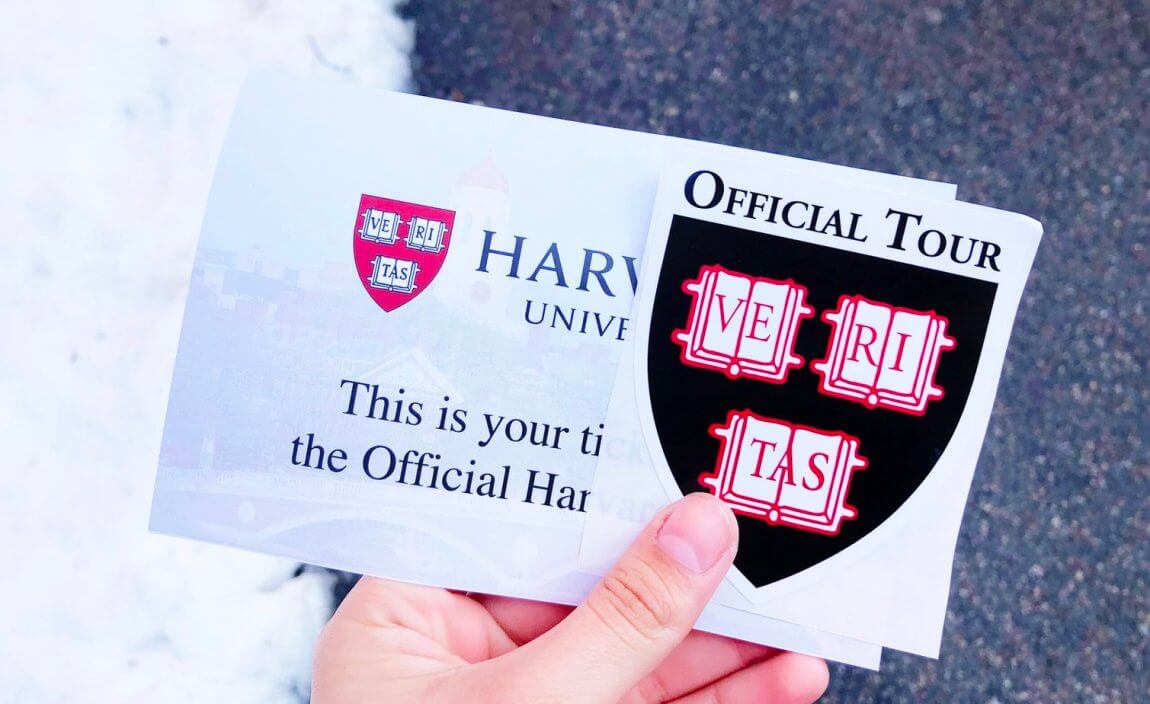
On your next trip to Boston, why not take the opportunity to visit the iconic Harvard University? Getting there is quite easy and so worth it!
I did it myself and it was so fun to see the most famous university in the world in person. (:
In this post, you will read about how to visit Harvard and take a free tour of the university.
Plan your Perfect trip to Boston
🏨 Find the perfect hotel on Booking.com
🎫 If you’d like to go on fun tours, check out the best tours to take in Boston
🎒 Pack a universal travel adapter , your favorite travel camera (I love this one !), and a good portable solar phone charger
📸 Follow me on Instagram for more content

Disclosure: This post may contain affiliate links. Meaning, I get a small commission if you purchase through my links, at no cost to you.
Why Visit Harvard University
First, because visiting Harvard is one of the best things to do in Boston and it is a gorgeous place to visit all year round, I got to see the campus covered in snow, and it was so beautiful!
Second, if you never had the opportunity to attend one, exploring an Ivy League school is an interesting and unique experience.
Anyone can visit Harvard University and see with his own eyes the school chosen by brilliant minds like Barack Obama, Bill Gates, and George W. Bush.
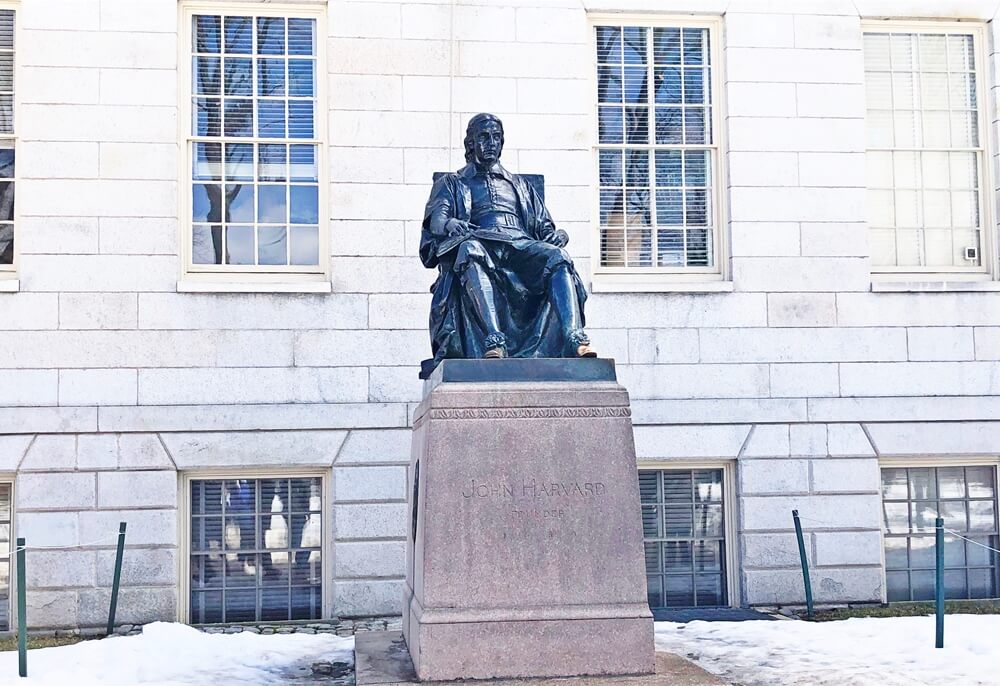
How To Get To Harvard From Boston
The best way to get to Harvard is by driving, taking uber or public transportation.
I went with public transportation and getting there was easy peasy:
Public transportation
Boston’s public transportation system is very efficient and easy to understand. Taking the subway is a fast and cheap way to get to Harvard.
All you have to do is get to a subway station where you can take the Red Line and then get off at Harvard Station.
Climb the stairs and you will already find yourself right in front of the university, in Harvard Square.
Harvard Address
For those who prefer to go drive or take an uber the university’s address is Cambridge, MA 02138, USA.
In case you are driving, you might be asking yourself where to park to visit Harvard. Well, these are some commercial parking lots and garages where you can park:
- Smith Campus Center Parking Garage (managed by Propark)
- Harvard Square Parking Garage
- University Place Parking Garage
- Charles Square Garage
- Church Street Parking Lot
- Harvard Square Hotel
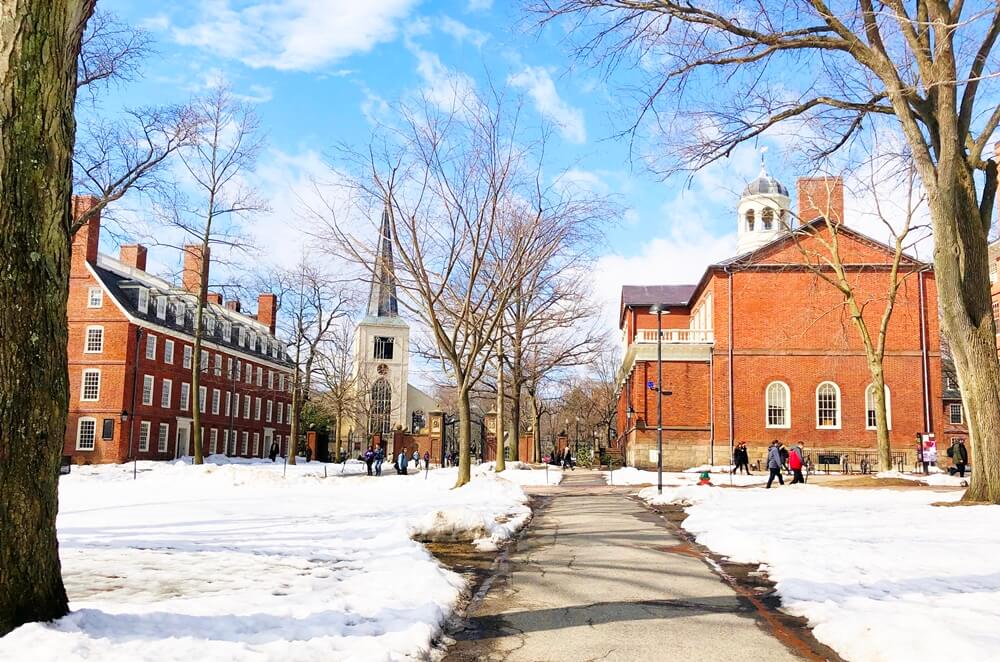
The history of Harvard University
According to Best College Reviews , Harvard University possesses the title of America’s oldest learning institution, founded in 1636.
In the beginning, its name was New College and was built mainly to educate clergy. In 1639, the school’s name became Harvard University, name after John Harvard, who donated half of his estate and his entire library to the school upon his death.
Taking A Tour of Harvard University
The best way to visit the Harvard Campus is by taking a student-led tour.
The tours last around 70 minutes and include a map of the campus.
When I did it, a very nice student called Jack showed us around and took us to one of the libraries (so beautiful!), the science building, the dorms, and so much more.
He also taught us about the university traditions and ended the tour on the famous statue of John Harvard.
It was such a fun experience!
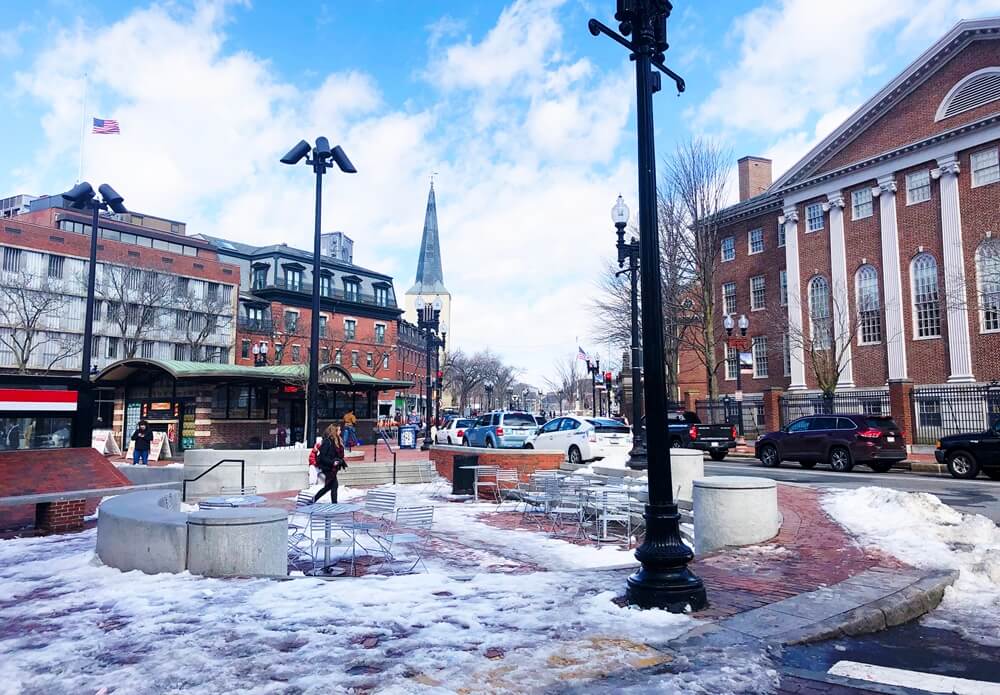
What To Visit in Harvard Square
After you visit the university, you might as well make the most out of your day trip and stroll around the historic neighborhood of Harvard Square.
Some of the best things to do in Harvard Square include:
- Visiting one of the many souvenir stores
- Buy a book at the Harvard Book Store
- Catch a movie at the Brattle Theater
- Brunch at Henrietta’s Table
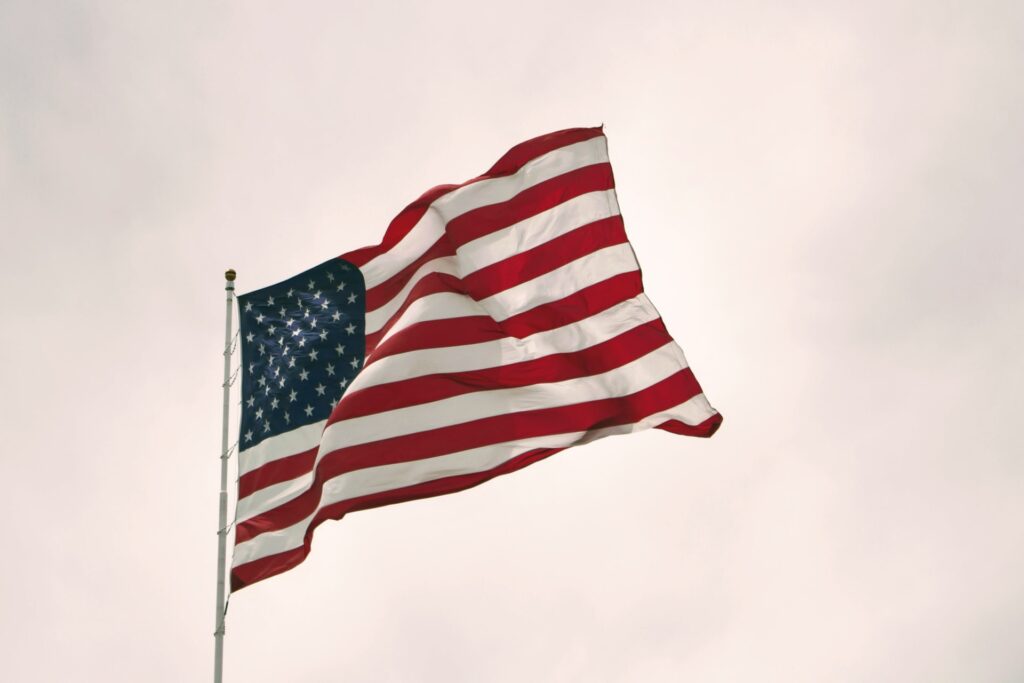
Other cool things to do in Boston
Besides visiting Harvard, there are many other fun and unique experience to have in Boston!
Here are some of my favorite:
Cruise along Charles River
Hop into a duck boat—renovated World War II amphibious vehicle—for a comprehensive tour of Boston. Pass Boston Common, Quincy Market, and the Celtics’ home turf at TD Garden. Then splash down into the Charles River for a view of the city by boat. Learn all about Boston’s history and landmarks as you go.

Go on a day trip to Martha’s Vineyard
Join Boston’s only award-winning, original, Martha’s Vineyard Day Trip! Leave the trouble of driving to someone else and enjoy a day trip to Martha’s Vineyard from Boston.
Then, take a short cruise to Martha’s Vineyard then enjoy free time to explore or upgrade to add an island tour.
Go on a Ghosts & Gravestones Night-Time Trolley Tour
Discover some of Boston’s deepest, darkest secrets on a “frightseeing” tour aboard the Trolley of the Doomed, which roams around the haunted streets and burial grounds of Boston
Tour Fenway Park, America’s most beloved ballpark
Revel in the history of Fenway Park, one of baseball’s most beloved stadiums, during this guided tour.
Revisit the careers of Red Sox greats like Ted Williams, Babe Ruth, and Carl Yastrzemski, celebrate the club’s numerous World Series titles and tour famous stadium locales like the ‘Green Monster,’ ‘Pesky’s Pole,’ and the Fenway Park Living Museum.
That’s a wrap! I hope this guide was useful to you and that you have a lovely time at the most famous university in the world.
Remember to send this post to any of your friends that still don’t know how to visit Harvard and follow me on Instagram for more travel tips (:
You might also enjoy:
Things to do in Boston in winter
Salem, Massachusetts: A complete guide to the City of Witches
15 Reasons why Salem is worth visiting
The 12 best tours to take in Salem

Travelcami Inspires the best solo travel destinations ✈️, and unique experiences
You May Also Like...
16 fun things to do in boston in winter, boston in winter 2020: two day itinerary + things to do | travel cami.
[…] Going on a day trip to Harvard is an absolute must if this is your first time in Boston! The university is one of the most iconic in the world and it offers student-led free tours. You can see how to take one of those right here. […]
Town of Salem, MA: the ultimate travel guide to the City of Witches
[…] How to visit Harvard: taking a free tour of the university […]
This is so awesome! I’d love to visit Harvard one day and meet some of the brilliant minds who study there.

Camila Neves
I highly recommend it!! 🙂
Rebecca Scholes
We loved Harvard when we visited, would love to have done a tour. And Boston is one of our all time favourite American Cities, love it 😍
Daniel Barker
Love to visit the campus again and again. It’s the place from where many histories begin
Leave a Reply Cancel Comment
Save my name, email, and website in this browser for the next time I comment.
Notify me of follow-up comments by email.
Notify me of new posts by email.
6 Awesome Places To Watch The Sunset In Key West
30 best things to do in philadelphia on your first visit.
This website uses cookies to improve your browsing experience and analyze the use of the website. Learn More

Harvard University Walking Tour

This post covers how to tour Harvard University and the surrounding Cambridge area, including our pay-what-you-wish tour and our audio tour which you can take any time.
There is also a tour guided by students, as well as a self-guided option.
Harvard University is the oldest college in the United States (1636).
Eight U.S. presidents attended Harvard University and the name is known worldwide.
WHERE IS HARVARD?
Harvard University is located in the City of Cambridge, just across the Charles River from Boston.
It's located approximately 4 miles (6.5 km) away from the Boston Commons (or 15 min on the subway).
Regardless of how you decide to get here, we recommend using this Google Maps link for directions to Harvard Square .
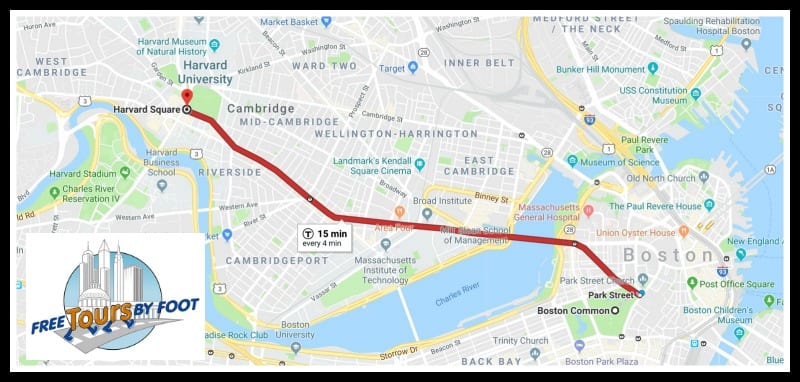
Be sure to read our how-to guide on riding the Boston T (subway).
TIP: If you are considering purchasing a hop-on-hop-off trolley ticket, be aware that Old Town Trolley has a stop for Harvard University.
GUIDED HARVARD WALKING TOURS
To start with, our 2-hour, pay-what-you-like tour not only covers Harvard University but also the surrounding area of Cambridge.
Below us, you can read about a shorter tour led by current Harvard students.
FREE TOURS BY FOOT
Reservations: REQUIRED. Click here to reserve . Groups of 6 or more must contact us before booking.
Where: At the Cambridge Tourism Information Booth in Harvard Square ( map ).
Cost: This tour is free to take, and you get to decide what, if anything, the tour was worth when it's done. A name-your-own-price tour is a tour for anyone's budget.
Duration: Approximately 2 hours. Tour distance is approximately 1 mile (1.6K)
When:
- Jan. to Feb. : No Tours
- March to April: Saturdays and Sundays 10 am
- May to June 20: Fridays, Saturdays, Sundays, Mondays 10 am
- June 20th to Labor Day : Everyday 10 am
- Sept. to Oct: Fridays, Saturdays, Sundays, Mondays 10 am
- Nov. to Dec . Saturdays and Sundays 10 am
You can also take this tour as a self-guided GPS enabled audio tour .
Here is how it works:
- Purchase an audio tour from our Booking Page .
- You'll receive a confirmation email with a .pdf, Google Map link, and audio tour.
- Enjoy the tour(s).
Listen to a sample of the Harvard and Cambridge audio tour.
Hahvahad Tours (that's phonetically spelled)
This company offers 70-min tours several times each day that are led by current Harvard students, enthusiastic ambassadors of the university.
Tours are inexpensive, light-hearted, but are limited to the university grounds, so you won't see much of Cambridge.
Tours run daily at 10:30 am, 11:30 am, 12:30 pm, and 1 pm.
$19.50/adults | $18.50/students, seniors and children (Free with the Go Boston tourist discount card )
Book your tour here .
SELF-GUIDED TOUR OF HARVARD UNIVERSITY AND CAMBRIDGE
You can also take this tour as a self-guided GPS-enabled audio tour .
How to Get to Harvard University
Reaching the start of this tour is easy.
The best way to access the area is by mass transit. You can take the red line T to Harvard Square MBTA Station.
Use this Google map for directions to Harvard Square .

Click on the map for a larger version.
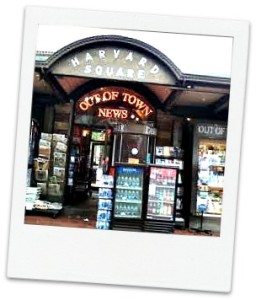
Out of Town Newsstand
Your tour starts outside the Harvard Sq. MBTA (subway) Station.
Notice the Out of Town Newsstand which is a Cambridge landmark.
The newsstand since it opened in 1955, has been providing Harvard professors, students, and Cambridge Residence with newspapers and magazines from all over the world.
The building is a national historic landmark.
From Out of Town News walk up JFK Street (to your right if you are facing Out of Town News).
Follow JFK St. to Mt. Auburn St. and take a left down Mt. Auburn St. to the Harvard Lampoon Building at 44 Bow St.
1. Lampoon Building
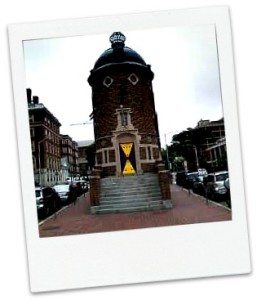
The Lampoon Building is also known as the Lampoon Castle.
The best place to view this building is by standing on the island where Bow St. and Mt. Auburn St. meet.
This building houses Harvard's comedy magazine The Lampoon, where students like Cohan O'Brien and John Updike wrote while undergraduates at the university.
John Updike also served as president of The Lampoon at his time there.
This is one of the most unique buildings on Campus.
Opened in 1909 the building is designed in the form of a human face wearing a Prussian helmet. The front door looks like a bow tie turned sideways.
Notice the Ibis on top. This is made of copper and weighs about 70 pounds. The Ibis was stolen a few times by members of Harvard University's newspaper The Crimson as a prank.
The bird is now said to have an electrified wire attached to it to prevent future thefts.
Costing $40,000 to construct in 1909, at the time the building was the most expensive headquarters for a student publication in the nation. Look to your right you will see Lowell House, the structure with the white bell tower.
This undergraduate dorm is where Matt Damon stayed while a student at the university.
Notice the bell tower of Lowell House. The tower houses 18 bells ranging in size from 22 pounds (the smallest bell) to 27,000 pounds (the Mother Earth bell).
After what is known as The Game, the annual Harvard vs. Yale football game, the Harvard team score is rung out on the Mother Earth Bell.
The Yale score is chimed on what is known as the bells of Pestilence, Famine, and Despair.
As you walk around the Lampoon Building you will notice two dates, 1909 and 1876. 1909 is when the building opened and 1876 is when the Harvard Lampoon Magazine was first published
Continue walking up Mt. Auburn St following the Lampoon Building and take a left onto Plympton St. At 26 Plympton St. you will see the undergraduate dorm of the Adams House.
2. Adams House
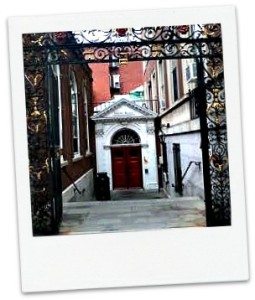
Opened in 1900 the dorm is named in honor of the United State's 2nd President John Adams and his son, America's 6th President John Quincy Adams, who both graduated from the university.
There is a suite inside Adam's House called the FDR Suite where the United States' 32nd president Franklin Delano Roosevelt (FDR) lived while a student at Harvard.
It is restored to the 1904 appearance to honor the president who stayed there as a student.
The FDR Suite inside Adams House is the only memorial to FDR on campus.
Including FDR, John Adams, and John Quincy Adams, Harvard University has had 5 other US Presidents who attended: Barack Obama, George W. Bush, John F. Kennedy, Theodore Roosevelt, and Rutherford B. Hayes for a total of 8 U.S. Presidents who attended the university.
Continue up Plympton St. to 14 Plympton St. to the student newspaper The Harvard Crimson.
3. Harvard Crimson
Founded in 1873 it was called The Magenta for its first two years, and in 1875 the paper changed its name to The Crimson when the University changed its color to crimson.
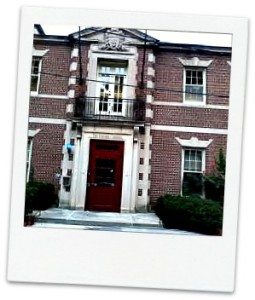
The Harvard Crimson is the only daily newspaper in the City of Cambridge and is run entirely by the university's undergraduate students.
It is also the only college newspaper in the United States that has its own printing press.
Some of the famous folks who wrote for the Crimson include US Presidents Franklin Delano Roosevelt (who served as the newspaper president) and John F. Kennedy (a business editor).
Look up to the second-floor glass door and you may be able to see the big chair inside.
This chair has small brass makers attached to the chair with the names of the former presidents of the newspaper.
Like the Ibis on top of the Lampoon Building, members of the Harvard Lampoon sometimes steal this chair as a prank and revenge for the Crimson's members' theft of their Ibis.
The chair is now chained to the floor to help thwart future thefts.
Continue up Plympton St. and cross Massachusetts Ave. and enter Old Harvard Yard through Dextor Gate.
Notice the carved inscription above the entrance and the words "enter to grow in wisdom" and on the exit/inside of the gate the words "depart to serve better this country and thy kind."
4. Wigglesworth Hall

After you enter Harvard Yard, take a left and will see the dorm, Wigglesworth Hall.
All freshmen who enter Harvard are required to stay in the Halls of Old Harvard Yard. All the freshman dorms are called Halls and the upper-class dorms are called Houses.
Some of the famous students who lived in Wigglesworth Hall include Leonard Bernstein, Senator Edward Kennedy, and Bill Gates.
Follow the path to the Henry Elkins Widener Memorial Library.
5. Henry Elkins Widener Memorial Library
This is the largest college library in the United States and is the nation's 3rd largest library. The library has 57 miles (92 km) of shelves along five miles of aisles on ten floors.
Only the US Library of Congress and the New York Public Library hold more volumes of books.
The Library is six floors high and four floors below and was built in honor of 1907 Harvard graduate Henry Elkins Widener who was killed in April 1912 at the age of 27 during the sinking of the Titanic.
The library was built with funds donated by Widener's mother Eleanor to honor her son's memory.
Look directly across the Old Yard and you will see Memorial Church. This church was built in 1932.
Inside these walls engraved alongside a sculptor named “The Sacrifice” are 373 names of alumni who were killed during WWI.
Since then other memorials have been established inside the church for Harvard Students and Alumni who were killed in WWII, The Korean War, and Vietnam.
Walk around the Widener Library and follow the path to the Dragon Statue.
6. Dragon Statue
This statue was donated to the university in 1936 by Chinese Alumni in honor of the university's 300 anniversary.
The statue is made of marble and weighs 27 tons. It was carved between 1796 and1820 in Beijing and formally resided in the Winter Palace before being donated and shipped to the university.
As you continue down the path look to your right and you will see Weld Hall where President John F. Kennedy lived during his freshman year at Harvard.
Follow the path around University Hall and you will see the most famous site on campus, the John Harvard Statue.
7. John Harvard Statue
This is also known as the Statue of "three lies".
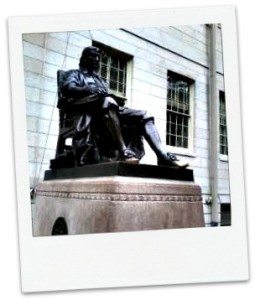
The first one is on the statue's base and states Harvard was formed in 1638. Wrong, as we know Harvard was formed in 1636.
It says that John Harvard was the founder of Harvard. Wrong, Harvard was founded in 1636 by the Great and General Court of the Massachusetts Bay Colony. John Harvard endowed Harvard with books and money in 1638.
And the third and probably the biggest lie on the statue is that the man in the chair; not John Harvard.
When the statue was designed in 1884 by Daniel Chester French there was not any likeness of John Harvard.
French used a Harvard Student by the name of Sherman Hoar as the inspiration for John Harvard's face. Sherman Hoar was a descendant of the brother of Harvard's fourth president Leonard Hoar.
The statue is one of the most photographed statues in the United States, and you will notice the worn-out bronze of the statue's left foot where millions of visitors have rubbed for good luck.
There is also the legend that if you rub/touch the foot of the statue you will acquire some of the knowledge of Harvard.
Take the path away from the John Harvard Statue and towards the street. On the left, you will see Massachusetts Hall.
8. Massachusetts Hall
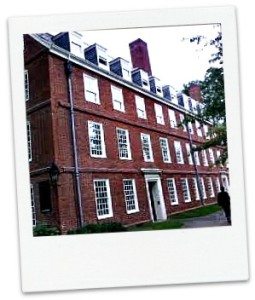
Opened in 1720, Massachusetts Hall is the second oldest college dorm in the United States.
Some of their legendary student residents include John Hancock, Samuel Adams, and America's second president John Adams.
During the siege of Boston in 1775, 640 members of the Continental Army led by George Washington were housed there.
Currently, Massachusetts Hall houses the office of Harvard's President, Treasurer, and Vice President, all of which have their offices on the first two floors and part of the third floor.
On the fourth floor are freshman dorms.
Exit the Old Yard through Johnston Gate.
9. Johnson Gate
Opened in 1890, Johnston Gate was the first gate constructed around Old Harvard Yard.
Johnston Gate cost $10,000 to construct in 1889-90 and was a gift to the university by 1855 Harvard Graduate Samuel Johnston.
For several hundred years, on Harvard's commencement day, sheriffs from Middlesex and Suffolk Country have entered Harvard Yard on horseback before the Middlesex Sheriff's call to order.
It has become a tradition that they enter through Johnston Gate. Another tradition at Harvard regarding Johnston Gate is that after the commencement ceremony, graduates exit Harvard Yard using only Johnston Gate.
As you exit Harvard Yard through Johnston Gate you can now consider yourself an honorary graduate of Harvard University.
After exiting Johnston Gate, cross Massachusetts Ave. to the island in the middle and you will be at the sculpture of Charles Sumner (1811-1874).
10. Charles Sumner Statue
He was a lawyer, abolitionist, orator, and US Senator from Massachusetts.
One of the many things he is known for is while a US Senator he was an incident that took place on the Senate floor when he was arguing against the Kansas/Nebraska Act.
This was an 1854 legislative act that would allow the expansion of slavery in the new states of Kansas and Nebraska.
On May 20th, 1856, Sumner was auguring against the Act, and during his diatribe, Sumner called US Senator Andrew Butler from South Carolina a slave pimp and went on a tirade against the senator and his state of South Carolina.
During the tirade, he mocked Butler's manner of speech and physical mannerisms as Butler previously suffered a stroke which left him physically impaired.
Two days later, US Congressman Preston Brooks, the cousin of Senator Butler walked on the Senate floor and approached Sumner.
As Sumner rose to meet the Representative, Preston beat Sumner nearly to death with a cane until the cane finally broke.
The beating rendered Sumner unconscious on the Senate floor. It took almost two years before Senator Sumner recovered from the beating.
The event showed how divided the United States was at that time over the issue of slavery.
Continue across Massachusetts Ave. , take a right and follow Massachusetts Ave. and you will be outside the Cambridge Burial Ground (1635).
11. Old Burial Ground
This burial ground was the only burial ground in Cambridge for nearly 200 years and includes a cross-section of Cambridge residents from paupers to Harvard presidents.
Like all the old burial grounds, there are many more bodies beneath than the 1218 headstones above, as many of the headstones did not survive the centuries and some of the earliest burials were unmarked.
The oldest headstone in the burial ground is that of Anne Eriton which dates to 1653.
The tomb of John Vassel is the most elaborate in the burial ground and contains 25 caskets and including the body of Andrew Craigie who was the first Apothecary General of the Continental Army. He was also a former owner of the Longfellow House on Tory Row.
Craigie also developed much of what is known as East Cambridge and also organized the construction of the Canal Bridge which connected East Cambridge to Boston.
The bridge was later rebuilt as the Charles River Dam but is also known as Carigie's Bridge.
The Old Burial Ground also contains the remains of 8 Harvard presidents including Harvard's first president Henry Dunster.
It's also home to the remains of 19 Revolutionary War Soldiers including John Hicks, William Macy, and Moses Richardson who were buried there after the first Battles of the American Revolution on April 19th, 1775 in Lexington and Concord.
The burial ground also houses the tomb of the Dana Family. Richard Henry Dana, Jr. was an abolitionist who worked with Charles Sumner.
Continue up Massachusetts Ave. and once you cross Garden St. look down on the sidewalk and you will see a series of horseshoes embedded along the sidewalk of Massachusetts Ave.
These show the route that William Dawes, the second rider with Paul Revere on his midnight ride took on his way up to Lexington, MA on the night of April 18, 1775.
The ride to "Midnight Ride" by Paul Revere, William Dawes, and others which warned the towns along the way that the British Troops were on the move resulted in the start of the American Revolution in Lexington/Concord on the morning of April 19, 1775.
Cross at the crosswalk ahead and you are at the gates of Cambridge Common. Rather than walk through the gates, take the sidewalk to the left along Garden Street.
12. Cambridge Common
This 16-acre park was where George Washington and the Continental Army camped in 1775 while British Troops occupied Boston until March 1776.
The first site you will see when entering the Common is a memorial for the Irish Famine which was dedicated on July 23, 1997, by then-Irish President Mary Robinson.
The sculpture was created by Maurice Harron a resident of Derry, Northern Ireland who has sculptures in Ireland, The UK, and The United States.
Continue walking through the Common keeping Garden Street on your left and you will come to a series of cannons.
These cannons were abandoned at Fort Independence (also known as Castle William) on March 17, 1776, when the British Troops evacuated from Boston.
There is also a plaque to Henry Knox, a Boston and bookseller before the American Revolution, he would become the first Secretary of War under President George Washington.
Henry Knox in January of 1776, dragged cannons and other military supplies from the captured British Forts Ticonderoga and Crown Point in Upstate New York and led the mission to carry the 60 tons of cannons and other arms on ox-drawn sleds 300 miles across snowy and frozen ground to Boston.
What was expected to take two weeks, took six weeks as the caravan of men where faced storms and delays as the cannons broke through the ice and got stuck in the mud and snow, but in the end, they were able to deliver the munitions to Boston.
The cannons were placed on Dorchester Heights, (the hills surrounding Boston) on the night of March 16, 1776.
When the Occupying British Troops woke the next morning on March 17th, they realized they were surrounded by artillery and withdrew their ships to Halifax and retreated out of Boston.
The siege of Boston was ended as a result. March 17th is a holiday in Boston called Evacuation Day as a result of the efforts of Henry Knox and his men.
Henry Knox went on to be in charge of improving the defenses in Rhode Island and New York during the American Revolution where in New York he met Alexander Hamilton who was the commander of the local artillery.
They would remain close friends until Hamilton died in 1804.
Knox would later become the first Secretary of War under George Washington.
Henry Knox died in 1806 at the age of 56 after swallowing a chicken bone which caused an infection that killed him three days later on Oct. 25th.
Also located in the area of the cannons and marked with a plaque is the Washington Elm.
Legend has it (although is disputed) that under this tree on July 3, 1775, General George Washington took control of the Continental Army.
The army struck camp there and stayed until March 1776 when British Troops evacuated Boston.
The original tree lived about 210 years and finally fell in 1923. The tree was cut up into 100 pieces and sent to all the US States and their legislatures.
Other pieces were sent to fraternal organizations throughout the US and root shoots were also sent throughout the nation, and some still live today.
The cross-section of the tree was sent to Mt. Vernon, George Washington's plantation in the state of Virginia.
Turn around and head back down the sidewalk, you'll see a white church to your right across the street.
13. Christ Church
This 1759 church was formed by the members of King's Chapel in Boston who lived in Cambridge.
This church provided church of England Services to students attending Harvard and was designed by Peter Harrison who also was the architect of Boston's King's Chapel.
During the American Revolution, the church which sits across the street from the Cambridge Common where the Continental Army was camped out at the start of the war, soldiers camp there fired shots at the then Loyalist Church.
If you walk into the front doors of the church and look above the inside door frame a musket hole is visible from that time.
Later George and Martha Washington would attend a prayer service there and as the war wore on the church was closed and the organ of the church was melted down for bullets for the Continental Army.
In April 1967, the church hosted speeches from Dr. Benjamin Spock and Martin Luther King, Jr. who were denied access to a building on Harvard's Campus.
They planned to hold a press conference against the Vietnam War. They were welcomed by the Reverend Murray Kenney. Jesse Jackson also spoke at the church in 2004 celebrating Martin Luther King, Jr. Day.
Continue walking towards Massachusetts Ave. and back to the Cambridge Burial Ground. At the burial ground, take a right down Massachusetts Ave. and cross Church Street. Follow Massachusetts Ave. and you will come to the Harvard Coop.
14. The Harvard Coop
The Harvard Coop was opened in 1882 to supply books and school supplies for the students at Harvard.
In 1916 after MIT moved from Boston to Cambridge, MIT opened a branch of the Coop to serve its students and is still present on MIT's campus today.
This Coop is one of the largest college bookstores in the United States. The store is run by Barnes and Noble today and the public is welcome to come in the shop and browse Harvard Swag and books.
However, membership to the Coop is limited only to students, faculty, alumni, and employees as well as personnel of hospitals affiliated with Harvard Medical School.
In 1882 membership cost $1.00 and that cost is the same today.
Cross Massachusetts Ave. to the Harvard MBTA Station and you will be where the tour started outside the Harvard Sq. MBTA Station and Out-of-Town Newsstand.
We hope you enjoyed your Self-Guided Tour of Harvard!
Choose a Destination... I want them all PLUS general travel tips. Amsterdam Berlin Boston Charleston Chicago Dubai Lisbon London Los Angeles Miami Nashville New York City New Orleans Paris Philadelphia Prague Rome San Francisco Washington DC
About The Author

Brian Burgess
North america, united kingdom & ireland, middle east & india, asia & oceania.
Can I take a tour of the Harvard campus?
Apr 15, 2024 • knowledge.
The Harvard University Visitor Center offers in-person tours daily. Additional tour offerings include the self-guided historical tour on the Visit Harvard mobile app, available to download on iOS and Android devices. During business hours you may purchase a Self-Guided Tour Map for $3 available in multiple languages.
Trending Articles
- What is the dress code for a Professional Education program?
- Does Harvard COOP offer a discount to Professional Education participants?
- Will I receive a physical certificate of completion after my Professional Education program?
- How should I list the Instructional Leadership Certificate (ILC) on my resume and/or LinkedIn?
- How can I apply for tuition assistance for my Professional Education program?
©2024 President and Fellows of Harvard College
On Campus Information Sessions & Tours
Registration instructions.
- Registration for a campus visit is required .
- To sign up, please select an available date from the calendar below. Multiple events may pop up when you select an available date. Click on the event labeled "On-Campus Visit" at the time that works for you, and then complete the registration form on a new page.
- Once your registration is complete, we will be in touch via email with helpful information to plan your visit and visit reminders.
- If you arrive on campus without registering, a member of our visitor team will help you to determine your best options including providing information about a self-guided tour and helping you to register for an open tour date and time.
- Sign up for an online session here - this is a 1 hour live session with an admissions officer.
- Click here to do a self-paced virtual tour of Harvard's campus.
- If you are in the area, you may stop by our office at 5 James Street from 9am-5pm Monday to Friday (11am-5pm on Wednesdays) and pick up a self-guided tour map and ask questions of the Visitor Center staff.
COVID-19 Precautions
Group visits/tours, important information for your visit.
- Special Accommodations - there will be space on the registration form to request special accommodations. Please note that we require 21 days advance notice in order to secure ASL interpreters. We cannot provide interpreters for other languages at this current time. Those requesting the use of a wheelchair must leave a current driver’s license or state ID with our Visitor Center personnel until the chair is returned.
- Most buildings are closed to the public. Public restrooms will be available in the Elizabeth Cary Agassiz House before/after the information session, and at the end of the tour at Smith Campus Center.
- At this time, it is not possible to store luggage or other personal property during your visit. We apologize for any inconvenience this may cause, especially for families who have traveled long distances to join us.
- Your registration and attendance have no bearing on the admissions process should you decide to apply.
- Guests are not permitted to record any part of the information session and/or tour.
On-Campus Visit Calendar & Registration
25 Virtual College Tours Worth Taking
Virtual college tours are considered one of the easiest, most accessible ways to learn about a school. While a more typical college tour may still be conducted in-person, the reality of that is changing. With the technological advances of the last 10-15 years, virtual tours have become a new, affordable possibility. Indeed, a virtual college tour can be an excellent way to learn about a school’s campus, programs, student life, clubs and activities, and much more.
You might be curious, how exactly do virtual college tours work? The answer depends on the school. Some virtual tours are live streams or recordings of in-person campus tours. Others are interactive maps where you can click on buildings and see what happens inside. Some will even include Q&A sessions with students. These are just some of the many ways schools show prospective students what life is like on campus. However, not all virtual college tours are created equal.
In this article, we’ll explore the world of virtual college visits, including:
- Benefits of engaging in college tours
- Similarities and differences between in-person and virtual college tours
- Different formats of virtual tours
- Top 25 virtual tours worth taking
- How to plan and make the most of your college visits
- What comes next after a college tour
Without a doubt, college visits will play an integral role in your college journey. So, let’s dive into why college visits are so important to the application process.
Why College Visits?
Before we explore virtual college tours in greater detail, let’s discuss why college visits are important to begin with. First and foremost, college tours are a way to learn about schools before you apply or even attend. Attending college is a big commitment. Therefore, taking the time to learn more about each school will allow you to feel more confident in deciding where to attend.
Secondly, the college admissions process is a time of self-exploration. By engaging in college tours, you can learn more about yourself just as you do about colleges. Maybe you will notice you like smaller campuses that aren’t in bustling cities. Or perhaps you will realize that having a lot of cultural diversity on campus is important. By learning these facts about yourself, you will contribute to your overall personal development as well as create a holistic college list.
Lastly, college visits for juniors help to put together a strong application. Many colleges request that you write a supplemental essay about why you want to attend their school. Through a visit, you can gain knowledge about the school and be able to speak passionately and specifically about why you wish to attend in your essays. This is more critical than ever since the number of applications has skyrocketed at many schools. As such, you’ll need to make sure your application demonstrates why you are a clear fit.
College visits and the admissions process
As you may have already gathered, there are two times when you might find it most valuable to visit colleges:
Before applying
Virtual college tours and in-person campus tours can help you narrow down your college list. In doing so, you will only spend money and time applying to colleges that you would really love to attend. College visits for juniors can also help them write stronger essays.
After admission to make a final matriculation decision
If you are admitted to multiple schools, a campus visit can help you feel more confident in your final decision. As a senior, you also might have more specific questions about certain activities or campus life. Getting to know the campus more can also help ease the transition into your first year. Since you’ll already know where important buildings and resources are located, your first day may not be as overwhelming!
Now that you understand the importance of college visits, let’s explore what goes into planning a college visit.
Planning your college visit
As we shared, college visits are an important part of the admissions process. However, planning in-person campus tours can be time-consuming and expensive. To begin, you and your family will need to explore what times of year are best to travel. Some common times to visit schools are during school breaks or summer vacations. However, if you hope to see more activity on campus, then try to plan your visit when classes are in session.
Next, we recommend setting up a visit with the admissions office. While you can, in most cases, visit a campus without an appointment, the appointment helps you gain access to a tour. It may even allow you to speak with an admissions officer. Ideally, you will book this appointment a few months before the visit. If you find yourself running short on time, you can also show up on campus and take a self-guided tour. Occidental College , Haverford College , and Claremont McKenna College all offer self-guided tours, whether using a printed map or a downloadable app.
The cost of college visits
Regardless of whether you pre-schedule your visit, you will need to pay for your travel including transportation, hotels, and meals. Many students try to see multiple schools in one visit to save money and time.
For some students, setting up in-person visits is difficult. Beyond the expensive nature of travel, parents or guardians may not be able to take off work or find childcare. Some high schools organize college visits for juniors, or even sophomores, where adult chaperones take large groups of students to visit schools. However, this may not be an option at your school.
If the cost and logistics required to attend in-person college tours is prohibitive, don’t worry! In the next sections, we’ll discuss the many similarities, as well as the unique benefits, of virtual college tours.
COVID-19’s Impact on College Visits
While virtual tours existed pre-pandemic, the COVID-19 pandemic made them a necessity as college campus tours were canceled. Since then, virtual tours have become more advanced and more widely available. In some cases, college virtual tours can offer as much, or more, than an in-person campus visit.
While many students still prefer in-person visits, virtual tours can be used as a tool to explore colleges earlier in the application journey. Virtual tours can also be useful to prepare for an in-person visit. If a student can spend 15 minutes taking a virtual tour and noting what buildings or parts of campus interest them most, then they can focus their in-person tour on those aspects.
Overall, virtual tours are an excellent way to visit schools that are completely inaccessible, such as ones that are too far away. Many international students use virtual college tours to explore campuses they wish to attend. Indeed, the fact that virtual tours exploded during the pandemic has raised several questions about accessibility, including the need to make more tours available in multiple languages or geared towards low-income families.
Coming up, we will explore more about the similarities and differences between in-person and virtual college tours.
In-person vs Virtual College Tours
Luckily, visiting colleges today does not require you to go to a campus. Indeed, the number and quality of virtual campus tours for students have skyrocketed in recent years. Undoubtedly, there are similarities and differences between in-person college campus tours and virtual college tours.
Similarities between In-Person College Campus Tours and Virtual College Tours
- They provide a layout of the campus.
- They allow students to get a sense of the campus architecture, including the inside of academic buildings and dorms. For example, UT San Antonio offers special housing tours for students to see where they might be living.
- Students can learn about specific academic programs. For instance, Harvard offers a specialized in-person tour for engineering and applied sciences students in addition to the Harvard virtual tour.
- They offer insight into student life on campus. Emerson College , for example, offers videos of students talking about their transition to life in Boston and co-curricular activities.
- Tours allow students to explore the available clubs and activities on campus.
- They are opportunities to hear directly from actual students about their experiences. Colgate , Princeton , and Barnard all offer virtual conversations with students.
- Students can get some of their doubts answered. Many tours offer a live Q&A with current students. Pomona ’s live virtual sessions include this offering.
Differences between In-Person College Campus Tours and Virtual College Tours
Note that depending on the school, you may or may not receive information about that school’s admissions process during a tour, whether in-person or virtual. Several schools, like Spelman , encourage students to schedule separate webinars to learn more about the admissions process, as this is not a topic covered in their campus tours.
Now that we have explored the similarities and differences between in-person college campus tours and virtual college visits, let’s look more deeply into when and how to use virtual college tours.
Understanding Virtual College Tours
When first hearing about virtual college visits, many students and families are skeptical about how useful they can be. However, college virtual tours have advanced so much in recent years that many offer a similar, if not enhanced, experience to an in-person visit.
As we discussed, there are several obvious reasons why college virtual tours are easier than in-person, including the fact that they are free and require little to no planning. In the following sections, we will discover more of the benefits and uses of virtual college tours. We will also discuss how they work and explore some of the best virtual college tours that exist today.
Are Virtual College Tours Worth It?
Yes—college virtual tours are absolutely worth your time! Indeed, virtual college tours can be a very good investment of time depending on where you are in your college admissions process. Let’s explore some ways that you can use virtual college visits to aid you in your college decision-making process:
Initial exploration of schools
As a freshman or sophomore in high school, you might not know how to prepare for the college process. Using virtual college tours, you can begin to explore schools and learn about what you like and don’t like in a college. This process can help you stay motivated to work hard as you will visualize your goals with greater clarity. You will also begin to learn what types of schools you are drawn to, which can help you build a college list faster in your junior year.
Exploring more and different schools
In the past, many students were limited to only visiting schools they could travel to. In some cases, leaving their state or country was impossible. Virtual college tours offer much more accessibility for students who cannot travel large distances. Also, since they can be completed in much less time than in-person college campus tours, virtual college visits may allow you to explore schools you had never considered. Perhaps you were only considering applying to big public schools. With virtual college visits, you can branch out and easily explore small, liberal arts colleges as well.
Narrowing down the list of schools you might want to visit in person
You might have a long college list. Ideally, you’ll want to cut it down when considering which schools to visit. This is where virtual college visits offer a unique opportunity to make the most of your time and resources. Before you get on the road, you can do a virtual tour to see if you like the campus enough to visit. Or perhaps the virtual tour helps you see which parts of campus you want to explore further, or which buildings you want to enter.
Alternatively, maybe your virtual college visits give you the confidence to know you like the school enough that you don’t need to spend lots of money on a flight in your junior year. Perhaps you will wait and see if you are admitted and visit the school afterward to decide if you want to attend.
Certainly, we can agree there are many benefits to virtual college visits. However, some virtual college tours are more interactive, engaging, and informative than others. Later, we will explore some of the virtual college tours that are worth taking.
While the quality of the tour may depend on the schools you’re interested in, how much you get out of them ultimately depends on you. We will explore how to make the most of your college virtual tours later.
What Are Virtual College Tours Like?
Now that we have convinced you that college virtual tours are beneficial, let’s look at what you can expect from them. Most virtual college tours for students have some combination of the following offerings:
Guided tour of campus
This can include a combination of interactive maps and pictures, embedded videos, informational text, and voiceovers describing what you are seeing. Some college virtual tours offer 360-degree views that allow you to click around and move through campus as if you were there, such as the University of Tampa ’s tour. Even more advanced tours offer immersive virtual reality (VR) technology which allows you to put on a headset and bring the campus to life in front of your eyes. However, VR campus tours typically require you to have your own equipment at home.
Campus highlights
Most virtual college tours for students will highlight important buildings or landmarks. These can include academic buildings, monuments, libraries, dining halls, residence halls, and the student union. By showing you these buildings, schools hope to give you a sense of what your day-to-day life may look like as a student there.
Student testimonials
Another helpful part of college virtual tours is student testimonials. Sometimes, this looks like students leading a campus tour while sharing their own experiences. Other times, schools will offer webinars for prospective students to ask questions of others. More common these days is the use of social media to share student experiences. Some schools will allow students to “take over” their social media accounts and post about their day so that prospective students can see what a day on campus is like. Consider following schools of interest on social media so you can get an insider’s perspective.
Now that you know what you can generally expect from college virtual tours, let’s explore the differences between college campus tours across schools.
How Do Virtual College Tours Work?
As the name suggests, virtual tours happen via a computer, phone, or other piece of technology. However, that can look very different depending on the school you are investigating. As we shared above, many virtual college tours for students include some kind of guided tour of campus, a list of highlights, and student testimonials. However, these items can come in very different formats.
Here are some of the formats you can expect:
Pre-recorded videos.
These can look like videos of a student giving a tour or a video of activities happening around campus. Since these are the simplest version of virtual college tours for students, they are the most common. Schools like Dartmouth , CalPoly , and Vassar all offer pre-recorded tours.
Interactive videos
Some videos let you click on buildings or landmarks as you watch to learn more. In some cases, you can even enter buildings. For example, the Harvard virtual tour lets you click through photos of the athletic center, dorms, libraries, labs, and quads. The Harvard virtual tour also includes a voiceover that provides additional information as you scroll through images.
Interactive map s
Here you’ll have a map of campus, whether flat or 360 degrees, that lets you click on landmarks to gather more information. Cornell , Bucknell , Wesleyan , and Pace all have online maps you can explore.
Live streams
This is a video that is being filmed at the same time you are watching it. Live streams sometimes offer a chance for Q&A with the student hosting. To take advantage of this, you will need to be present at the exact time the live stream is being shared. In some cases, you may need to register ahead of time to receive the link. An example of a live tour is at the University of Pennsylvania , where students register ahead of time for a one-hour, live, student-led virtual campus tour.
Live Virtual Tour vs. Pre-Recorded Tour
Take special note of the distinction between live virtual tours and pre-recorded virtual tours. Live virtual tours are being streamed as you watch them, which means you will get a better sense of what is happening right then and there on campus. Sometimes, live virtual tours include a Q&A section where you can ask questions. Meanwhile, pre-recorded virtual tours are less interactive but offer the flexibility of watching them whenever you can.
A common platform for many of these virtual college tours is YouVisit . YouVisit specializes in making virtual experiences as interactive as possible. For that reason, you may notice that many of the online virtual college tours you discover are similar in format. YouVisit’s tours tend to include interactive 360-degree maps, voiceovers, videos, and photos.
As you can tell, there are many formats and options for virtual tours. Indeed, the menu of options has exploded in recent years, in part due to the necessity created by the COVID-19 pandemic. Next, we will look more closely at when to take a virtual tour and explore some of the most helpful virtual tours worth taking.
When is the right time to take a Virtual Tour?
Virtual college tours can be useful at any stage, whether you’re already working on applications or just starting to build your college list. No matter where you are in the college admissions process, remember: it’s never too early to take a virtual tour! However, before you start exploring virtually, it’s useful to know how virtual college tours can benefit you.
Tours for sophomores, juniors, and seniors
Virtual college tours will look different for sophomores, juniors, and seniors. As a sophomore, a virtual tour might be a way to dip your toes into the world of college admissions. Since you can take virtual college tours from the comfort of your own home, this is a low-stakes way to get a feel for which colleges you’re interested in applying to.
College visits for juniors are a bit more meaningful. You may be starting to create a college list, so you’ll want to pay close attention to the different parts of the virtual tour. Consider taking notes as you go, so that when you start applying to schools you have observations from your virtual tour to look back on.
If you’re a senior, there’s another important aspect of virtual college tours to keep in mind: demonstrated interest. When colleges read your application, they often look for “demonstrated interest,” which is a way that you demonstrate that you care about the school. Colleges want to admit students who will ultimately choose that college, and one way to show that you care about a school is to attend a tour.
What Colleges Offer Virtual Tours?
In general, virtual college tours make tours accessible for people who can’t travel to the school for whatever reason. Most schools understand that not all students can visit in person and will offer some type of virtual tour—whether it’s a recorded tour, a video of the campus, or another interactive option.
So, how do you decide which ones to take? Up next, you’ll find our list of the best virtual college tours that we think are worth your time.
25 Virtual College Tours Worth Taking!
As we’ve discussed, virtual tours are a great way to get a feel for a school’s campus without having to make the trip to visit. You can take a virtual tour at almost any time—you can even take one more than once!
With that in mind, we’ve compiled a list of 25 great virtual college tours that you can embark on in lieu of a traditional college visit.
Top 25 Virtual College Tours
1. princeton university.
First on our list of virtual college tours worth taking is Princeton University. Located in Princeton, New Jersey, Princeton is ranked #1 in National Universities. Princeton’s virtual tour consists of a live-streamed Zoom webinar, where one of their tour guides will take you along with them on their campus tour. You can even ask your guide questions in the Zoom chat!
2. Harvard University
Next on our list of best virtual college tours is Harvard University, located in Cambridge, MA. The Harvard virtual tour is self-guided, meaning that you can click around the Harvard virtual tour to see panoramic views of Harvard’s classic New England campus at your own pace. Plus, if you’re interested in Harvard’s School of Engineering and Applied Sciences, there’s a separate Harvard virtual tour that goes into even more detail on that school’s offerings.
3. University of Pennsylvania
If you’re interested in UPenn but can’t make it out to Philadelphia, you can explore UPenn’s campus with virtual college visits. You have to sign up online to take one of Upenn’s virtual college tours since they’re led live by Penn’s student tour guides. With these live tours, every tour is different. Since different students give them each time, if you decide to take the tour more than once, you’ll likely learn something new!
4. Cornell University
The virtual college tours at Cornell are self-guided. This means that you can take yourself around Cornell’s beautiful campus in Ithaca, NY, at your own pace. At each location, Cornell supplies fun facts and details about the campus that can help you get to know the school better.
5. Dartmouth College
With Dartmouth’s virtual college tours, you can get the best of both worlds: a live-streamed campus tour and a self-guided tour. If you’re just beginning to think about Dartmouth as an option, watch their video of a pre-recorded tour to get a feel. If Dartmouth is your dream school, get to know their campus in bucolic Hanover, NH, by taking a live virtual tour led by a student—that way, you can ask all of your questions and feel more like you’re really there!
6. California Polytechnic State University (Cal Poly) – San Luis Obispo
If you want to know more about Cal Poly in San Luis Obispo, they provide a wealth of virtual college tours that you can take. Not only does Cal Poly offer the classic student-led virtual tours and prerecorded tours. They also have virtual tours of their housing and of each academic college. Even if you can’t make it out to this coastal California city, you’ll have a great feel for the Cal Poly campus.
7. Barnard College
Curious about college in the Big Apple? Take one of Barnard’s virtual college tours. Once you register for Barnard’s virtual tour, you gain access to spaces in Barnard that aren’t even available on the in-person tour. Barnard also offers an audio tour, where you can listen along to a live tour guide.
8. Pomona College
At Pomona, a college located in Pomona, California, you can explore in a multitude of ways. Pomona offers a pre-recorded virtual tour, as well as info sessions and webinars that you can attend from home.
9. University of Texas – San Antonio
Located in San Antonio, TX, the University of Texas campus at San Antonio offers a self-guided virtual tour. At each location on the virtual tour, UT offers a video accompanied by written information to help you get to know the campus better.
10. Wesleyan University
If you’re looking for an idyllic New England campus, you’ll find one with Wesleyan’s virtual college tours. Wesleyan is a small liberal arts school located in Middletown, Connecticut, and you can follow along with a current student as they “walk” you through different locations on campus.
11. Colgate University
Located in Hamilton, ME, Colgate’s beautiful campus is just a few clicks away. Colgate’s college virtual tours let students make their way through the campus on their own time, and you can supplement your virtual college visit with webinars and online info sessions.
12. Washington State University
Though Pullman, Washington would be beautiful to see in person, WSU’s college virtual tours will make you feel like you’re right there without ever leaving your house. WSU offers a personal tour, where you can direct yourself around the Washington State campus.
13. Bucknell University
At Bucknell University, you can take college virtual tours by navigating through their virtual campus map. Though you might not get a feel of Bucknell’s location in Lewisburg, PA, you’ll come away with a great understanding of their campus—they even have a specialized map for prospective engineering students.
14. Vassar College
Next on the list of college virtual tours worth doing is Vassar. Vassar is located in scenic upstate New York, but if you don’t want to make the trip, you can easily get a feeling for the campus with their many options for college virtual tours. Vassar offers an interactive campus tour, a 30-minute preview video of the campus, and even sample classes and recordings of past events.
15. Claremont McKenna College
The second of the Claremont Colleges after Pomona, Claremont McKenna offers recorded video tours and self-guided college virtual tours. Claremont McKenna is also located in Pomona, CA. So, if you’re virtually touring Pomona, you might as well give Claremont McKenna a look as well!
16. Haverford College
If you’re interested in living in Pennsylvania, you can give this lovely campus located just outside of Philly a look. Haverford offers live virtual tours where two students will take you on a “stroll” across campus, giving you advice and answering questions along the way.
17. Harvey Mudd College
If you love Pomona, CA, but Claremont McKenna and Pomona weren’t your vibe, give Harvey Mudd a try. Harvey Mudd’s college virtual tours consist of separate videos for each stop along the tour that take you through all of the most important buildings on Harvey Mudd’s campus.
18. Middlebury College
For your Middlebury College virtual tours, you get all the benefits of variety. Middlebury College, located in Middlebury, VT, has a wealth of options for students who don’t choose to do college campus tours in person. This includes virtual tours in English and Spanish, self-guided interactive maps, recorded information sessions, and more.
19. Pace University
If you want to get to know Pace University, the college offers interactive maps for both of its campuses—one in NYC and one in Westchester, NY. Using Pace’s maps, you can make the most of New York City college campus tours without ever having to navigate the subway.
20. Occidental College
Next on our list of virtual college campus tours worth taking is Occidental College. Located in sunny Los Angeles, CA, Occidental offers a self-guided virtual tour, where you can click through 360 views of the campus and hear from Occidental’s student tour guides along the way.
21. Furman University
Located in Greenville, South Carolina, Furman University also offers stellar options for their virtual college campus tours. Furman gives you the option to explore individual campus buildings with interactive and immersive technology, which includes videos from their tour guides to give you insider knowledge about each location.
22. Spelman College
If you want to tour Spelman, you don’t have to go all the way to Atlanta, Georgia. You can take one of their virtual college campus tours, where you can take your time looking at each of their buildings. Spelman’s virtual map lets you see inside and outside of many different campus locations, and get a better feel for the vibe of the campus as a whole.
23. Emerson College
Located in Boston, MA, Emerson offers lots of options for students who want to take college virtual tours. Using an interactive map , prospective students can make their way around Emerson’s campus to explore different buildings and facilities. The Emerson campus map also includes some city landmarks, like Boston Common, that are close to campus and part of the Emerson experience.
24. University of Tampa
At the University of Tampa, students can take college virtual tours to get a feel for the beautiful Tampa, FL campus. The University of Tampa offers tour videos, 360 interactive campus tours, as well as virtual visits. If you register for a virtual visit, you’ll also be able to attend a 30-minute info session hosted by an admissions counselor.
25. Texas State University
For the last school on our list of college virtual tours worth taking, we visit (or more accurately, don’t visit) Texas State. Texas State offers a virtual interactive map, a video tour led by student tour guides, and also provides a presentation where you can learn more about the academics and admissions policies at the school. You can tour both of Texas State’s locations, one in San Marcos and one just north of Austin.
As you can see, not all virtual college visits follow the exact same format. However, there are certainly many opportunities to “visit” a school without ever stepping foot on campus. Next, let’s talk about scheduling and making the most of your college visits.
How To Schedule Virtual College Visits
Now that we’ve gone over some of the best virtual college tours that you can take, let’s talk about some logistics.
For most virtual college tours, you can take them whenever you want—that’s part of why they’re so great! Whatever your schedule is, you can slide in a college visit on your own time. You could even do a bit of a virtual college visit, take a break, and come back and finish later. It’s totally up to you.
Schools may ask you for your name and email when you click on their virtual college visits. This is totally fine, and also can work to your advantage. Remember demonstrated interest? You want the college to know that you’ve taken their college campus tours, whether it’s a virtual college visit or in-person. This is especially meaningful in college visits for juniors or seniors.
Even though many virtual college visits can be done on your own schedule, some schools offer live virtual tours. If you want to take one of these college campus tours, you’ll need to sign up in advance. Even though these virtual college tours for students require a little bit more planning, it can be helpful to be in a Zoom with other prospective students and tour guides so that you can ask questions in real time.
Making the Most of a Virtual College Visit
Even though you might be taking your virtual college tours from your bed, it’s important to still make the most of it. While a virtual tour might not feel the same as in-person college campus tours, there are some things you can do to make the most of the experience.
Block out dedicated time
At first, virtual college tours for students might not seem very outwardly engaging. However, you should try and make the most of your experience. Don’t multitask, or do college campus tours while you’re watching TV. This is still a college visit, and you want to treat it as such. Immerse yourself in your virtual college visit—you want to get as close as you can to experiencing it in person!
Consider your priorities
Virtual college visits can serve different purposes for different students. Some students have no idea what they’re looking for from their college campus, and others are already set on what they want their college experience to look like. On the virtual tour, make sure to look at the school’s housing, academic facilities, recreational facilities, and transportation. If there’s a must on your list—for example, if you want a school with a main quad, or a school that’s integrated into a city—see if the school has it!
Ask questions
If you’re taking a tour on your own, think about the questions you’d have for a tour guide if there was one present. What can you learn from virtual college tours for students, and what do you still have questions about? These are the kinds of things you could ask in an information session or research after your tour.
Next Steps after your Virtual Tour
Once you’ve finished your virtual tour, there are some next steps you can take to make the most of it.
If you’re just starting to build out your college list, think about what stood out most from your campus tours. Write down some big takeaways from the school, or a list of pros and cons, so you can start comparing schools that you want to put on your college list. These can be informal—something like “huge library,” or “weird vibe” is totally fine—just make sure you write down enough to remember how you felt about the school so you don’t have to take the virtual tour a second time.
If you’re ready to apply, reach out to admissions with any questions you have after the virtual college tours. Explore the application requirements at the schools you’re most excited about. See if the school has any supplemental essays that ask you why you’re interested in the school—these virtual tours can give you great talking points about the school that you might want to include in an essay.
Sometimes after a virtual tour, you might still not know how you feel about a school—that’s okay! Virtual tours are just one way to get to know a college. You can keep doing research, and take advantage of other virtual resources offered by the school.
Even More Virtual Opportunities
So what are the other ways to learn more about a school from the comfort of your own home?
Along with the virtual campus tour, many schools also offer virtual information sessions. These are Zoom calls with admissions officers who are there to provide information on the school and answer applicants’ questions. Attending information sessions can also be a way to show demonstrated interest to a school that you want to attend.
Some schools also have student testimonials, or other videos with students who can answer questions about the school. These are a great way to see what actual students think about attending the school. Many colleges also provide a way to reach students at the school with questions—email the admissions office and ask if there are students you can talk to about their experience.
Virtual College Tours – Final Takeaway
College visits for juniors, seniors, and sophomores are an important part of the college admissions process. Since the pandemic, you can go on amazing virtual college visits from the comfort of your own home. On a virtual college tour, you can get to know the campus, and see what kinds of resources the school has to offer.
There are a few different types of virtual college tours for students. Some are interactive maps, where you can click on different buildings and explore. Others provide a 360 view of various parts of campus. Some are live Zoom meetings led by student tour guides, and some schools provide pre-recorded videos that you can watch. All of these virtual tours are great options to learn more about the school, and if a school provides more than one, they’re all worth doing!
When you’re taking a virtual college tour, make sure to make the most of it. Set aside some time to really focus on the tour, keep your priorities in mind, and take notes on things that stick out to you and questions you have during the tour.
If at the end of your virtual tour, you’re sure that you’ve found your dream school, don’t hesitate to reach out to CollegeAdvisor for application guidance. Our team of experts is always here to support students in navigating the admissions process. Happy (virtual) exploring!
This article was written by senior advisor Courtney Ng and advisor Rachel Kahn . Looking for more admissions support? Click here to schedule a free meeting with one of our Admissions Specialists. During your meeting, our team will discuss your profile and help you find targeted ways to increase your admissions odds at top schools. We’ll also answer any questions and discuss how CollegeAdvisor.com can support you in the college application process.
Personalized and effective college advising for high school students.
- Advisor Application
- Popular Colleges
- Privacy Policy and Cookie Notice
- Student Login
- California Privacy Notice
- Terms and Conditions
- Your Privacy Choices
By using the College Advisor site and/or working with College Advisor, you agree to our updated Terms and Conditions and Privacy Policy , including an arbitration clause that covers any disputes relating to our policies and your use of our products and services.
Looking for cheaper Eras Tour tickets? See Taylor Swift at these 10 international cities.

Swifties who want to snag tickets to Taylor Swift’s colossal Eras Tour know the experience won’t come cheap.
This year, the billionaire will only visit three U.S. cities – Miami, New Orleans and Indianapolis – and prices for the in-demand shows are astronomical . For the Oct. 18 show in Miami, for example, cost of a single ticket ranged between $1,615 and $8,524 on StubHub.com as of Wednesday afternoon.
So, how else can fans see one of the world’s biggest singers? Go abroad .
In the past 30 days, searches for ‘Taylor Swift Europe tour 2024 tickets’ have increased by 300% in the U.S., indicating that some people are ready to take a long-haul flight to see the wildly popular artist live, according to travel website Islands.com .
Concert-goers who head to Europe for their Swift experience may actually save more money in the long-run . Not only are ticket prices across the pond cheaper, but many European cities, like Warsaw and Lisbon, are also budget-friendly, offering inexpensive food and lodging.
Learn more: Best travel insurance
Was the travel worth it? Beyoncé and Taylor Swift's summer concerts drew fans from afar
To determine the most affordable Eras Tour stops, Islands.com researchers compared the cost of a two-night trip, including one cheap ticket on StubHub.com, two nights at a four-star hotel, six inexpensive meals, two five-mile taxi rides, and one domestic beer. However, researchers didn’t account for airline tickets or concert merchandise.
With safety at the top of travelers' minds, the researchers also factored in the city’s safety rating out of 100.
To stay extra safe, the State Department encourages travelers to register with the U.S. embassy in the country they're visiting any time they travel abroad. That can be done at step.state.gov .
10 cheapest destinations for the Eras Tour in 2024
10. Vienna, Austria - total average cost: $1,089, safety score: 69.72
9. Cardiff, U.K. - total average cost: $1,061, safety score: 61.83
8. Lyon, France - total average cost: $1,047, safety score: 44.3
7. Lisbon, Portugal - total average cost: $1,028, safety score: 70.15
6. Munich, Germany - total average cost: $1,000, safety score: 78.88
5. Paris, France - total average cost: $971, safety score: 41.83
4. Stockholm, Sweden - total average cost: $935, safety score: 53.86
3. Hamburg, Germany - total average cost: $903, safety score: 57.51
2. Gelsenkirchen, Germany - total average cost: $749, safety score: 51.33
1. Warsaw, Poland - total average cost: $712, safety score: 72.98

Saosin announce 2024 U.S. tour (first tour with Cove Reber in 14 years)
Post-hardcore group Saosin has announced their first U.S. trek with vocalist Cove Reber in 14 years yesterday .
The band’s headlining tour kicks off on May 30 at Observatory North Park in San Diego, and it’ll conclude on June 17 at Underground Arts in Philadelphia. Tour dates can be seen below. Tickets will go on sale to the general public today (April 26) at 10 a.m. local time here .
The band said this about the trek:
“Stoked to announce of FIRST US tour with Cove in 14 years. This band has been a long journey with many Ups and Downs, and were definitely feeling UP on being able to perform these songs again. We believe we are the best version we have ever been. What better way to kick off this 4.0 chapter than with two hometown shows in SD and POMONA, Performing a super set covering all our records over the last 20 years. We need to remember what some of these songs meant and we want you all there. This will be our first time playing San Diego since 2016 and our first time playing some of these songs since 2010. We will have some exclusive merch on location. On the east coast, We will be sprinkling in a few front to back album play throughs of the beetle record at select shows.”
This summer, the band will tour alongside Hawthorne Heights. This fall, Saosin will appear at a handful of festivals, including When We Were Young in Las Vegas.
Saosin tour dates
May 30, 2024 San Diego, CA OBSERVATORY NORTH PARK
May 31, 2024 Pomona, CA FOX THEATER POMONA
June 2, 2024 Fort Worth, TX SO WHAT?! Music Festival 2024
June 4, 2024 Atlanta, GA TERMINAL WEST
June 5, 2024 Charleston,SC MUSIC FARM
June 7, 2024 Asheville, NC ORANGE PEEL
June 8, 2024 Raleigh, NC LINCOLN THEATRE
June 9, 2024 Richmond, VA THE NATIONAL
June 10, 2024 Baltimore, MD RAMS HEAD LIVE
June 12, 2024 Asbury Park, NJ ASBURY LANES
June 13, 2024 New York, NY WEBSTER HALL
June 14, 2024 Boston, MA PARADISE ROCK CLUB
June 15, 2024 Providence, RI FETE MUSIC HALL
June 16, 2024 New Haven, CT TOAD'S PLACE
June 17, 2024 Philadelphia, PA UNDERGROUND ARTS
Aug. 31, 2024 Los Angeles, CA The Torch At The LA Memorial Coliseum (California Is For Lovers festival)
Sept. 1, 2024 Phoenix, AZ The Van Buren (w/ Hawthorne Heights, Anberlin, Cartel, Stick To Your Guns, and This Wild Life)
Sept. 2, 2024 Albuquerque, NM Revel Entertainment Center (w/ Hawthorne Heights, Anberlin, Cartel, Stick To Your Guns, and This Wild Life)
Sept. 5, 2024 Memphis, TN Minglewood Hall (w/ Hawthorne Heights, Anberlin, Cartel, Stick To Your Guns, and This Wild Life)
Sept. 26 - 29, 2024 Louisville, KY Louder Than Life 2024
Oct. 4, 2024 Birmingham, AL Sloss Furnaces National Historic Landmark
Oct. 4 - 6, 2024 Princeton, AL Furnace Fest 2024
Oct. 10 - 13, 2024 Sacramento, CA Aftershock 2024
Oct. 19, 2024 Las Vegas, NV When We Were Young 2024
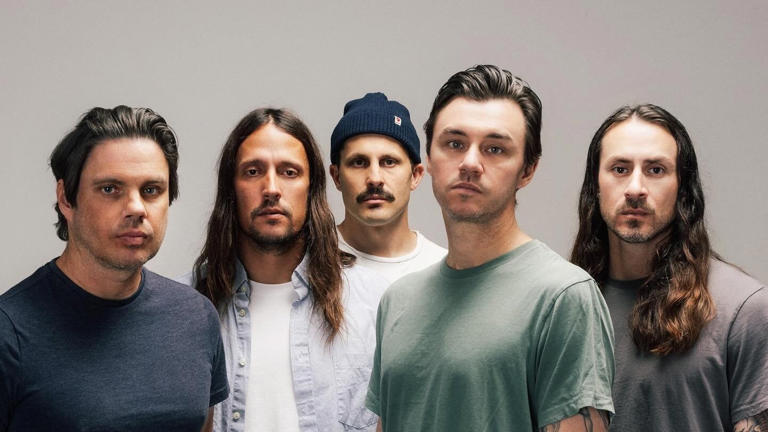
Featured Topics
Featured series.
A series of random questions answered by Harvard experts.
Explore the Gazette
Read the latest.

How old is too old to run?

America’s graying. We need to change the way we think about age.

Can we talk?

Illustration by Hendrik Dahl/Ikon Images
‘Harvard Thinking’: Forgiving what you can’t forget
Wronged and can’t move on? In podcast, a theologian, a psychologist, and a public health expert discuss why and how to heal.
Samantha Laine Perfas
Harvard Staff Writer
What is forgiveness? In order to answer that question, it’s helpful to start with what forgiveness is not .
“Forgiveness is not the same as condoning the action, excusing it, or saying it’s all right. It’s not the same as foregoing justice,” said Tyler VanderWeele, the John L. Loeb and Frances Lehman Loeb Professor of Epidemiology at the Harvard T. H. Chan School of Public Health and the director of the Human Flourishing Program. “My preferred definition for forgiveness is replacing ill will toward an offender with goodwill.”
But it’s not always that simple. Laura Thompson, a clinical and consulting psychologist, suggests that even neutral emotions toward the offender indicate forgiveness has been achieved. And Matthew Ichihashi Potts, the Plummer Professor of Christian Morals and the Pusey Minister in the Memorial Church, takes it one step further: One can still hold on to negative feelings, but make the choice to not return “harm for harm.”
“Forgiveness has been used by institutions to require people to give up their anger, sometimes anger which is justified,” Potts said. “Especially for victims of abuse, trauma, or violence, that deep pressure to forgive … can be burdensome and retraumatizing.”
Still, forgiveness is good for us.
“We see all kinds of mental health and physical health benefits as a result of [forgiveness],” Thompson said. She recognizes that forgiveness is difficult for many people, and even the term forgiveness has become loaded with expectations, guilt, and shame. Perhaps reframing forgiveness as “grudge management” creates more opportunities for people to explore these painful experiences and find healing.
In this episode, host Samantha Laine Perfas, VanderWeele, Potts, and Thompson talk about the challenges of forgiveness — and why it may be worth the effort.
Laura Thompson: There’s often a lot of pressure on the group or the party with less power to forgive so that it’ll just feel better for everybody and go away. And that just doesn’t work. That’s not forgiveness.
Samantha Laine Perfas: It’s not uncommon for individuals to hold grudges for years, if not entire lifetimes. Yet forgiving someone is good for us. It’s linked to better health, both physical and mental, and it has the power to deepen relationships in profound ways. So why is it so difficult to forgive someone when we’ve been wronged?
Welcome to “Harvard Thinking,” a podcast where the life of the mind meets everyday life.
Today we’re joined by:
Tyler VanderWeele: Tyler VanderWeele, I’m the Loeb Professor of Epidemiology at the Harvard T. H. Chan School of Public Health and also the director of the Human Flourishing Program.
Laine Perfas: He studies links between religion and health, as well as the science of happiness and flourishing. Then:
Matthew Ichihashi Potts: I’m Matt Potts. I’m the Plummer Professor of Christian Morals and the Pusey Minister in the Memorial Church at Harvard University.
Laine Perfas: He specializes in Christian theology and wrote the book “Forgiveness: An Alternative Account.” And our third guest:
Thompson: Laura Thompson, I’m a clinical and consulting psychologist.
Laine Perfas: She was a fellow at McLean Hospital and the Cambridge Health Alliance. Today, she mostly does clinical work and teaches and trains others in mindfulness through the Oxford Mindfulness Foundation and privately.
And I’m your host, Samantha Laine Perfas, and a writer for the Harvard Gazette. In this episode, we’ll talk about why forgiveness might be worth it, even if it’s hard.
Let’s kick off the conversation with some definitions. How do each of you define forgiveness?
Thompson: This is an interesting question. In the late ’90s, there was a lot of funding made available very generously to promote the research of forgiveness. And it really sparked this question of how do we think about forgiveness? There are these lay definitions that you might find in the dictionary that’ll say things like releasing resentment or anger, but sometimes included in that are things like condoning or pardoning. And from the psychological perspective, there really is a difference there; in looking at what’s happening psychologically when we forgive, it’s helpful to take a step back and think about what creates the conditions for forgiveness to even be an option. Something happens that really violates a person’s sense of either how another person should behave or should be, how the world should be, how they themselves should be. And in that, there’s this natural response of anger or anxiety or sadness, and there’s this opportunity for all kinds of ways to respond to that, and forgiveness is one. And it’s essentially a shift in the thinking, the feeling, the motivation, and the behavior about this transgression from the negative to either the neutral or the positive.
VanderWeele: Just building a bit on what Laura was saying, my preferred definition for forgiveness is replacing ill will toward an offender with goodwill; instead of wanting something bad to happen to them, wanting good to come to them. But understood in that way, forgiveness is not the same as condoning the action, or excusing it, or saying it’s all right. It’s not the same as foregoing justice. One can pursue justice and still want what’s ultimately good for the offender. It’s also not the same as reconciliation; in some cases it may be that the nature of the offense is that two people shouldn’t reconcile. But it’s wanting what’s good for them.
Potts: I think my definition is similar to the others’ but I approach the question as a scholar of religion and a moral theologian and a moral philosopher. In my pastoral experience, the association of forgiveness has been used by institutions to require people to give up their anger, sometimes anger which is justified, right? So the way I think about forgiveness is actually it’s not giving up a grudge necessarily. You might hold a grudge and still forgive. For me, I begin my forgiveness where I feel like the virtue has been abused by power, toward pressuring folks to give up their anger too prematurely, or pressuring folks to reconcile prematurely. And I’ve defined forgiveness as foregoing retaliation. I want to suggest that forgiveness tries to develop an idea of justice where we can imagine a future where we don’t need to return harm for harm or we can move on into the future without retaliation, but with still some sense of justice going forward. And so maybe that means grudges, maybe it means anger. It can include negative affect or negative emotion that might include a reluctance or refusal of reconciliation. But what there isn’t is continued retaliatory and reciprocal violence.
Laine Perfas: Just to summarize: Tyler, you are saying forgiveness is replacing ill will with goodwill; Laura, you’re saying it’s replacing ill will with either goodwill or neutral will. And then Matt, you are saying that forgiveness doesn’t necessitate getting rid of your negative emotions, it’s just foregoing retaliation. Could you talk about that a little bit more, because I’m having a hard time conceptualizing how you could forgive and yet still hold a grudge.
Potts: Yeah, I think a lot of this has to do with how we would define what a grudge is, right? In the Christian tradition, forgiveness is a virtue; in the New Testament it’s a mandated virtue: You must forgive in some ways. And especially for victims of abuse or trauma or violence, that deep pressure to forgive, when it includes a pressure to reconcile or a pressure to give up anger, can be burdensome and retraumatizing to victims. One of the reasons I’m thinking about anger with respect to forgiveness is because we know that there are classes of people who are less allowed to be angry in our culture. A lot of my work developed around hearing victims’ concerns around forgiveness, around the way it transfers responsibility for the repair of wrong from wrongdoers to victims, right? I’ve heard victims’ advocates and people in my congregation who have said, “I can’t do that. Why is it on me to do this? And if I don’t do it, I’m a bad Christian?” That might be conceived as still bearing a grudge. “I don’t want to reconcile with them because I don’t trust them.” But I would say that we have to allow and afford victims the right to decide when they can trust another person enough to reconcile with them. And so much of the Christian ethic is based in an idea of what love is and loving your neighbor and loving your enemy. The idea that anger cannot coexist alongside love, I think, is a dangerous idea. I think that anger and love can go together. And if Christianity is putting pressure on victims of wrongdoing to feel a certain way, that bothers me.
Thompson: You’re pointing at something so important, I think, which is the pressure that can be there either from a religious tradition, from members of a group, and there’s been some research showing that there are pressures that prevent people from forgiving as well as those that push people to do this outward forgiveness when the internal state hasn’t shifted. What’s happening internally? The thing that really seems to undergird a challenge in this shift into the neutral or the positive is this kind of angry rumination, grieving, the kinds of things where the mind gets really caught in cycling through something over and over again. And that’s what we do in response to trauma or to things that really violate our sense of how things should be. So that response is incredibly natural and what people do. In fact, people who are forgiving at a trait level aren’t less likely to respond that way. It’s not that people don’t ever feel those feelings. It’s that they have this capacity to make that shift and a lot of what seems to help that is the capacity to release that ruminative process, that getting really caught in cyclic thinking. And we see all kinds of mental health and physical health benefits as a result of that shift. We know that depression decreases. We know that the angry rumination and anxiety decrease. And along with that, the nervous system, the part of our nervous system that gets so activated when we are in this fight-or-flight mode has this chance to go into a sort of rest-and-restore mode. And I think it opens the door for things that can happen at the societal level or just relationships within families, within a couple, all of those levels. But I think Matt’s pointing at something just so important. It’s something that I found people writing about when we did narrative research, people did write about the pressure that they felt to forgive and to forget, having forgetting somehow linked with forgiving, that somehow the offense wouldn’t be there.
VanderWeele: The psychologist Everett Worthington makes what I think is a very helpful distinction between “decisional forgiveness” and “emotional forgiveness.” And decisional forgiveness is that commitment to replace ill will toward the offender with goodwill. And that’s within our control. It’s something we can do. The emotional forgiveness is the replacement of negative thoughts, emotions, feelings toward the offender with positive ones. And that’s not entirely within our control and may not always even be appropriate. But I think the distinction is helpful both with regard to the experiential aspects of forgiveness: how we can think we’ve forgiven and then the very next day we’re experiencing anger again. We don’t have to say, “Oh, no, that forgiveness wasn’t real.” It was real, but it was decisional forgiveness. It was that commitment to replace ill will with goodwill, but that doesn’t mean that the feelings of anger aren’t going to come back.
Laine Perfas: What is actually happening in our minds, body, spirit, when we’re struggling with unforgiveness? What is it that is being triggered?
Thompson: I think that when a person experiences a transgression it shakes everything up. It’s a violation of what we expect or think should be. And that’s very disorienting, and the natural response to that is to relate to it as a threat: This is not what was anticipated. And at some level, there’s a lack of feeling of safety or OK-ness. And that does activate our fight-or-flight response. And I think that’s what we’re seeing when people are responding to transgression not in forgiveness. And it is part of the process. There is no forgiveness without that, right? Because there would be nothing to forgive. So forgiveness is this capacity to hold simultaneously the reality of this very difficult wrong, which is charged and difficult to relate to, with the possibility of not being gripped by that; of releasing and having that transform into something that, at the very least, is at a neutral point.
Laine Perfas: We often hurt people that we’re really close to, or we’re hurt by people that we’re really close to. Is it harder to forgive that transgression when it’s someone who is so close to us?
Potts: I think it can cut both ways with an offense from a loved one. It seems even more wrong. This is someone I trust, and yet wrong has been done. And so I think the fact that the offense, the transgression seems greater, makes it more difficult to forgive. On the other hand, the empirical research also suggests that when we’re in an important relationship that has tremendous potential to contribute to our well-being longer term, it’s actually a bit easier to forgive, in those cases. So I think it’s a both/and: The transgression seems worse, and yet the motivation to forgive is often greater. I tend to think in marriages or in close relationships, it is in some ways fertile ground for developing that capacity to forgive. Because even smaller offenses can seem quite upsetting when it’s someone who is trusted or who is supposed to love you. In the context of marriage and family life and working through struggles and difficulties, that can happen repeatedly. And so there’s need for repeated seeking of forgiveness and offering of forgiveness.
Laine Perfas: One of the reasons we wanted to do this episode is because there’s been more research on forgiveness in recent years showing that there are pretty powerful health benefits. Could you talk a little bit about why forgiveness might be good for us?
VanderWeele: There have been dozens and dozens of studies that have indicated that those who are more forgiving and those who forgive specific offenses over time, improve in health and well-being. I’d say the strongest effects really are on mental health, on anxiety, on depression. The effects on physical health, there’s definitely some evidence that’s a little bit more disputed in what context for what groups of people, but the evidence on mental health is now extremely solid, and this includes now also dozens of randomized trials, the same sorts of study designs we use to look at cancer treatments or vaccines have been used to look at interventions to help people forgive who want to forgive but are struggling to do so. Those who participate have lower depression and lower anxiety as well as greater sense of forgiveness after even a few weeks. I think there’s really something to the effects of forgiveness on mental health. So to my mind, forgiveness tools should be considered even in routine mental healthcare.
Laine Perfas: How does forgiveness or lack of forgiveness affect entire communities?
Potts: One of the scholars that I engage in my book is John Paul Lederach. And although he’s a theorist and trained as a sociologist, his practical job has been going into post-accord conflict situations and negotiating peace between communities that have been doing awful things to each other, sometimes for generations. And he said all the bureaucrats feel like, “OK, there’s a treaty now, let’s all go have peace. Let’s move forward. Let’s do it.” And he said, when you go into the situations, you have to realize that nobody on the ground actually believes peace is possible because they have been so deeply hurt and so deeply wounded because people they love have been killed and places destroyed, their whole world’s turned upside-down. Why would they believe that peace is possible? They have no trust for the other side. They are completely pessimistic. And he said if you go in as an optimist telling them, “Hey, we can do this, peace is possible,” all they will hear is that you do not understand what they’ve gone through. And what they actually need someone to do is to understand how deep their pain is, which means actually engaging their pain really directly. And so what he calls it is the gift of pessimism. You have to believe, like them, that peace is not possible, and just sit with them as they process all the pain that they have to process. And he said that’s really the only way you get beyond it, right? Because the only future that can realistically be built must be built on truth about the past. Then forgiveness, insofar as it is this reckoning with the past in a serious and honest way, is really the only way forward for a peaceful future.
VanderWeele: I think there are very complicated issues with regard to forgiveness at the community level, as Matt indicated. I think another side of that is thinking about how is forgiveness operating at the societal level, just in day-to-day life? As a society, are we more or less forgiving? One might think of that as almost a preventive measure to try to avoid those massive conflicts, which do really require a more communal sense of forgiveness and of seeking of peace. I tend to think as a society we should work toward promoting forgiveness at the individual level. It’s not going to be a solution to the sorts of massive conflicts that Matt was describing, but again, it might help prevent those. So I think there’s a real question whether we’re creating a society in which ill will is spreading or in which goodwill is spreading. And I do think that practice of interpersonal forgiveness, even if it’s just with one’s spouse or friend, that moving toward that more forgiving disposition, I think, can have profound societal effects.
Laine Perfas: Are there any other examples we can point to that show how this failure shows up today?
Potts: If you want to look at what the failure of forgiveness looks like, one great example would be the American carceral system and mass incarceration in this country. If you think the purpose of punishment is to harm the offender, what you get is a criminal justice system which causes historically humongous levels of harm. A forgiving culture would not be one in which there was never discipline. But what we have in this country is a carceral system, which just causes untold misery and harm. In many cases, it seems just for harm’s sake, because returning harm for harm is what we think justice is, and then we mete that out culturally upon vast segments of the population. That’s a societal effect of forgiveness failing, I think.
VanderWeele: I very much agree with Matt, and I don’t think forgiveness is incompatible with seeking just punishment, but that needs to be oriented toward the good of the offender. I do think punishment can serve a role of expressing to the community that some wrong has been done. It can sometimes lead to reform. It can provide deterrence and restraint, but in all those cases we have to ask, is this level of punishment actually good for the offender and the community? And I think in most cases in this country, our punishments are excessive, are incompatible with forgiveness.
Laine Perfas: I like the framing of creating a culture of forgiveness. But at the same time, how do we balance encouraging forgiveness, knowing that it is beneficial for people and society, without pushing people or forcing them to do something that they’re not ready to do?
VanderWeele: I think one can encourage forgiveness by just recognizing the humanity of the other person. One can encourage forgiveness by noting the health benefits, as we discussed earlier, but I don’t think it should be ever forced. I do think it’s, again, not unreasonable to ask, however, are you struggling with anger? Do you want to forgive? If someone wants to forgive and is struggling with forgiveness, I think that’s a time where it’s not unreasonable to try to help them.
Thompson: As Matt has pointed to, there’s often a lot of pressure on the group or the party with less power to forgive so that it’ll just feel better for everybody and go away. And that just doesn’t work. That’s not forgiveness. So I think I would step back and say it’s a broad question about what are the conditions in society that enable groups of people to be safe enough to take that step to reconcile; and those are not always the same conditions that can promote that internal shift. People can make an internal shift in the absolute worst conditions. And that really is a gift that one can give to oneself. And those changes that are internal do support interpersonal changes, and those support societal changes.
I guess my suggestion from a psychological perspective would be that we can invite it in as an intention and invite in daily small habit changes. So it may be as simple as when you’re driving down the road and someone cuts you off in traffic and that huge nervous system response kicks in, right? And there can be all kinds of feelings and thoughts and behaviors associated with that, honking the horn or yelling or whatever it is. There’s that massive activation. It’s an opportunity to, as best you can, pause and invite in this other intention of allowing that to just settle and see the fear; there was this fear, there was this anger. It’s real that something terrible really could have happened. Sometimes what helps people is understanding the common humanity of the other person. I’ve gone into the other lane without seeing the person in my blind spot, right? I’ve been in a hurry. I’ve done all kinds of things. Sometimes just seeing the common humanity can be helpful in shifting this little habit, other times it’s just allowing our physiological self to calm down. Just letting that be and not kicking off the thoughts that keep that escalating and escalating. “I can’t believe that, that was just, who would do something like that?” That just intensifies it. Sometimes it’s easier to work with small things and small habit shifts and then invite those in bigger ways. There are no perfect processes. I think it’s something we’re very much grappling with in humanity.
Potts: I could build on that. I thought that was really wise, Laura. Just in response to your question, Sam, about like, how do we build a more encouraging society of forgiveness? One of the things that I thought that was really important, what Laura said, was that safety is so crucial. And because it is often vulnerable populations who experience pressure to forgive. If a vulnerable population is harmed and they’re angry about it, and then we respond saying, “Oh, be more forgiving,” what we’re basically telling them is, it wasn’t that big a deal. “You weren’t really harmed.” I think maybe ironically, the way to promote a more forgiving culture would be for us to be more patient with the anger of the vulnerable and to pay more attention and to recognize the righteousness of that anger, like where it comes from and why folks are angry. That develops the kinds of safety and develops the kinds of recognition and acts of redress that allow people to not maybe want to retaliate and not to not seek violence as a recourse. I mean, we have a very angry culture, so I feel weird saying this, but paying attention to and not stifling the anger of people who have been harmed and recognizing where the anger comes from and honoring it as natural, I think really that’s one of the first steps toward building a culture where forgiveness is more possible and doesn’t bear out as further oppression for people.
Laine Perfas: I think to do that well and effectively, it’s also important to go back to what is the proper role of anger in life. My view is that it’s to direct us to justice. I think anger that just wants harm for the other for harm’s sake is not going to be helpful, is not going to move us toward a more forgiving society. But when we recognize the wrong, when we take the wrong seriously, when we say we want to pursue a just outcome, I think that’s a really important step. So my final question is really for the listener. There might be people listening to this podcast that are really wrestling with forgiveness in their own life. Maybe they did something or maybe someone did something to them. Do you have any things that you could share that might help them think about forgiveness in a different way?
VanderWeele: I do think realizing what forgiveness is and is not is helpful. I do think some of the resistance toward forgiveness is thinking that this must entail foregoing justice or forgetting or excusing the offense. I think forgiveness really just understood as replacing ill will toward the offender with goodwill, it’s easier to swallow that, than to say, “I’m going to pretend that never happened.” And then second, I would say is that if someone wants to forgive and is struggling to do so, these forgiveness workbooks that Everett Worthington has developed and that in our research is evaluated in this large randomized trial are very helpful. It’s not for everyone. Don’t want to forgive, it’s not for you. But for someone who wants to forgive and is struggling to do so, [they] can download them freely from the Human Flourishing Program at Harvard, but I’ve found them very powerful, as have many others.
Thompson: One thing we haven’t talked a lot about is self-forgiveness. We tend to think a lot about forgiveness of another person, but as much as there may be a lot of anger outward, there sometimes can be blaming or shaming ourselves around that, for our own behavior and sometimes for things that happen to us. And so I think one piece of that is bringing in some gentleness with the self. I use mindfulness and I teach it. That’s one approach that can be very helpful. I know some people have used contemplative prayer practices, which is more in the Christian tradition and in other traditions. I think cognitive therapy can be very supportive because it really helps with shifting our relationship with what is. It doesn’t change what is. It just helps us change how we’re relating to that.
The other thing that came to mind was in a lot of studies where we’re looking at forgiveness classes or interventions, the majority of people who tended to sign up were women. The word forgiveness can sometimes be quite confronting or unappealing to men, and I’m talking a lot in Western culture because of the studies I’m talking about, but one thing that was interesting is I’ve seen researchers label their groups “grudge management” to attract men into the groups. That the idea of managing a grudge can feel much more appealing than the idea of forgiving, and so increasingly in my work I’ve moved away from the word forgiveness because it can be so charged with so many meanings in our culture. And I know that’s unpopular as we sit discussing forgiveness in this podcast, but honestly to sort of take a step back and think about it as a phenomenon, what are we discussing? And we’re discussing the capacity to hold simultaneously in our heart and in our minds this really terrible thing with the capacity for the neutral or the positive for the release from that. And I think most people do want that.
Potts: Thank you all for joining me for this really great conversation.
Thompson: Thank you.
VanderWeele: Really appreciated the conversation and discussion.
Potts: Yeah, thank you. Sam.
Laine Perfas: Thanks for listening. For a transcript of this episode and to listen to all of our other episodes, visit harvard.edu/thinking. This episode was hosted, produced, and edited by me, Samantha Laine Perfas, with additional editing from Ryan Mulcahey, Simona Covel, and Paul Makishima. Additional production support from Jill Radsken. Original music and sound design by Noel Flatt. Produced by Harvard University.
Recommended reading
- DIY Forgiveness Workbooks by Everett Worthington
- The Power of Forgiveness by Harvard Health Publishing
- Among the Brokenhearted: The Ministry of Matthew Ichihashi Potts by Harvard Magazine
More episodes
Share this article, you might like.
No such thing, specialist says — but when your body is trying to tell you something, listen

Experts say instead of disability, focus needs to shift to ability, health, with greater participation, economically and socially

Study finds that conversation – even online – could be an effective strategy to help prevent cognitive decline and dementia
When math is the dream
Dora Woodruff was drawn to beauty of numbers as child. Next up: Ph.D. at MIT.
Seem like Lyme disease risk is getting worse? It is.
The risk of Lyme disease has increased due to climate change and warmer temperature. A rheumatologist offers advice on how to best avoid ticks while going outdoors.
Three will receive 2024 Harvard Medal
In recognition of their extraordinary service
- Cambridge Tourism
- Cambridge Vacation Rentals
- Cambridge Photos
- Cambridge Map
- All Cambridge Hotels
- Cambridge Hotel Deals
- Last Minute Hotels in Cambridge
- Cambridge Business Hotels
- Cambridge Green Hotels
- Cambridge Family Hotels
- Cambridge Luxury Hotels
- Cambridge Spa Resorts
- Romantic Hotels in Cambridge
- 5-stars Hotels in Cambridge
- 4-stars Hotels in Cambridge
- 3-stars Hotels in Cambridge
- Marriott Hotels in Cambridge
- Hilton Hotels in Cambridge
- InterContinental (IHG) Hotels in Cambridge
- Pet Friendly Hotels in Cambridge
- Cambridge Hotels with Pools
- Hotels near Wellington - Harrington
- Hotels near Riverside
- Hotels near North Cambridge
- Hotels near Mid-Cambridge
- Hotels near Cambridge Highlands
- Hotels near East Cambridge
- Hotels near Cambridgeport
- Hotels near Strawberry Hill
- Hotels near West Cambridge
- Boutique Hotels in Cambridge
- Cambridge Cheap Hotels
- Hotels with Shuttle in Cambridge
- Suite Hotels in Cambridge
- Cambridge City Center Hotels
- Cambridge Hotels with Hot Tubs
- Cambridge Hotels with Concierge
- Cambridge Hotels with Laundry Facilities
- Cambridge Hotels with Gym
- Cambridge Hotels with Tennis Courts
- Things to Do
- Restaurants
- Vacation Rentals
- Travel Stories
- Rental Cars
- Add a Place
- Travel Forum
- Travelers' Choice
- Help Center
Do you have to do a guided tour or can you just...
- United States
- Massachusetts (MA)
- Cambridge
- Things to Do in Cambridge
- Harvard University
Harvard University Questions & Answers
Do you have to do a guided tour or can you just have a wander around?
Easy to wonder around Harvard Yard. Which is actually the grass area surrounded by mostly freshman dorms. Has these colorful movable chairs to rest on. Nice Shaded area. The main part of Harvard is around this area.
All of this is adjacent to Harvard Sq.(lots of activity--restaurants, shops, and often street entertainment. The T stop is right in the middle of Harvard Sq.)
Just know that Harvard is spread among the streets of this area.
A number of dorms and buildings are on the streets in Harvard Sq. not just in the Harvard Yard area. In fact the Law school is past Harvard sq. going toward Porter Sq.(not as far as Porter Sq. but in that direction). The Business School along with the athletic fields are across the Charles River.
(Harvard Stadium is there).
There are these guys wearing large straw hats that do a tour of Harvard.
Not a bad tour.(While I know the area, I did follow their tour) They are fews(or at least were when I did it). You just tip them at the end.
You could also go on an admissions tour from the admissions office--not sure when they are offered or what they are like. Of course you would then have to listen to admission information. Hope you enjoy the area!

You can wonder around on your own as well. However I would suggest get a tour of the campus for $10~15, will give you a better perspective and history of the institution.

wander round. You can go into some buildings including the church/chapel and an art gallery. Be nosey.
Wander to your heart's content [but reading up on the history of the University first would help make your wanderings more... enjoyable / informative].
no you don't have to do a guided tour, but certainly depends on your mobility and research. we googled historic info and walked around to see the various points of interest. WE also walked the approx. 5 mi to and from the mt auburn cemetery and were rewarded with a wonderful walk on Historic Brattle street. certainly a guide offers information on the spot and perhaps there may be some admissions included, but there is a lot to be said about roaming

You can definitely just walk around, although you'll learn more of the history if you do the guided tours. There's also a self-guided "Harvard Tour" app on the iPhone I once used that wasn't too bad. Can't remember if it cost anything, but even if it did, it was probably only a buck or two.

I'd say wander. There may be guided tours if you ask the Admissions department
You can wander round but the guide does t cost much and worth it for the info you get
You can wonder around. No problem. Harvard Yard is easy to see and has these colorful moveable chairs to rest on. I would wonder around there often when pushing my granddaughter in her stroller. Harvard is spread around a number of streets. It is not a self contained univ. their dormitories are mingled in with the streets of Cambridge within the vicinity of Harvard
Square. In fact the grad. business school and football field and other athletic facilities are across the Charles river.
There is a informal Harvard tour by these guys in these large straw hats that was free except for a tip at the end.
Also you might want to go on a tour from the admission office. Of course you will have to hear admission info besides the tour.
Harvard square itself is a fun place. Lots of activity. Tons of restaurants and interesting shops. Often there are street entertainers and people watching. The T has a stop right in the middle.
Browse nearby
Ask a question.
Get quick answers from Harvard University staff and past visitors.
Inside the Field: THE CJ CUP Byron Nelson
Inside the Field
Change Text Size
The PGA TOUR returns to Texas after three weeks in the Southeast. TPC Craig Ranch in McKinney, Texas, just north of the Dallas-Fort Worth area, will be hosting for the fourth consecutive season after moving THE CJ CUP Byron Nelson there in 2021. K.H. Lee won the first two editions of the tournament at TPC Craig Ranch only for Jason Day to spoil his attempt at a three-peat in 2023. Jason Day also won the event in 2010 when it was contested at Las Colinas Four Seasons, the same year Jordan Spieth made his PGA TOUR debut at THE CJ CUP Byron Nelson at just 16 years old. TPC Craig Ranch is a par 71 and plays to 7,414 yards.
The PGA TOUR uses a standardized system for determining event fields based on the current season’s Priority Ranking while also including additional exemption and qualifying categories.
Field sizes can vary by event, as can the number of event-specific exemptions. Fully exempt PGA TOUR members are guaranteed entry into all full-field events, with various conditional categories subject to periodic reshuffles based upon FedExCup Points accrued throughout the season. Categories with "reshuffle" notation indicate that a reshuffle period has occurred.
Note: An additional year of eligibility was granted to some categories because of the COVID-19 pandemic.
Scroll below to see the field list and updates.
Winner of the Arnold Palmer Invitational presented by Mastercard, the Memorial Tournament presented by Workday or The Genesis Invitational (three-year exemption) Adam Scott
PGA TOUR tournament winner (two-year exemption) Daniel Berger Ryan Brehm Cameron Champ Stewart Cink Jason Day Nick Dunlap Nico Echavarria Brice Garnett Nick Hardy Tom Hoge Mackenzie Hughes Sungjae Im Stephan Jaeger Si Woo Kim Tom Kim Kevin Kisner Jake Knapp K.H. Lee Luke List Vincent Norrman Seamus Power Chad Ramey Chez Reavie Davis Riley J.J. Spaun Jordan Spieth Camilo Villegas Matt Wallace Will Zalatoris
Career money exemption Charley Hoffman Zach Johnson
Sponsor exemption (members not otherwise exempt) Ryan Palmer Jimmy Walker
Sponsor exemption (unrestricted) Cody Gribble Kris Kim Kelly Kraft Taiga Semikawa
PGA Section Champion/Player of the Year Jarred Jeter
Past champion Sung Kang
Byron Nelson Collegiate Golf Award Winner David Nyfjall
Top 30 in FedExCup Points List Adam Schenk
Top 70 in prior year's FedExCup Points List through the FedExCup Playoffs Byeong Hun An Patrick Rodgers Taylor Montgomery Alex Smalley Thomas Detry Brandon Wu Beau Hossler Hayden Buckley Sam Ryder Ben Griffin Keith Mitchell Samuel Stevens Matt Kuchar Mark Hubbard Aaron Rai Matthew NeSmith
Top 125 in prior season's FedExCup Points List through the FedExCup Fall Alex Noren S.H. Kim Justin Suh Davis Thompson Joel Dahmen Michael Kim Ben Taylor Garrick Higgo Robby Shelton Taylor Pendrith Callum Tarren Dylan Wu Harry Hall Nate Lashley Greyson Sigg David Lipsky Justin Lower Carson Young Tyson Alexander Kevin Streelman Chesson Hadley Christiaan Bezuidenhout Zac Blair Aaron Baddeley Joseph Bramlett Kevin Yu Martin Laird Ben Martin Ryan Moore Matti Schmid Andrew Novak Doug Ghim Troy Merritt Carl Yuan
Top 125 (Prior season non-member) Min Woo Lee
# Major Medical Extension Maverick McNealy C.T. Pan Lanto Griffin Brandt Snedeker Jhonattan Vegas Bud Cauley Vince Whaley
Leading Points Winner from Korn Ferry Tour Ben Kohles
Top 10 and ties from previous event Wesley Bryan Kevin Tway Chan Kim Parker Coody Peter Kuest
Players 2-30 from prior year's Korn Ferry Tour Points List, Top 10 from prior year's DP World Tour and Top five and ties from PGA TOUR Q-School presented by Korn Ferry Sami Valimaki Chandler Phillips Erik Barnes Jimmy Stanger David Skinns Alejandro Tosti Ben Silverman Ryo Hisatsune Max Greyserman Joe Highsmith Robert MacIntyre Hayden Springer McClure Meissner Alexander Björk Jacob Bridgeman Rafael Campos Tom Whitney Richard Hoey Bronson Burgoon Adrien Dumont de Chassart Jorge Campillo Thorbjørn Olesen Norman Xiong Kevin Dougherty Chris Gotterup Trace Crowe Ryan Fox William Furr Harrison Endycott Roger Sloan Pierceson Coody Ryan McCormick Paul Barjon Raul Pereda Patrick Fishburn Josh Teater Scott Gutschewski Nicholas Lindheim Blaine Hale, Jr.
Reorder Category - Cat. 37 thru 44. Henrik Norlander Patton Kizzire Martin Trainer Austin Cook Kevin Chappell
What Taylor Swift's new album means for her $1 billion fortune
- Taylor Swift's new album, " The Tortured Poets Department ," is almost guaranteed to be a bestseller.
- But no matter how well it does, it won't be the way Swift earns most of her money this year.
- The remaining leg of her Eras Tour is expected to add much more to Swift's billion-dollar fortune.

Taylor Swift released her new album, " The Tortured Poets Department ," at midnight, and, in what should be no surprise to anyone on this planet in the year 2024, it caused a scene.
Her album garnered millions of streams within hours. There's almost no doubt it'll top the Billboard chart like the 13 Swift albums before it.
But no matter how many platinum certifications it collects or streams it racks up on Spotify, "The Tortured Poets Department" won't be Swift's biggest money-maker this year.
The remaining leg of her Eras Tour — kicking off in Paris next month and running through December — is instead expected to be what contributes most to her fortune, which Bloomberg estimated to be $1.1 billion last year.
"Live music is the engine of the global music business," Clayton Durant, an adjunct professor at NYU Steinhardt's Music Business Program who's the founder of CAD Management, told Business Insider. "Her tour is probably going to earn 10 to 15 times more than her streaming."
Swift's Eras Tour brought in more than $1 billion in ticket sales last year over its 66 dates. By the end of this year, she's set to have played another 86. Swift's cut is unknown, but based on industry standards, she'll surely earn nine figures in 2024 from ticket sales.
Concerts don't only bring in money from ticket sales.
Pollstar estimates that Swifties spend an average of $40 a head on merch at her concerts — that adds up to about $175 million in gross merch sales last year. Swift's camp keeps the majority of that.
Bloomberg estimated that between box office and merchandise, Swift pocketed $225 million, pre-tax, from her first 57 Eras Tour dates. Career earnings from ticket sales and merchandise account for 34% of her total net worth, while earnings from music streaming and sales account for 18%, Bloomberg estimates.
Related stories
Swift isn't alone in making money on the road.
In 2021, the last year Billboard made a list of music's top earners, seven out of the 10 top money makers earned more than half of their income from touring.
But the music industry didn't always function this way. Before the advent of streaming, musicians made most of their fortune selling CDs, cassette tapes, and vinyl records .
"Physical music sales made up the bulk of artists' revenue pre-streaming, and that revenue was what enabled artists to tour. These days, the equation has flipped," Tatiana Cirisano, a senior music-industry analyst at MIDiA, told BI over email.
Streaming made listening to recorded music much cheaper. For less than the price of one CD — or for free, illegally or with ads — people could get all the songs they wanted.
"The moment Napster hit, it changed the paradigm, and it really honestly diluted the value of music," Durant said.
To be sure, Swift is still making tens of millions, if not more, on streaming and record sales each year — more than almost any other artist on the planet.
Streaming services such as Spotify pay out artists on a pro-rata model: There's a pot, made up of subscription and ad revenue, paid out to artists each year. Those with the biggest share of the platform's total streams get the biggest piece of it.
But "if you're an individual artist, you have to have a pretty massive audience to be able to earn a meaningful share of that revenue — which is paid out to you after your label gets its cut," Cirisano said.
Last year, Swift was the most streamed artist on both Apple and Spotify. One of every 78 songs streamed in the US last year was a Swift song, according to the music-data firm Luminate. She'll probably rank at or near the top again, between " The Tortured Poets Department " and a streaming lift from the second leg of her Eras Tour.
Swift is also set to earn more than most artists from physical music sales. Last year, she was responsible for one out of every 15 vinyl records sold, according to Luminate. Cirisano said Swift's rabid followers saw physical records as "a symbol of fandom" and a way to support Swift.
That said, without Eras, Swift would just be a poor centimillionaire.
Watch: Artsy CMO, Everette Taylor, tells Insider that the online art marketplace is more inclusive, and lucrative
- Main content
PGA Tour players learn how much loyalty is worth in new equity program
Players who stayed loyal to the PGA Tour amid lucrative recruitment by Saudi-funded LIV Golf are starting to find out how much that loyalty could be worth.
The PGA Tour on Wednesday began contacting the 193 players eligible for the $930 million from a “Player Equity Program” under the new PGA Tour Enterprises .
The bulk of that money — $750 million — went to 36 players based on their career performance, the last five years and how they fared in a recent program that measured their star power.
How much they received was not immediately known. Emails were going out Wednesday afternoon and Thursday informing players of what they would get. One person who saw a list of how the equity shares were doled out said the names had been redacted. The person spoke to The Associated Press on condition of anonymity because many details of the program were not made public.
The Telegraph reported Tiger Woods was to receive $100 million in equity and Rory McIlroy could get $50 million, without saying how it came up with those numbers.
Commissioner Jay Monahan outlined the first-of-its-kind equity ownership program in a Feb. 7 memo to players, a week after Strategic Sports Group became a minority investor in the new commercial PGA Tour Enterprises.
The private equity group, a consortium of professional sports owners led by the Fenway Sports Group, made an initial investment of $1.5 billion that could be worth $3 billion. The tour is still negotiating with the Public Investment Fund of Saudi Arabia — the financial muscle behind the rival LIV Golf league — as an investor.
Any deal with PIF would most certainly increase the value of the equity shares.
Another person with knowledge of the Player Equity Program, speaking on condition of anonymity because of the private nature of the dealings, said the equity money is not part of the SSG investment. That money was geared toward growth capital.
Golf.com received a series of informational videos on the Player Equity Program that was sent to players and reported only 50% of the equity would vest after four years, 25% more after six years and the rest of it after eight years.
It also reported how the 36 players from the top tier were judged on “career points,” such as how long they were full members, victories, how often they reached the Tour Championship and extra points for significant victories.
Jason Gore, the tour’s chief player officer, said in one of the videos, “It’s really about making sure that our players know the PGA Tour is the best place to compete and showing them how much the Tour appreciates them being loyal.”
Emails also were sent to 64 players who would share $75 million in aggregate equity based on the past three years, and $30 million to 57 players who are PGA Tour members. Also, $75 million in equity shares was set aside for 36 past players instrumental in building the tour.
The program has an additional $600 million in equity grants that are recurring for future PGA Tour players. Those would be awarded in amounts of $100 million annually started in 2025.
Players only get equity shares from one of the four tiers now, although everyone would be eligible for the recurring grants.
Even with equity ownership geared toward making the PGA Tour better, the concern was players questioning who got how much and whether they received their fair share.
LIV Golf lured away seven major champions dating to 2018 since it launched in 2022, all with guaranteed contracts and most of them believed to have topped $100 million.
McIlroy, playing this week in the Zurich Classic of New Orleans, was asked how much would make players feel validated for their decision to stay with the PGA Tour.
“I think the one thing we’ve learned in golf over the last two years is there’s never enough,” McIlroy replied.
AP golf: https://apnews.com/hub/golf


IMAGES
COMMENTS
Harvard Tour Ticket prices. Adult tickets for the Harvard Tour are available for US$23 for visitors aged between 18 and 64 years. For children between four and 17 years of age, tickets are available for US$21. Senior Citizens aged 65 and above can get the tickets for US$22. Infants up to three years of age do not require a ticket.
10:00 AM - 3:00 PM. 10:00 AM - 3:00 PM. Write a review. See all photos. 261. About. The Hahvahd Tour, now in its 13th season, is the most popular tour of Harvard University in Cambridge. Our guests enjoy a theatrical journey led by current Harvard students. Our tours have served over one million Harvard visitors and enjoy high marks from the NY ...
Harvard Yard & John Harvard statue. The green space between undergraduate dormitories is called Harvard Yard, which is enclosed by iron fences, walls and gates. Harvard Yard is the most iconic place at Harvard University, and is a must on any Harvard campus tour. It is one of the oldest areas that became a part of Harvard University in the late ...
Visit Harvard is a free mobile app by the Harvard Visitor Center that features a collection of self-guided tours centered around the Harvard University experience. The Visit Harvard mobile app can be downloaded by anyone with a smartphone, tablet, or desktop, to be enjoyed from wherever you might be visiting, whether it's in-person at Harvard or from the comfort of your own home.
1. Choose your date and time on our website and book risk free (cancel or change at any time). 2. Your tour guide will greet you at the starting location in Harvard Square. 3. Enjoy your student-led campus tour ending at The Harvard Shop, a student-run gift shop.
A visit to the wonderful city of Boston wouldn't be complete without taking a Harvard campus tour. After all, there's so much history there. I really wanted to visit Harvard University when I was in Boston. But I didn't actually realize you could take a tour and walk around the university. In fact, the tours are run by students. What a ...
1380 Massachusetts Ave, Cambridge, MA 02138, USA. The tour begins right outside of the main Harvard Subway Station in between the Out of Town Newsstand and the Cambridge Information Kiosk. End: The Harvard Shop, 65 Mt Auburn St, Cambridge, MA 02138, USA. The tour will end at the Harvard Shop on Mt Auburn St or at the Harvard Shop on JFK St.
Before you embark on your Harvard campus tour, it's essential to familiarize yourself with Harvard's rich history. Established in 1636, Harvard University is the oldest institution of higher learning in the United States. It was founded by the Massachusetts Bay Colony intending to educate clergy and perpetuate the Puritan faith.
Harvard University Visitor Center. Harvard University established the Visitor Center in 1962 as the front door to the University, where students greet visitors from all over the world, answer questions about campus, and provide official tours of Harvard. Email [email protected].
For all other group tour requests, contact the Harvard University Visitor Center, which offers historical campus tours led by current students. Please note that Visitor Center tour guides are happy to answer questions about their individual experiences at Harvard, but they cannot comment on or answer any questions related to admissions.
Specialties: We are to official college-campus tours what the Daily Show is to National News Networks. Our 70 minute tour highlights Harvard hot-spots through a satisfying blend of in-depth knowledge, side-splitting jokes, historical accounts, and exclusive takes on student life at Harvard. It's no wonder that The Hahvahd Tour is known as the Ultimate Harvard Experience. Established in 2006 ...
Takeaways: Harvard University Tour Review. Harvard University is the oldest university in the United States. Its campus is a collection of historic halls, dormitories, and churches. ... Is it worth visiting Harvard campus? Harvard campus is a nice destination if you have a couple of hours to spare. You will get the most from your visit if you ...
The place to start any Harvard tour, the Yard (as students affectionately know it), is the beating heart of the university. Dormitories circle the yard, enclosed by a wrought iron gate. Some of Harvard's 25 gates close in the evening, so travelers should enter and exit at The Class of 1875 Gate. Within the Yard are many historical buildings ...
Taking A Tour of Harvard University. The best way to visit the Harvard Campus is by taking a student-led tour. The tours last around 70 minutes and include a map of the campus. When I did it, a very nice student called Jack showed us around and took us to one of the libraries (so beautiful!), the science building, the dorms, and so much more.
Learn about what you will see on our self-guided Harvard University Tour or take our guided tour of Cambridge and Harvard University. ... Cost: This tour is free to take, and you get to decide what, if anything, the tour was worth when it's done. A name-your-own-price tour is a tour for anyone's budget. Duration: Approximately 2 hours. Tour ...
Harvard University. Harvard University was founded in 1636 and is a private Ivy League research university in Cambridge, Massachusetts. You can easily walk in the campus and admire the magnificent buildings, including library. We visited it in the summer, during the holiday break, and it was very quiet, really great to have a walk there.
The Harvard University Visitor Center offers in-person tours daily. Additional tour offerings include the self-guided historical tour on the Visit Harvard mobile app, available to download on iOS and Android devices. During business hours you may purchase a Self-Guided Tour Map for $3 available in multiple languages. Program Experience.
Explore Harvard from Home. Use our Virtual Tour to discover spaces that aren't even available on an in-person campus tour, such as classrooms, laboratories, residence halls, and more. Even better, it's available 24 hours a day, seven days a week, and never reaches capacity. Open the accessible version of Harvard College's virtual experience.
If the on-campus sessions are full, here are a few options for you: Sign up for an online session here - this is a 1 hour live session with an admissions officer. Click here to do a self-paced virtual tour of Harvard's campus. If you are in the area, you may stop by our office at 5 James Street from 9am-5pm Monday to Friday (11am-5pm on ...
Official in-depth campus tour of Harvard guided by enrolled undergraduate students. Ride on the Boston harbor cruise for sightseeing around the city. Including Boston Harbor Cruise Ticket. ... Whether or not visiting Harvard is worth it depends on your interests. But if you're into history at all, you'll probably enjoy it—the university ...
"I hate Harvard." We all chose Harvard because of the clout, and in the end got handed literally no dorm or "house" community, an incredibly exclusive and toxic social culture, and ridiculous semester-long comp processes just to join a fucking club. It's like Harvard has to put barriers for everything and make everything so hard to get.
2. Harvard University. Next on our list of best virtual college tours is Harvard University, located in Cambridge, MA. The Harvard virtual tour is self-guided, meaning that you can click around the Harvard virtual tour to see panoramic views of Harvard's classic New England campus at your own pace.
Swifties who want to snag tickets to Taylor Swift's colossal Eras Tour know the experience won't come cheap. This year, the billionaire will only visit three U.S. cities - Miami, New Orleans ...
Saosin tour dates. May 30, 2024 San Diego, CA OBSERVATORY NORTH PARK. ... 2024 Pomona, CA FOX THEATER POMONA. June 2, 2024 Fort Worth, TX SO WHAT?! Music Festival 2024. June 4, 2024 Atlanta, GA ...
Transcript. Laura Thompson: There's often a lot of pressure on the group or the party with less power to forgive so that it'll just feel better for everybody and go away. And that just doesn't work. That's not forgiveness. Samantha Laine Perfas: It's not uncommon for individuals to hold grudges for years, if not entire lifetimes. Yet forgiving someone is good for us.
1. Vote. You can definitely just walk around, although you'll learn more of the history if you do the guided tours. There's also a self-guided "Harvard Tour" app on the iPhone I once used that wasn't too bad. Can't remember if it cost anything, but even if it did, it was probably only a buck or two.
The PGA TOUR returns to Texas after three weeks in the Southeast. TPC Craig Ranch in McKinney, Texas, just north of the Dallas-Fort Worth area, will be hosting
Taylor Swift's Eras Tour is continuing this year — and is set to be responsible for the majority of her 2024 income. Graham Denholm/TAS24/Getty Images for TAS Rights Management; Chelsea Jia Feng/BI
The private equity group, a consortium of professional sports owners led by the Fenway Sports Group, made an initial investment of $1.5 billion that could be worth $3 billion.